July 14, 2019
Martha O'Kennon
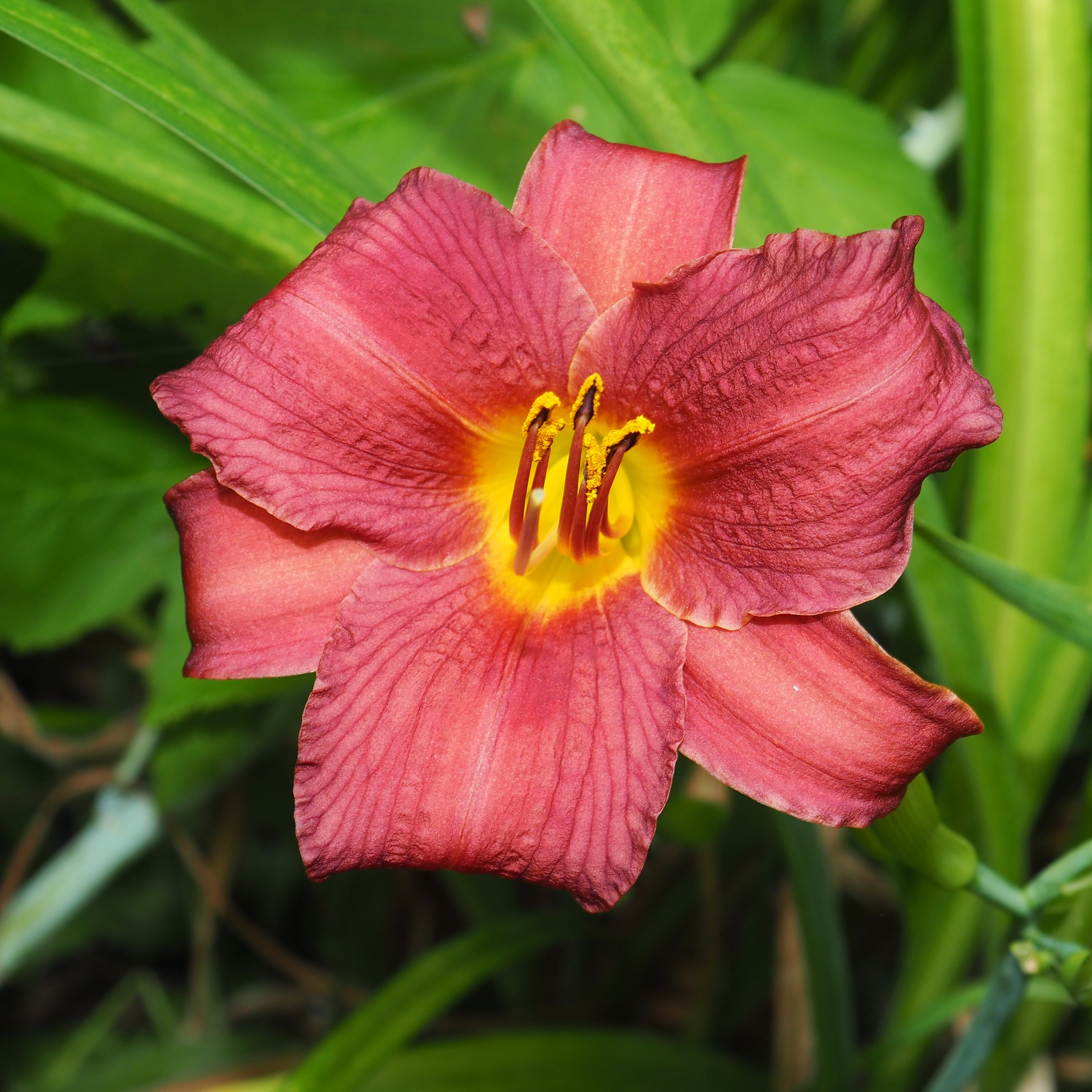
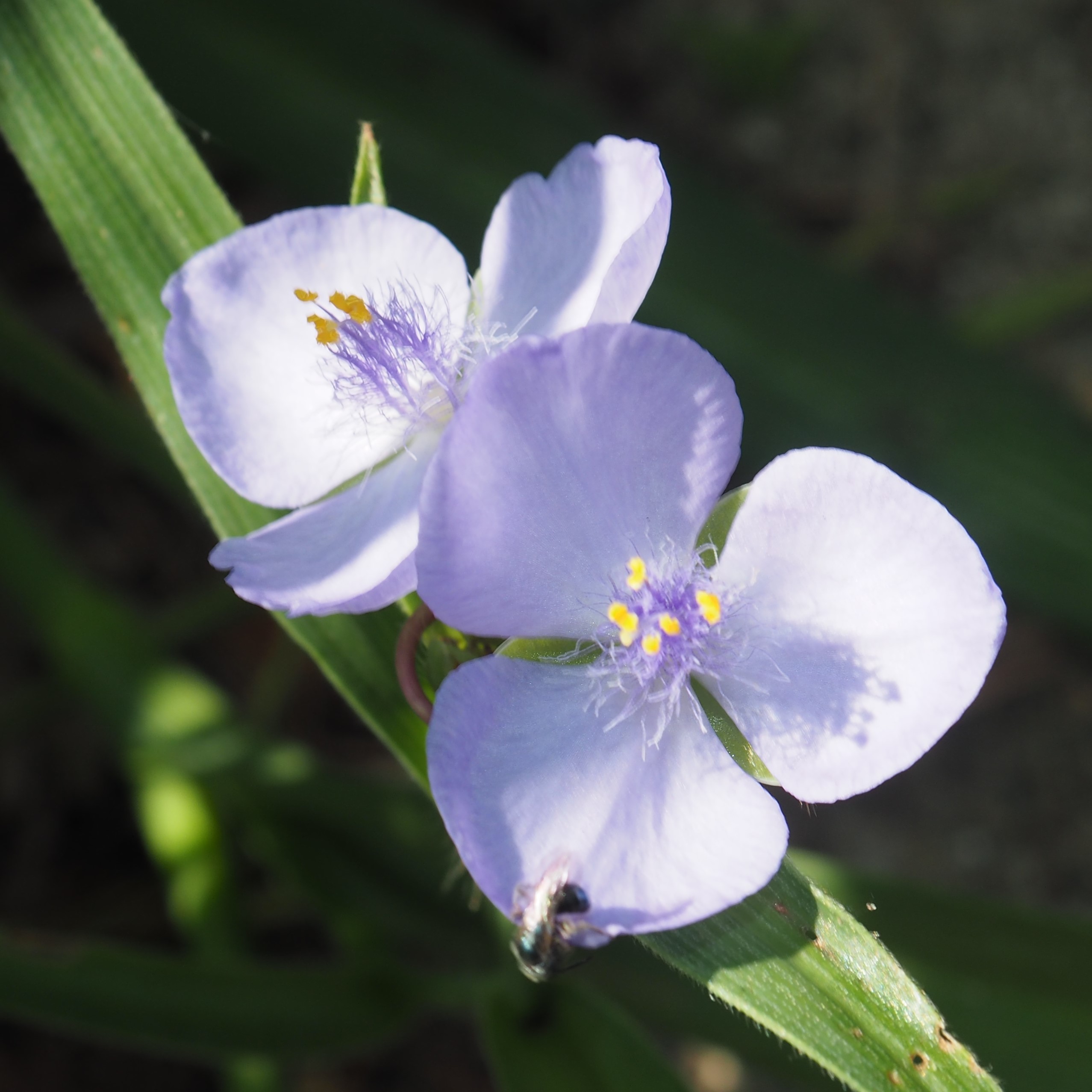
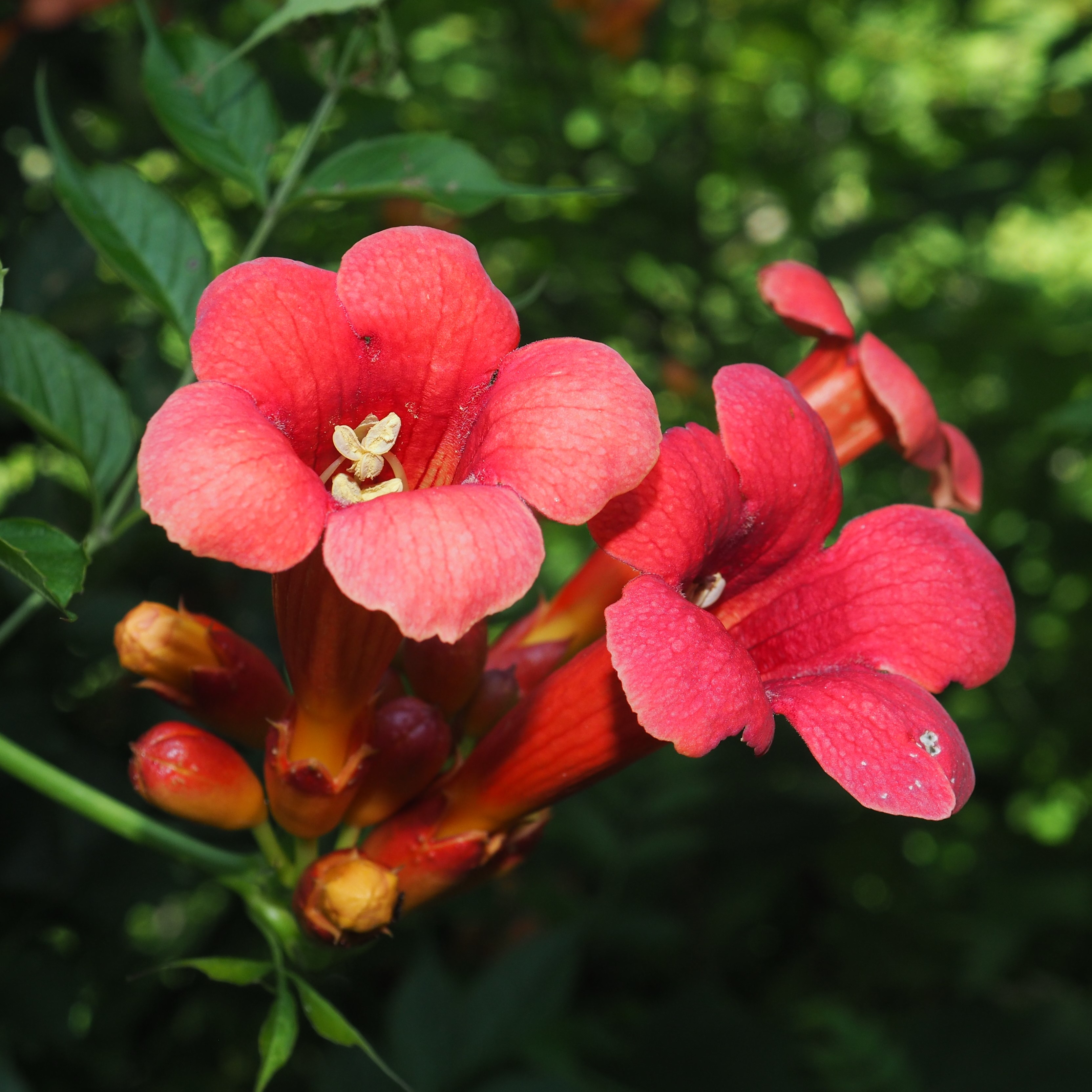
Another hottie, but Friday was a breath of cooler air. Maybe 70 F or 20-ish C in the early morning. The pond is still pretty ugly (an oxymoron, yes, I know) but I've hauled in the chicken wire - it was half in and half out of the water. So far I've counted about a dozen fish who come up to eat. But meanwhile I have a call in to a possible helper in the raccoon situation. Here is a Daylily called, I believe, "Pardon Me". I don't think it has a thing to apologize for. Next is one of the Spiderworts, a delightful pale violet one. And just a couple of days ago, the Trumpetvine finally started blooming. My neighbor likes to look at the Hummingbirds that come to the Trumpetvine for lunch, and the walnut saplings were so high. Neighbor, if you are watching this, go look out your kitchen window - you'll get a decent view of the vine. Too bad I don't get to see the hummers, so I depend on my neighbor to tell me they are here.
Remember that there is information in the name of the file for each image. You can see it by mousing over the image - look at the lower left of the screen. Or you can click on the image to get to the (usually) larger image. Then the info is displayed in the address line above. Sometimes the second click will actually display a different view of the original image.
It's been a year since I've seen this pretty red ant, Paraxenetus guttulatus. Do you remember it? The gaster looks as if it was designed by a toy inventor. The rest of it doesn't look like another ant either. Yes, you're right. This is a BUG! In its early instars, it does in fact look like an imaginative ant. It's what we call an Ant Mimic. The second image is one from last year, July 2. We have lots of those. Some bugs, some spiders. I seem to recall that there are other creatures that have evolved to look like something dangerous, unpalatable, or with some other threatening attribute. Number 3 is the adult bug, Paraxenetus guttulatus last year.
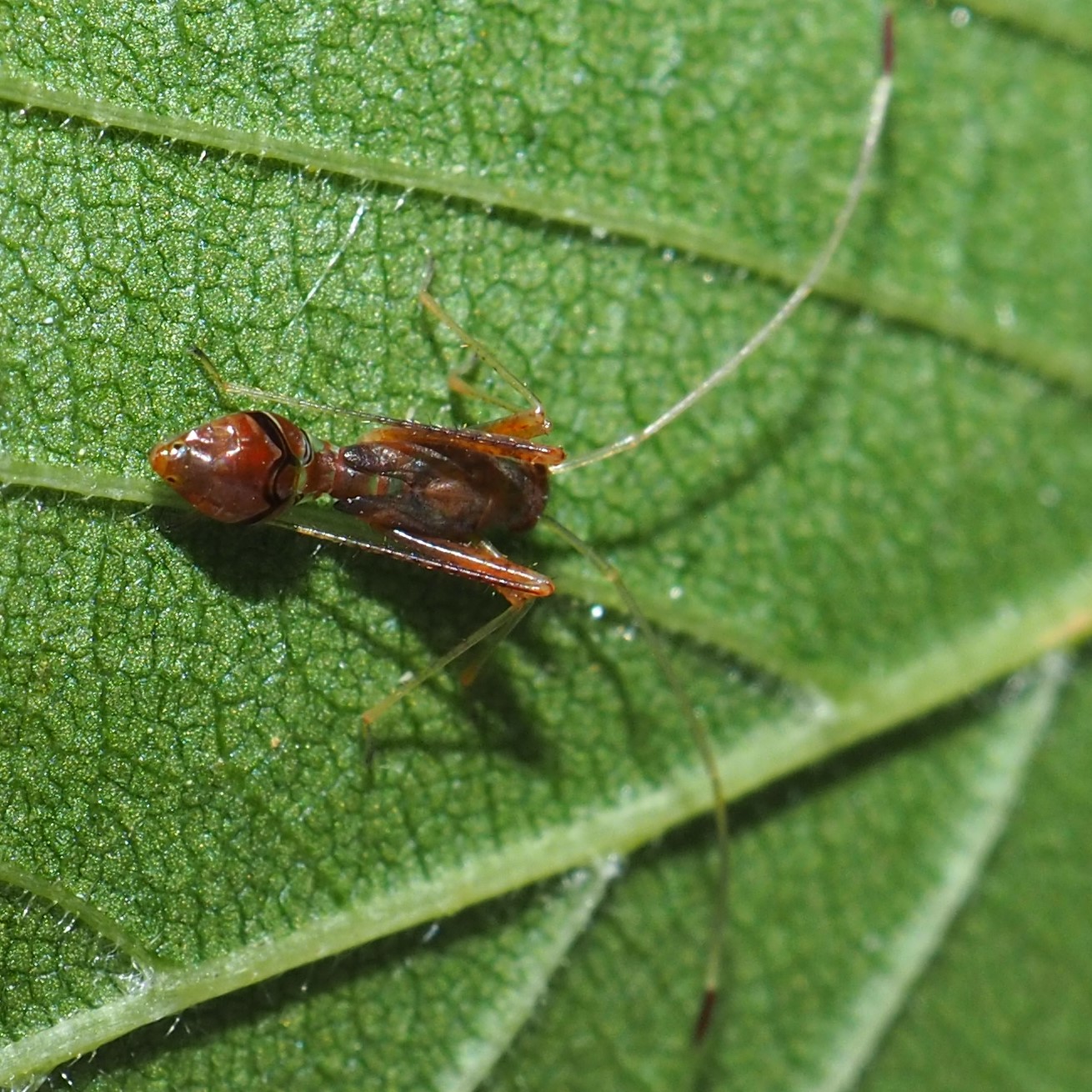
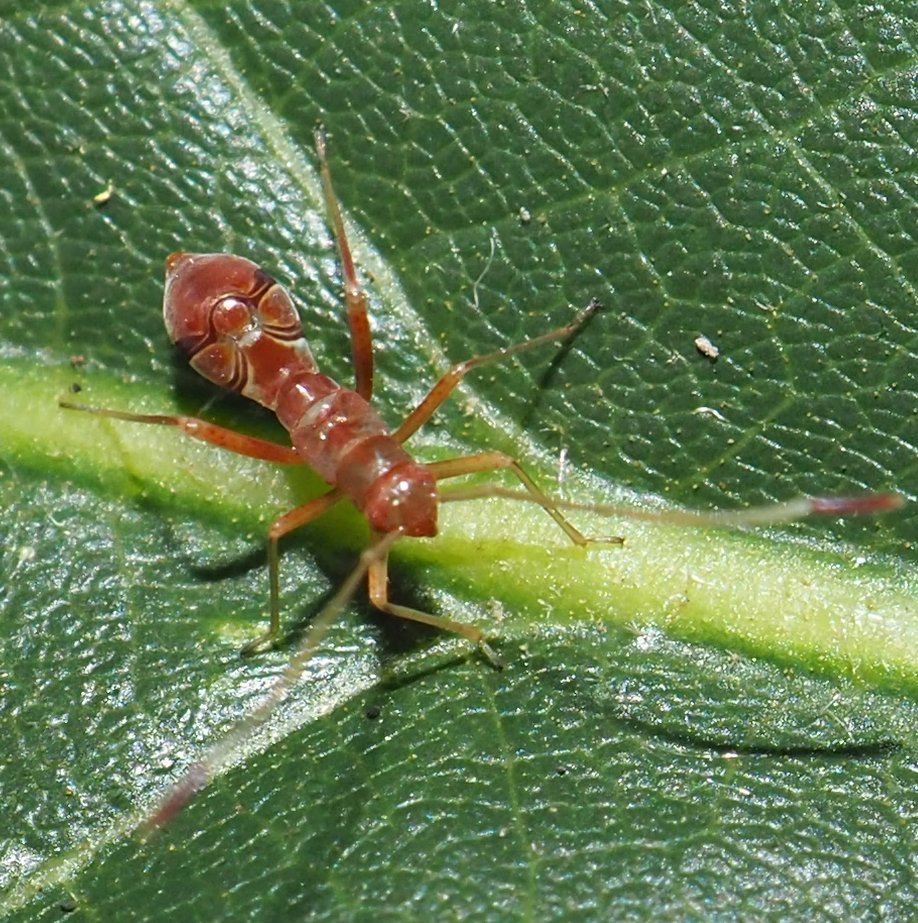
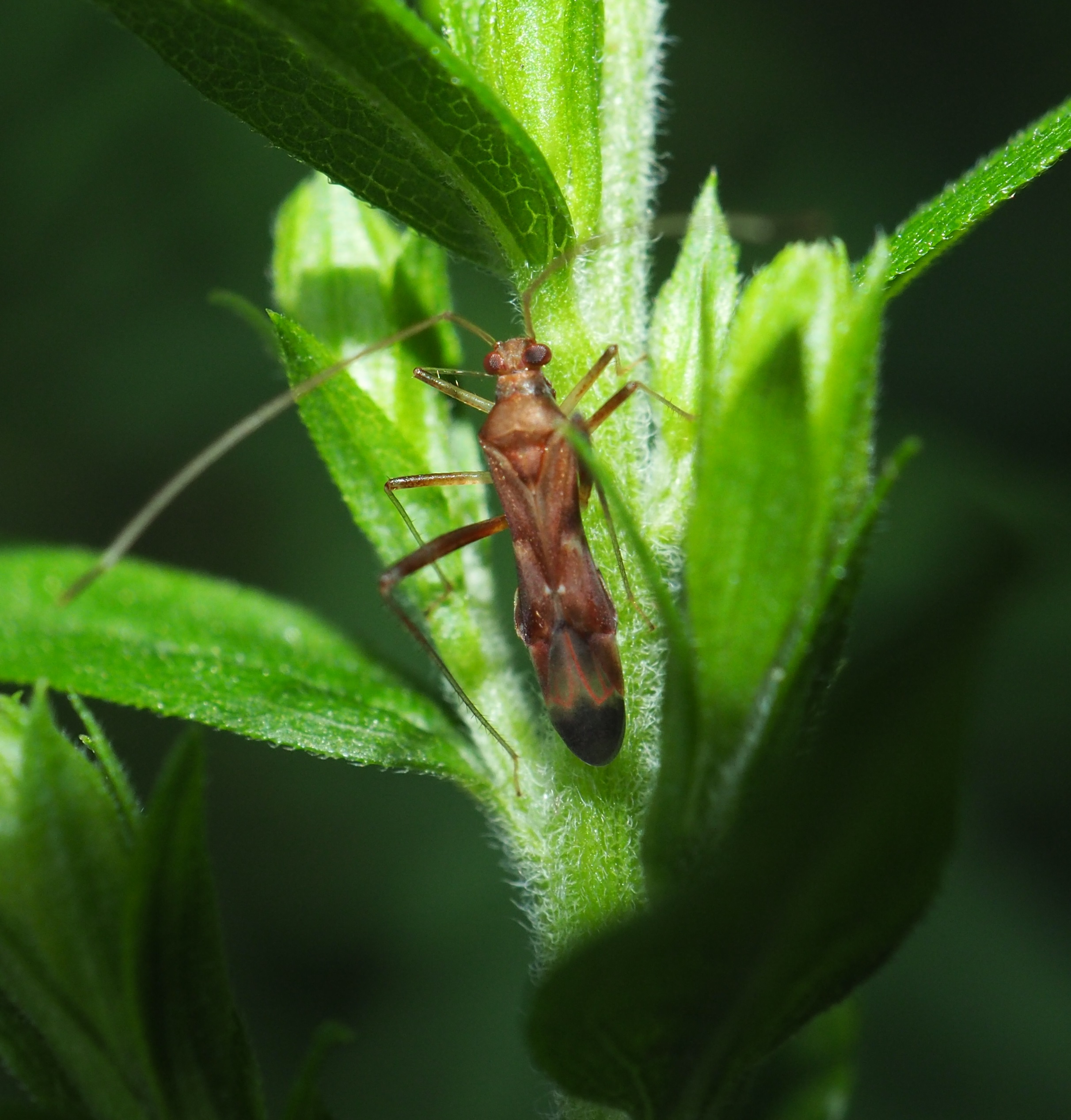
Last week I said I wasn't sure this was an ant because of the unusual shape of its gaster. It must have been a trick of the light. @peterslingsby and @alexwild on iNat said it really was Tapinoma sessile, the Odorous House Ant. Picture 2 shows one from May 29 this year. Third is another mystery ant, a red and black striped one.
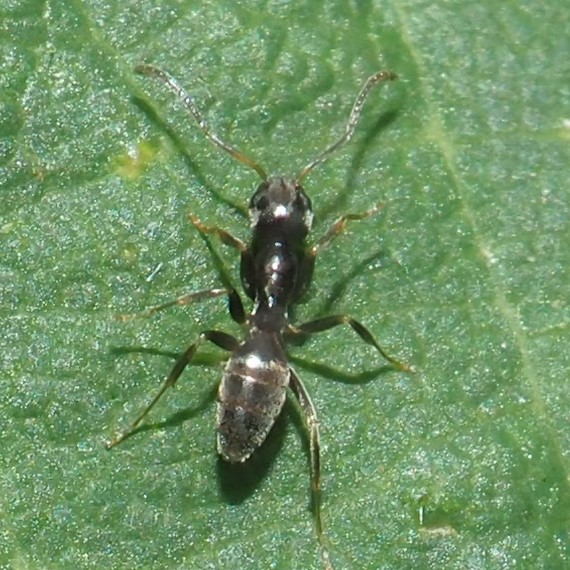

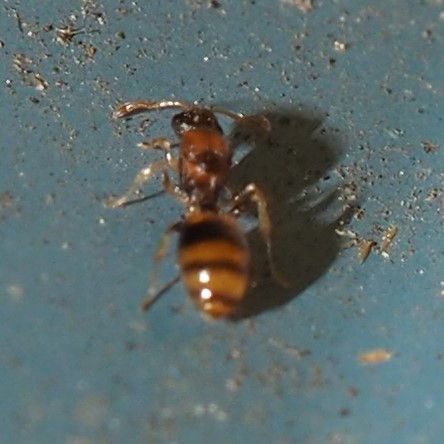
Our old friend, the Small Honey Ant, is everywhere. Here (number 2)is one that seems to have had a bit of its abdomen removed, but that's just the angle (I think). They appear in very strange poses, especially with each other. Here are two that seem to be confronting each other in friendship, hostility or curiosity. A third ant looks on, seemingly curious about the interaction.
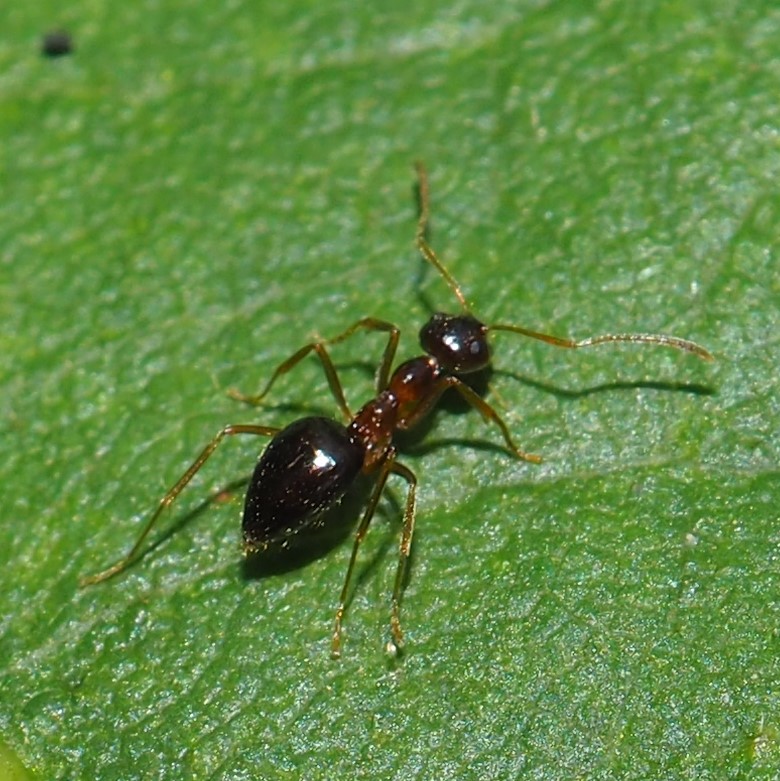
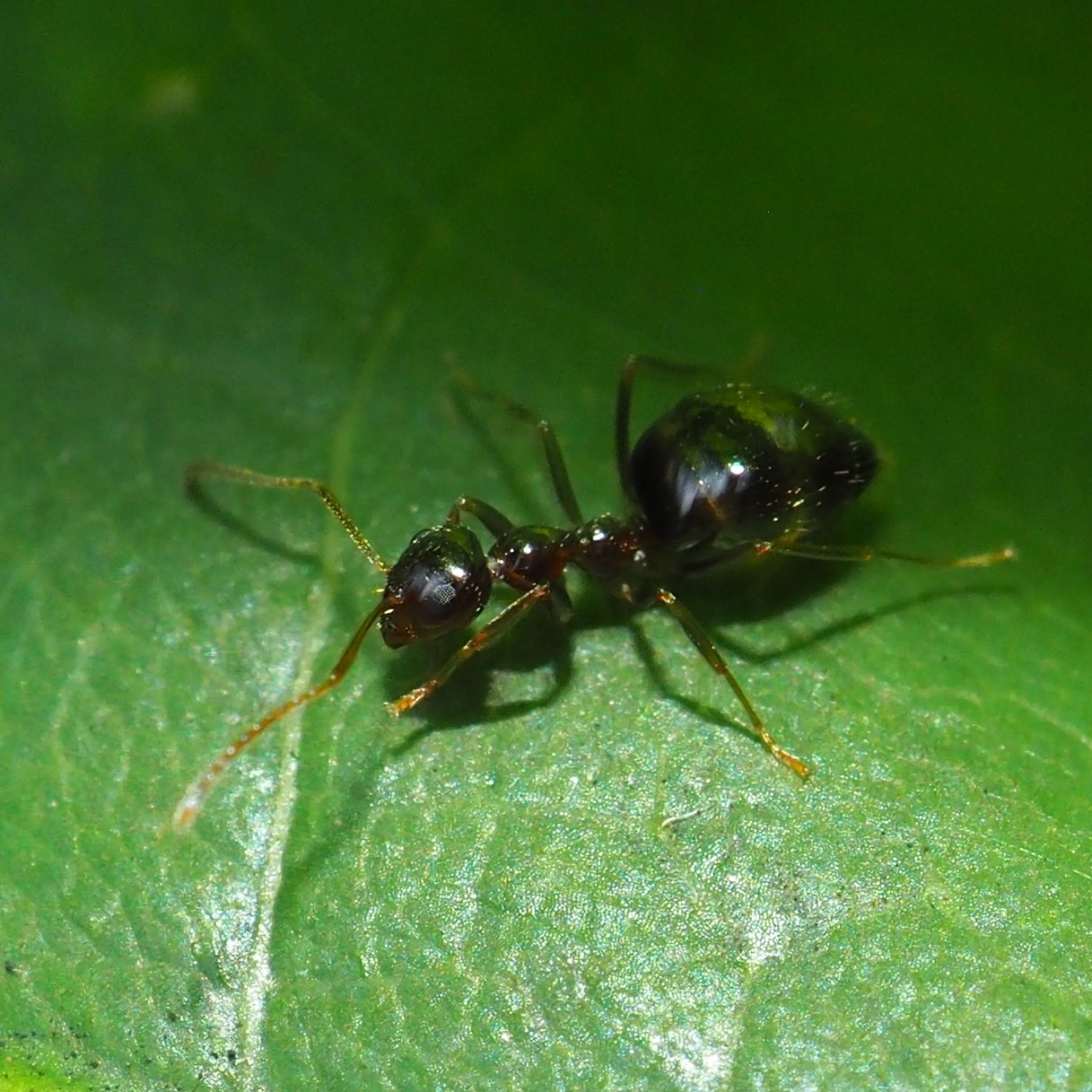
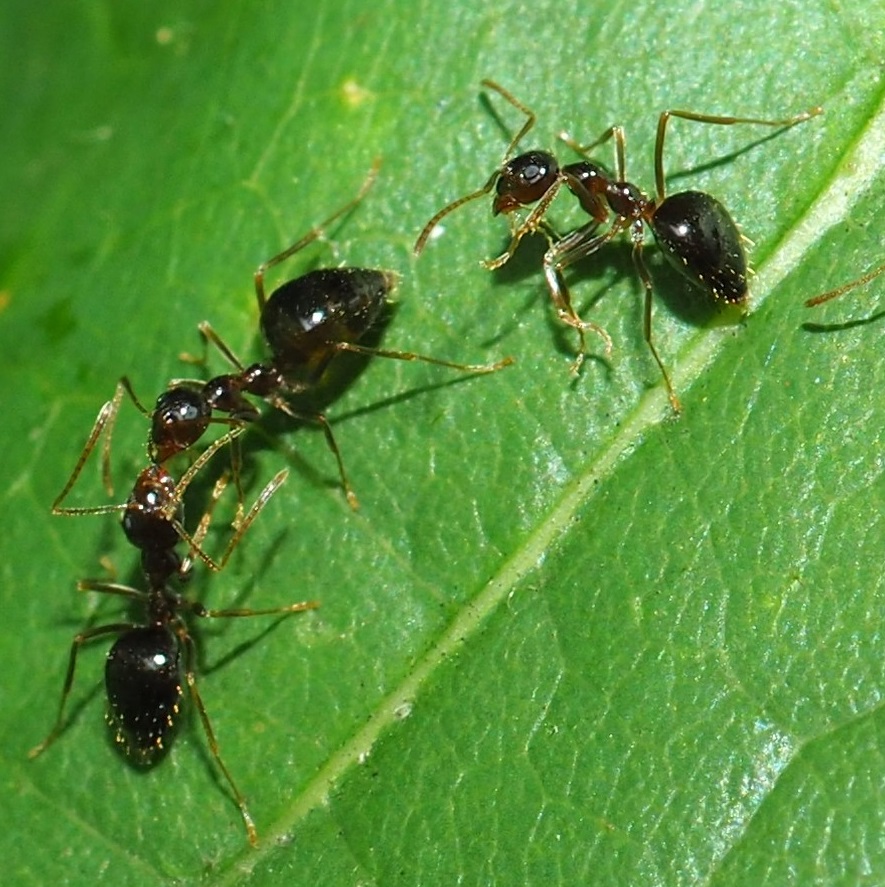
The Barklice are gathering - each day I see another, mostly ones that were here Last Year. Here is one of the scruffier kinds,
Echmepteryx hageni, also called a Scaly-winged Barklouse. Second is one of the prettier ones, Graphopsocus cruciatus. It is a bit small, so here is one from October 2018. I love its markings.
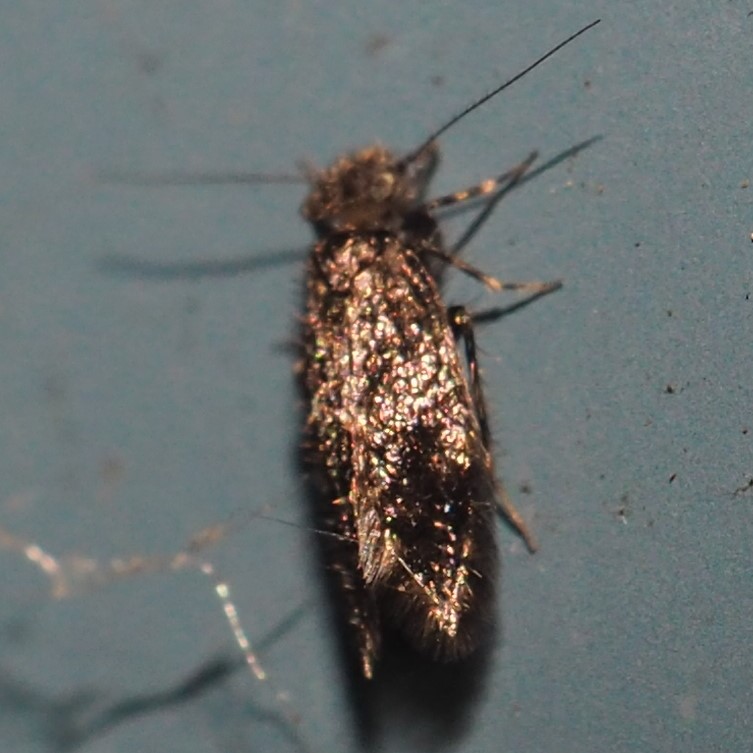
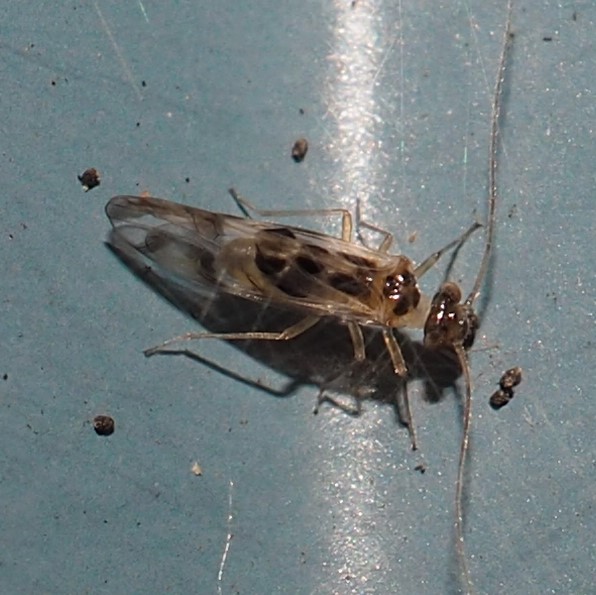
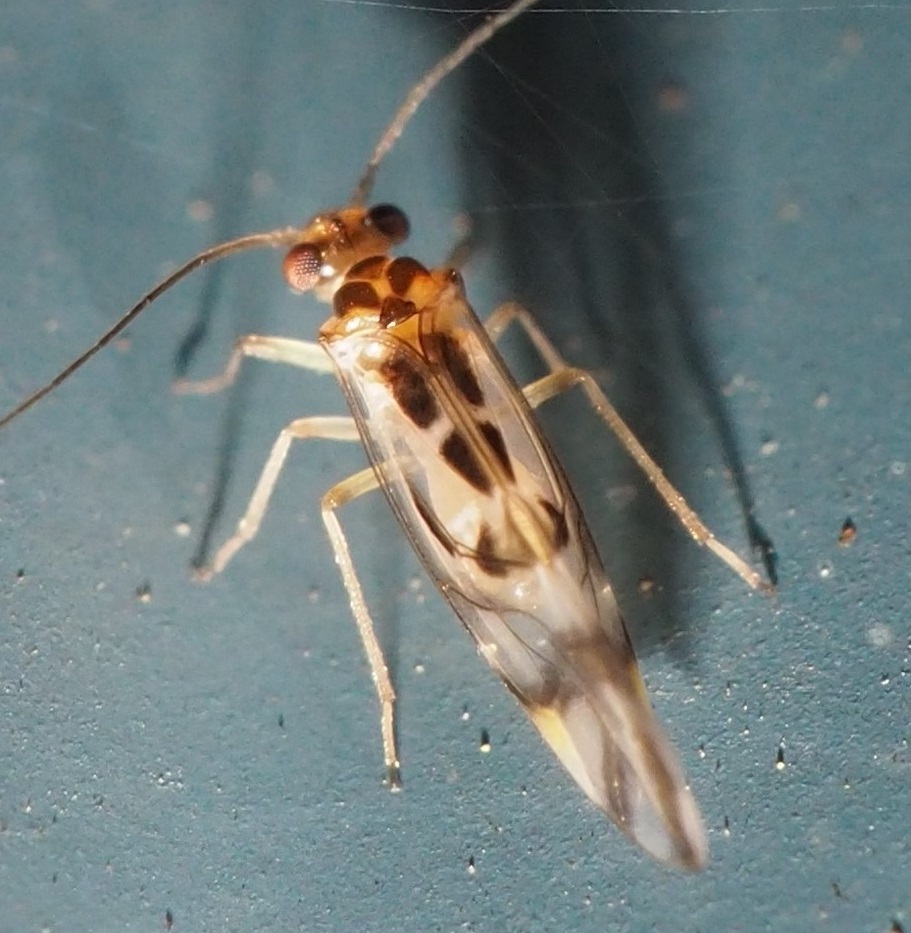
Another new Barklouse (or Psyllid). The mottled pattern in the first two images almost looks like a complex batik design. Picture 2 shows one from last week that I haven't yet learned anything about.
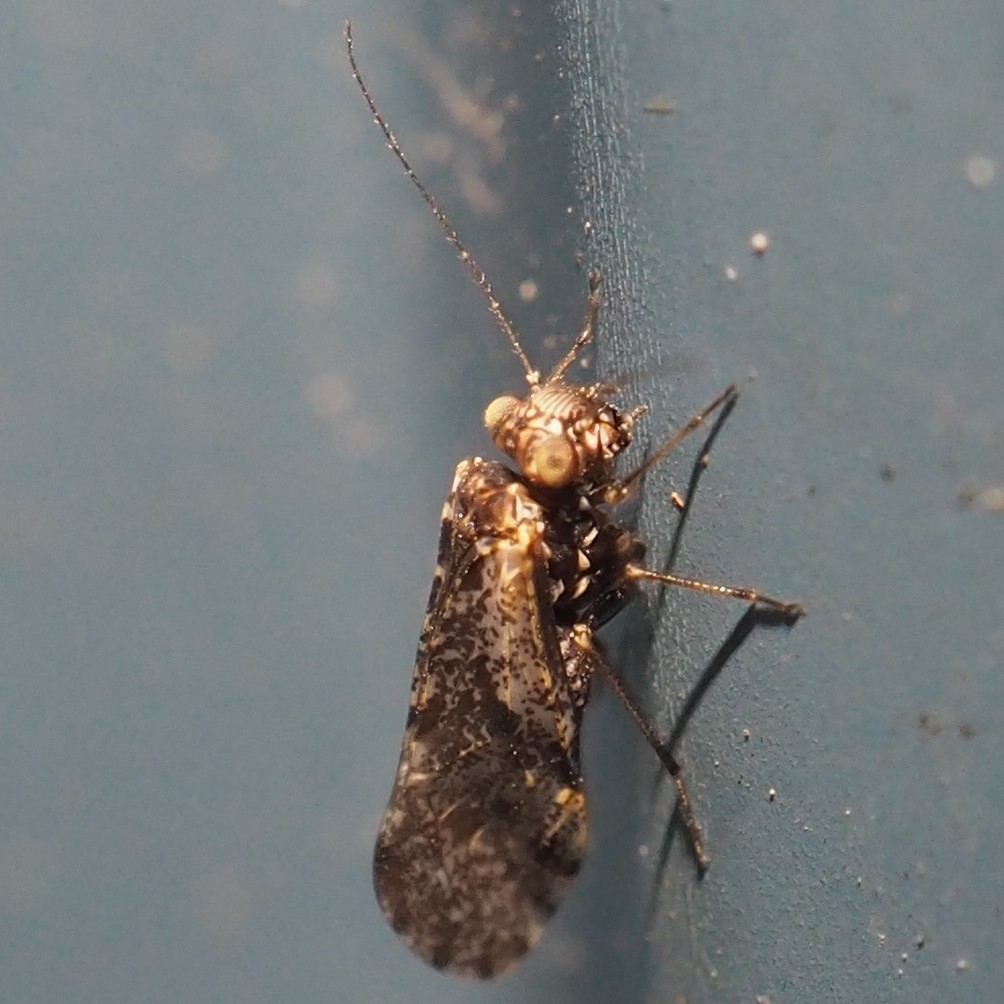
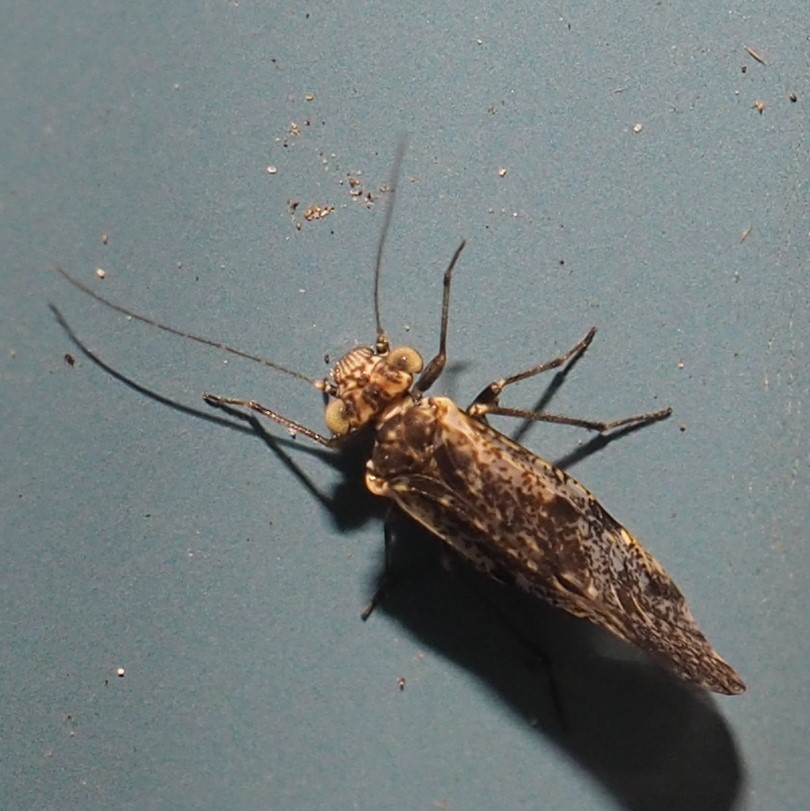
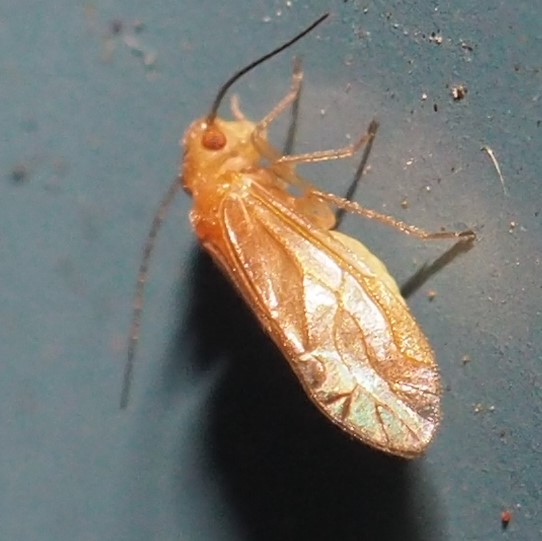
Maybe you remember this lovely Tumbling Flower Beetle, Mordellaria serval, from two weeks ago. And this one, of genus Mordella, from last week. Well, yesterday when I was cropping photos, I found this third image, which seems to be of Mordellistena trifasciata, but hasn't been identified formally yet. It seems to be the season for Tumbling Flower Beetles!
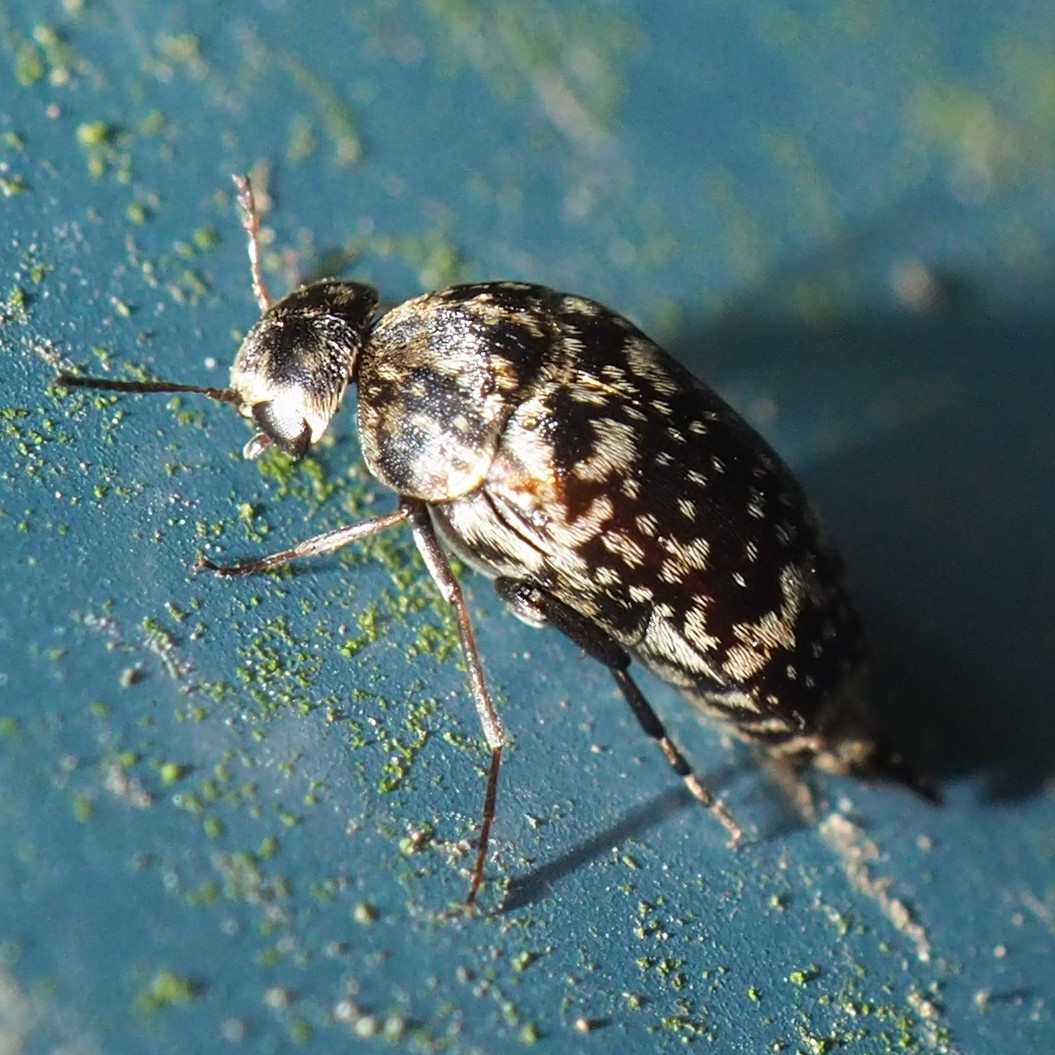
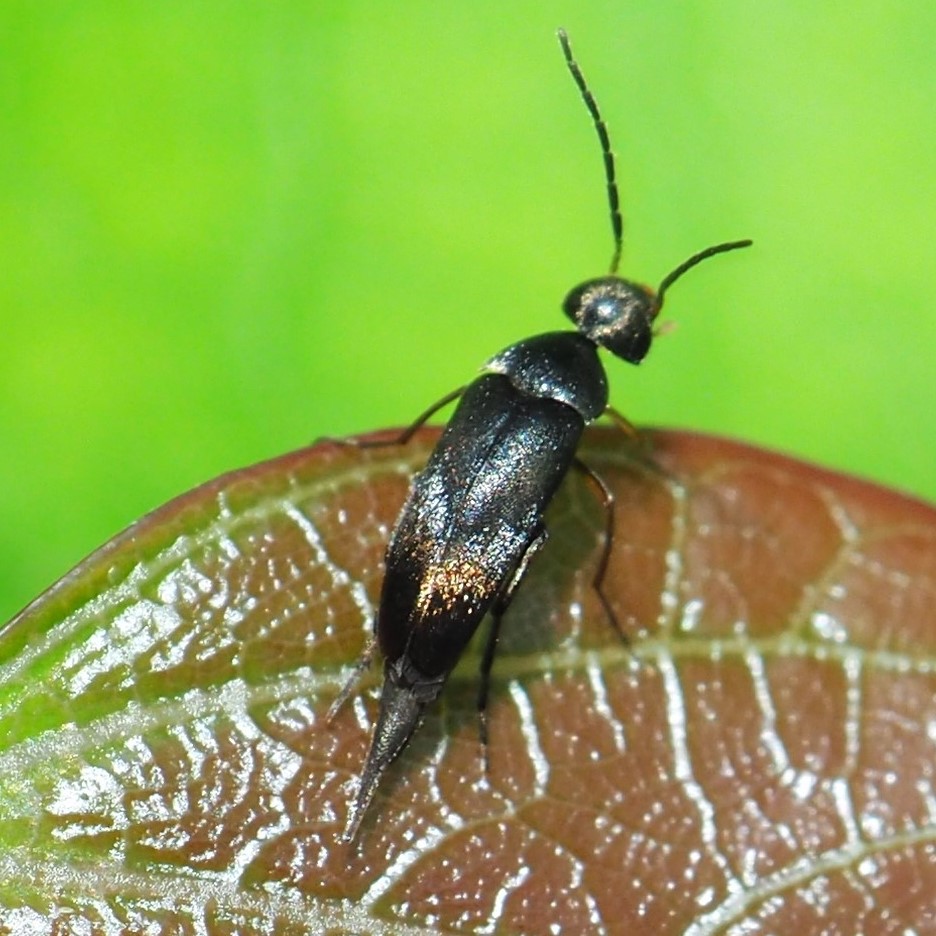
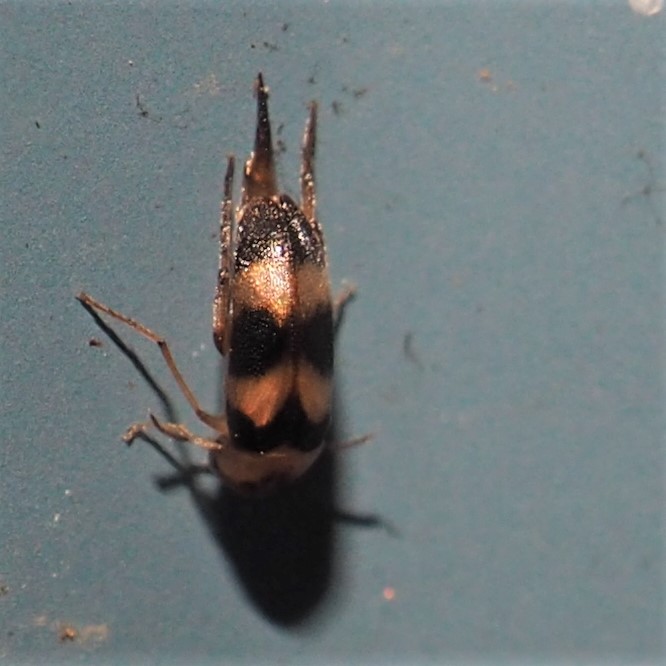
Lucky me. The Japanese Beetles are here! But so are the Lightning Beetles. Last night I watched out the window as the Lightning "Bugs" started flying around and flashing their little lights!
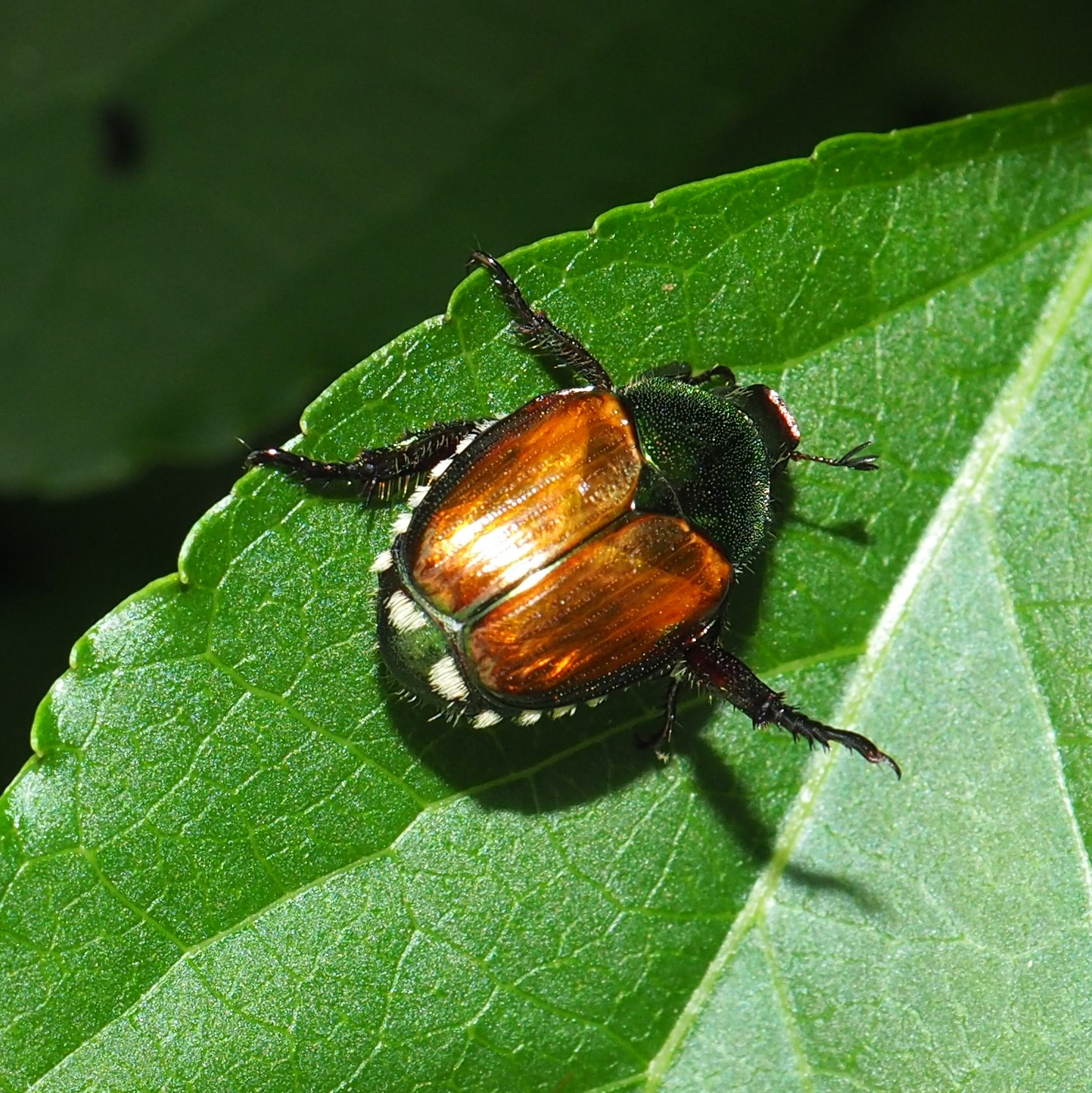
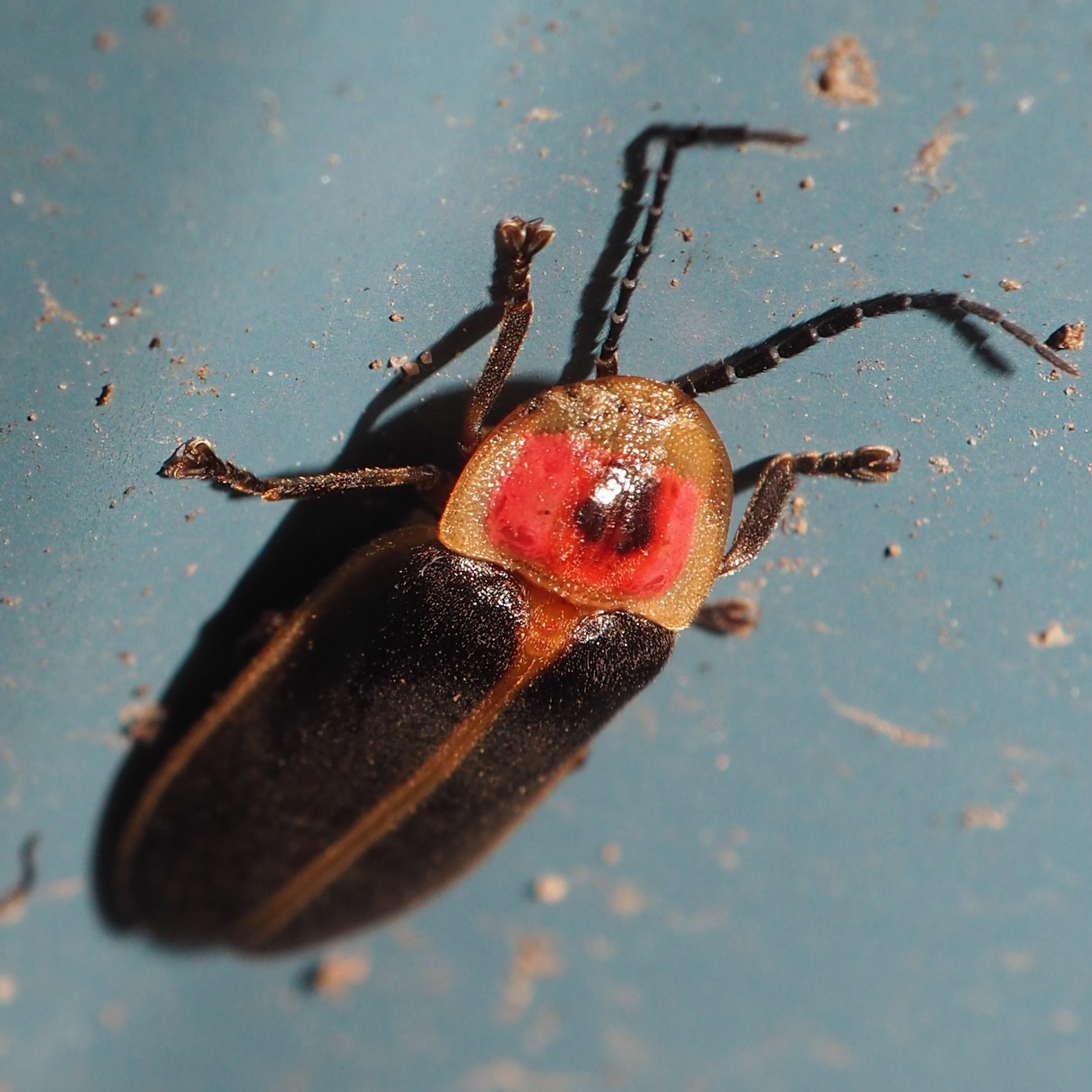
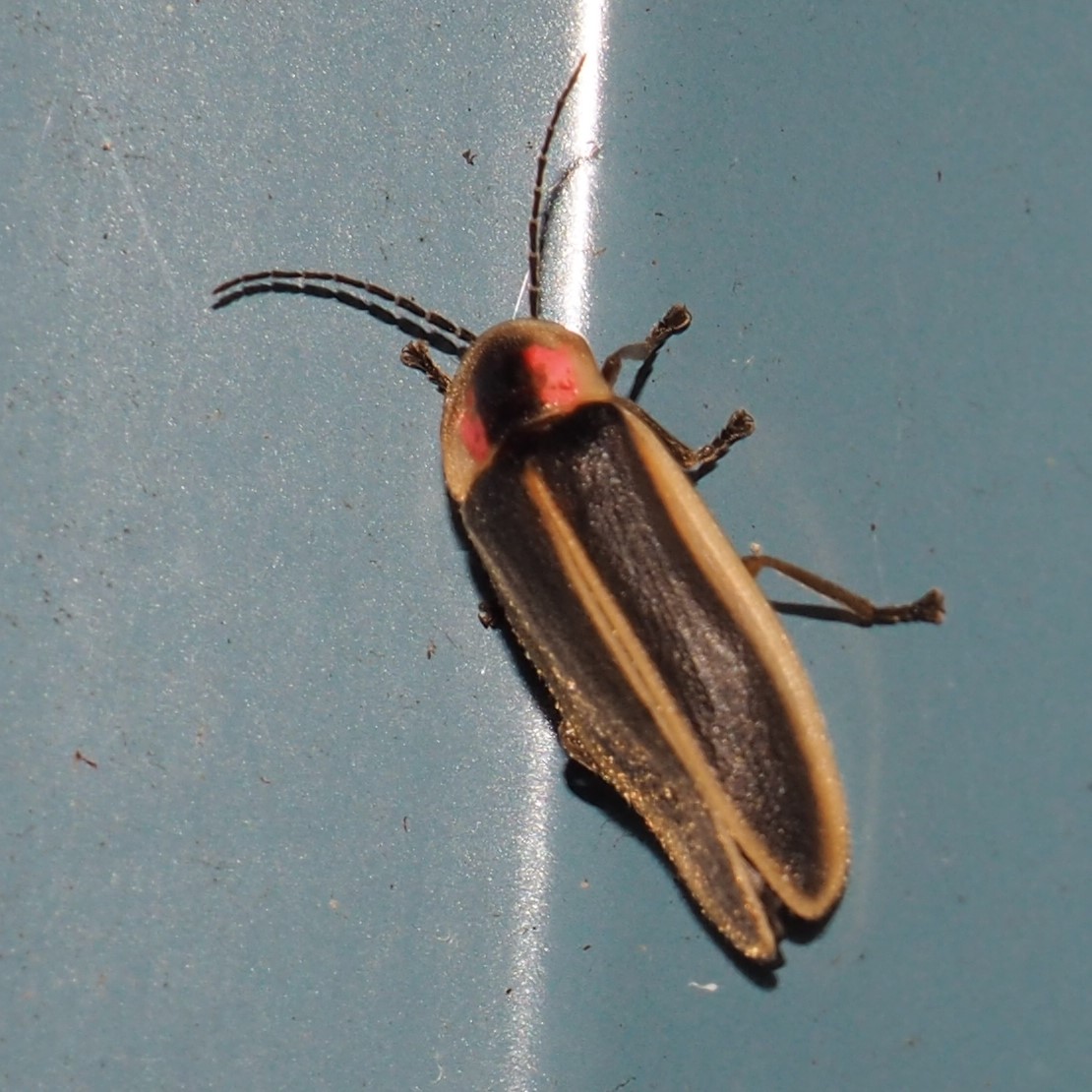
One more lightning-type beetle. By the way, the same neighbors that watch the hummingbirds also have tons of milkweed (unlike me, who can NOT keep milkweed growing in my yard). The other day, their swamp milkweed had the nice red milkweed beetles! This morning on my shop siding was this cute little weevil. This afternoon, Beetle #4 lit on the shop wall long enough for me to get this side view. No clue!
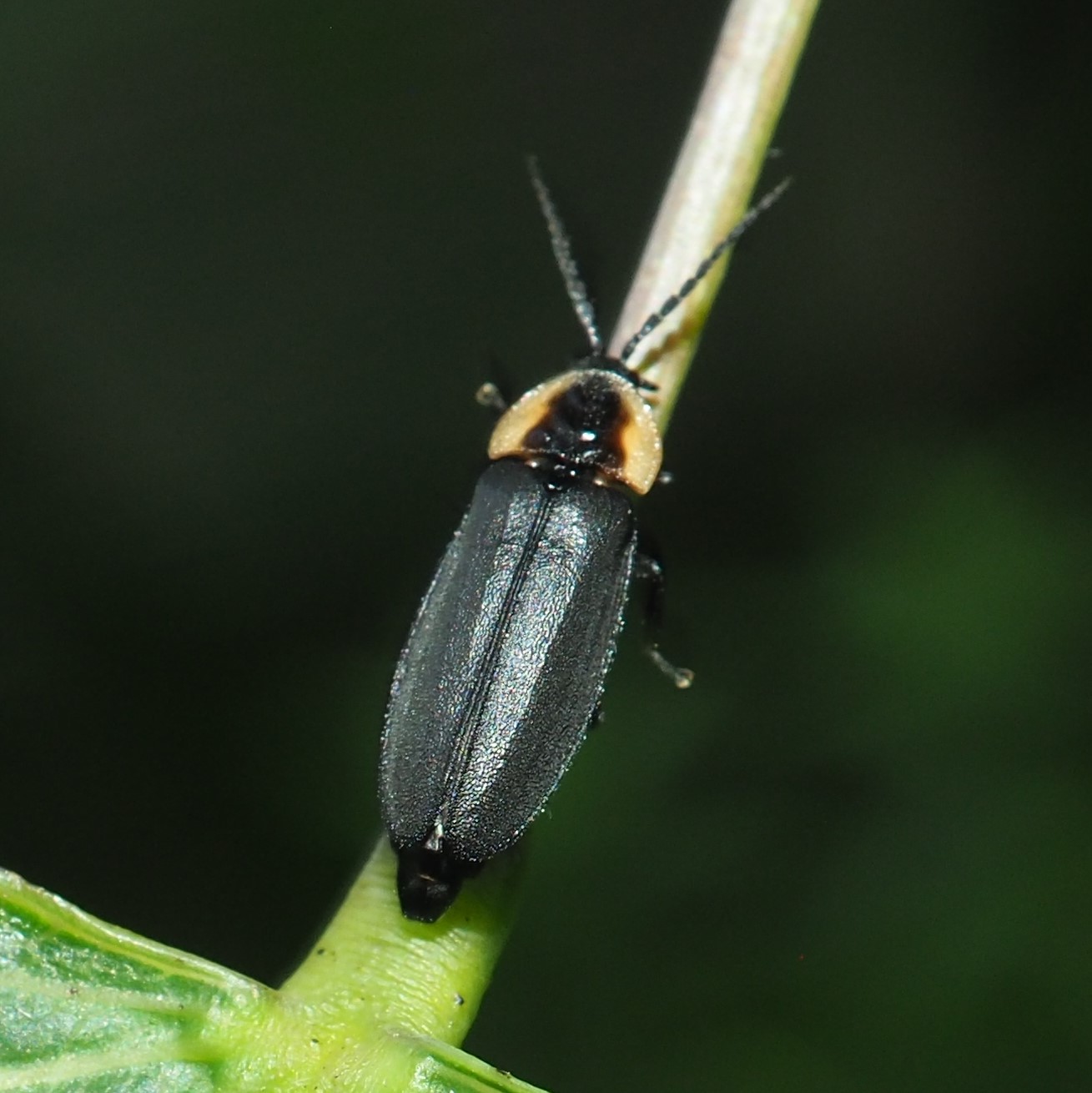
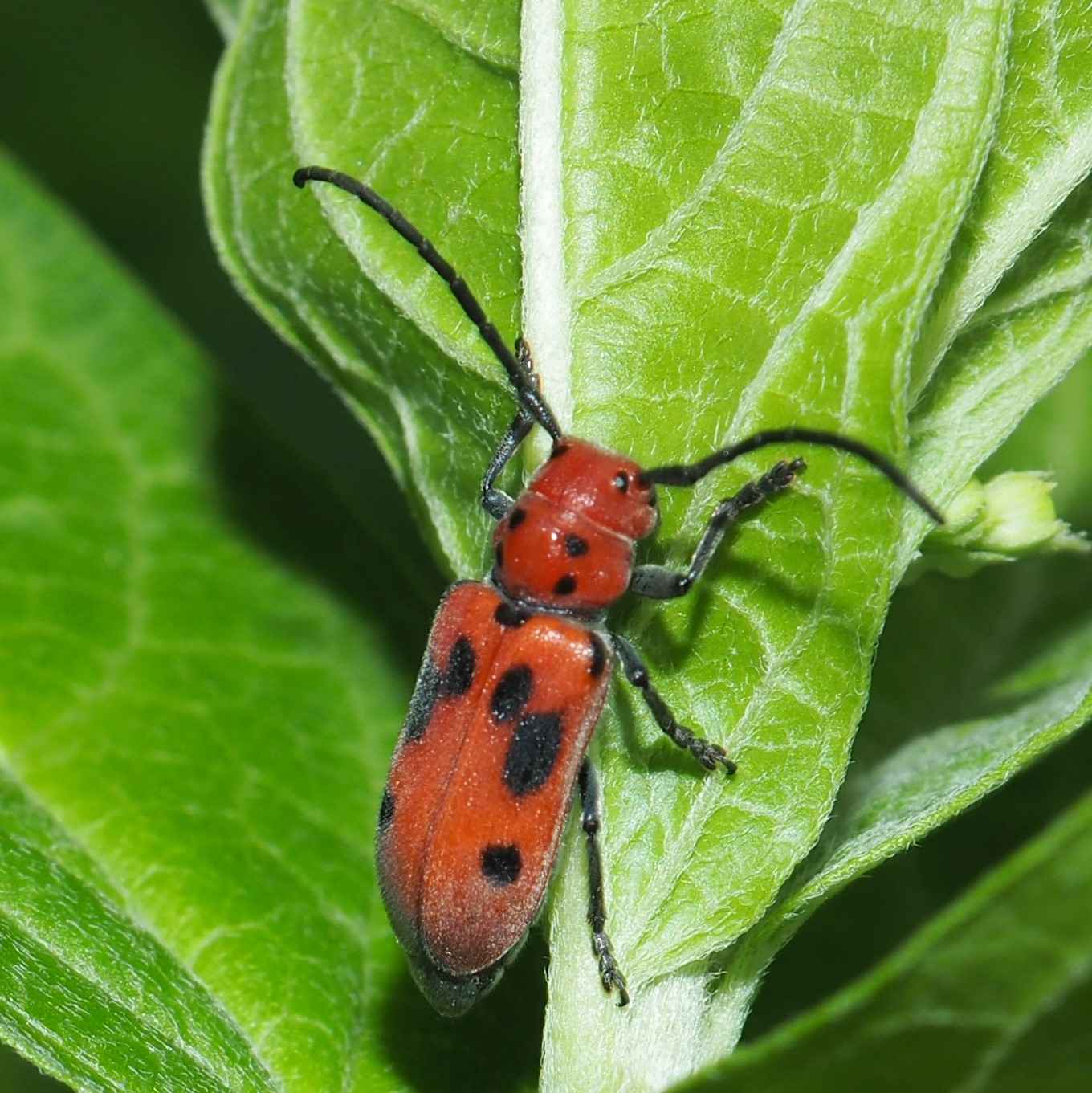
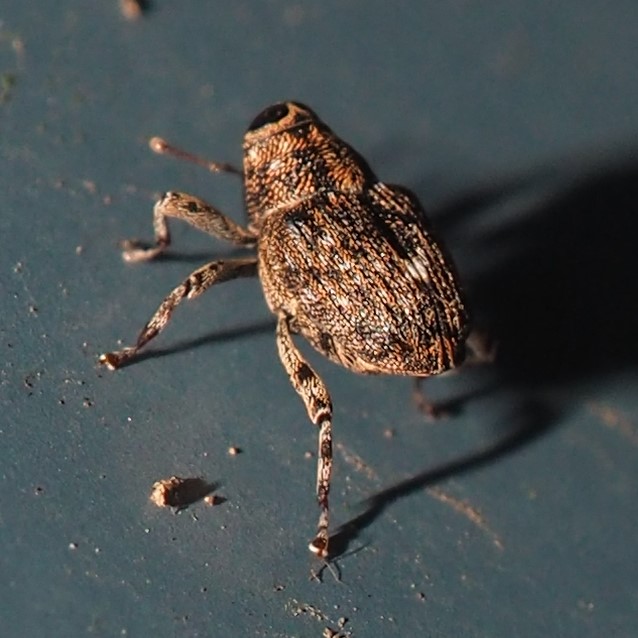
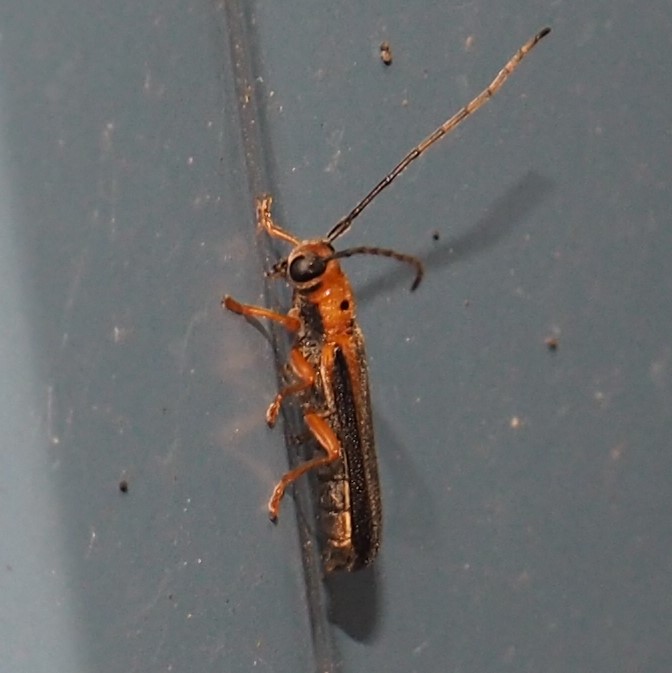
Usually I start the Bug section with Assassin Bugs. But I was surprised to see this week a little Zelus-like bug. It leapt from where I was staring at it down onto a plant and so I got these pictures. It looked so much like our Assassin Bugs, but the shape was wrong. (The abdomen was too wide for one thing.) Then I remembered Damself Bugs, which are another kind of killers with a slurpee-maker that they keep under their chin until something comes by to poke. This one hasn't been identified yet, but it is definitely in the right place, in genus Nabis - a Damsel Bug. Then yesterday while I was deciding which of the Walnut saplings to cull, I saw that one of them had a very strange thing in it: an assassin-like creature inside a sheetweb. I didn't see the spider that must have made the web, but I had the impression that this creature could move freely there. I went back out later to take more shots of it. Now, comparing it with my Zelus luridus pictures, I'm convinced that's what this is. Its eyes were the right red. Its slurpee-maker was hanging in wait under its chin. This was the first picture I've gotten of an Assassin Bug with its wings unfurled. Last is a holdover from last week. I'd thought it was an adult Zelus tetracanthus, mostly due to its grey-brown coloring, but its front legs were deemed by Matt of iNat as too beefy to be Zelus, and it was then identified by @sambiology on iNat as a Long-necked Seed Bug (Myodocha serripes).
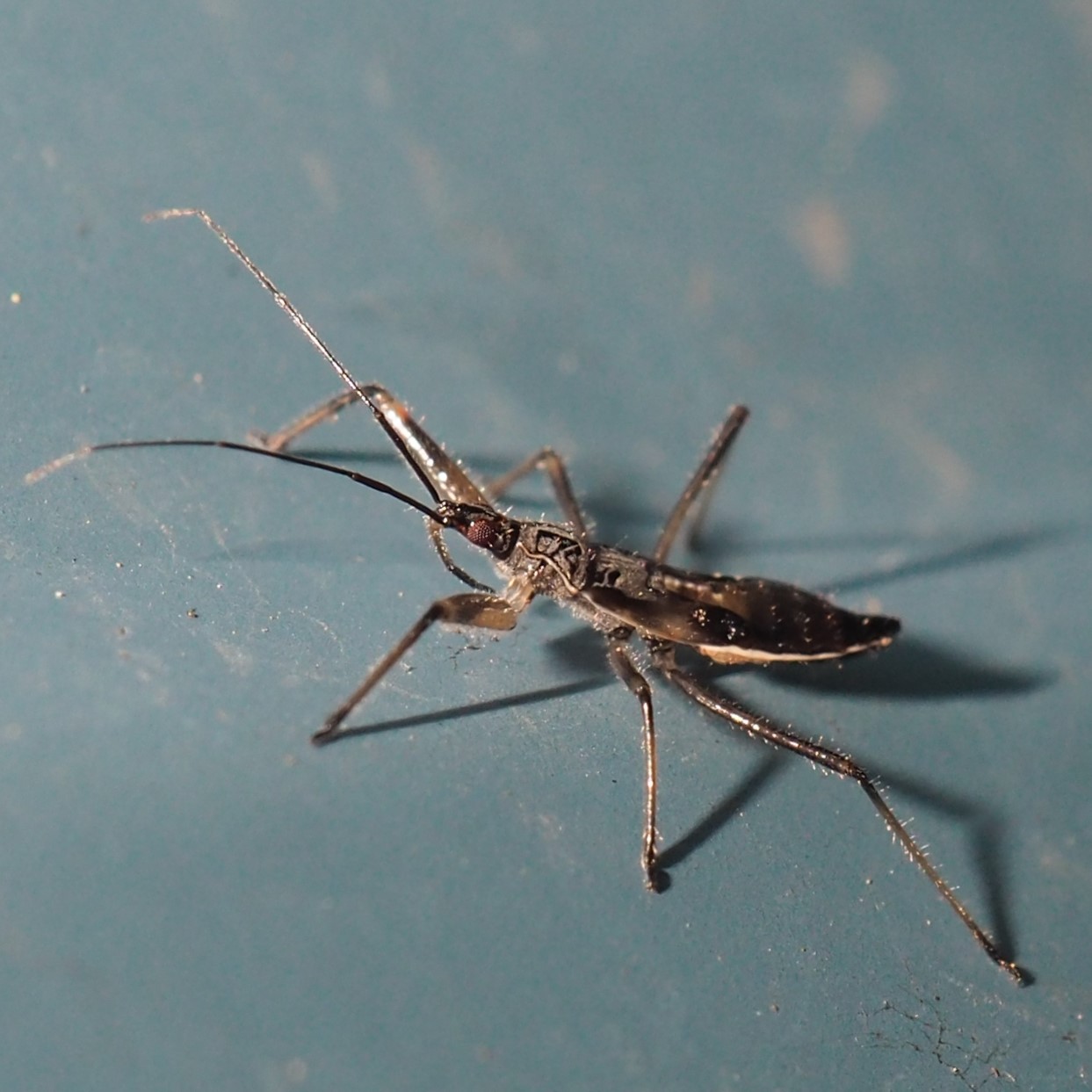
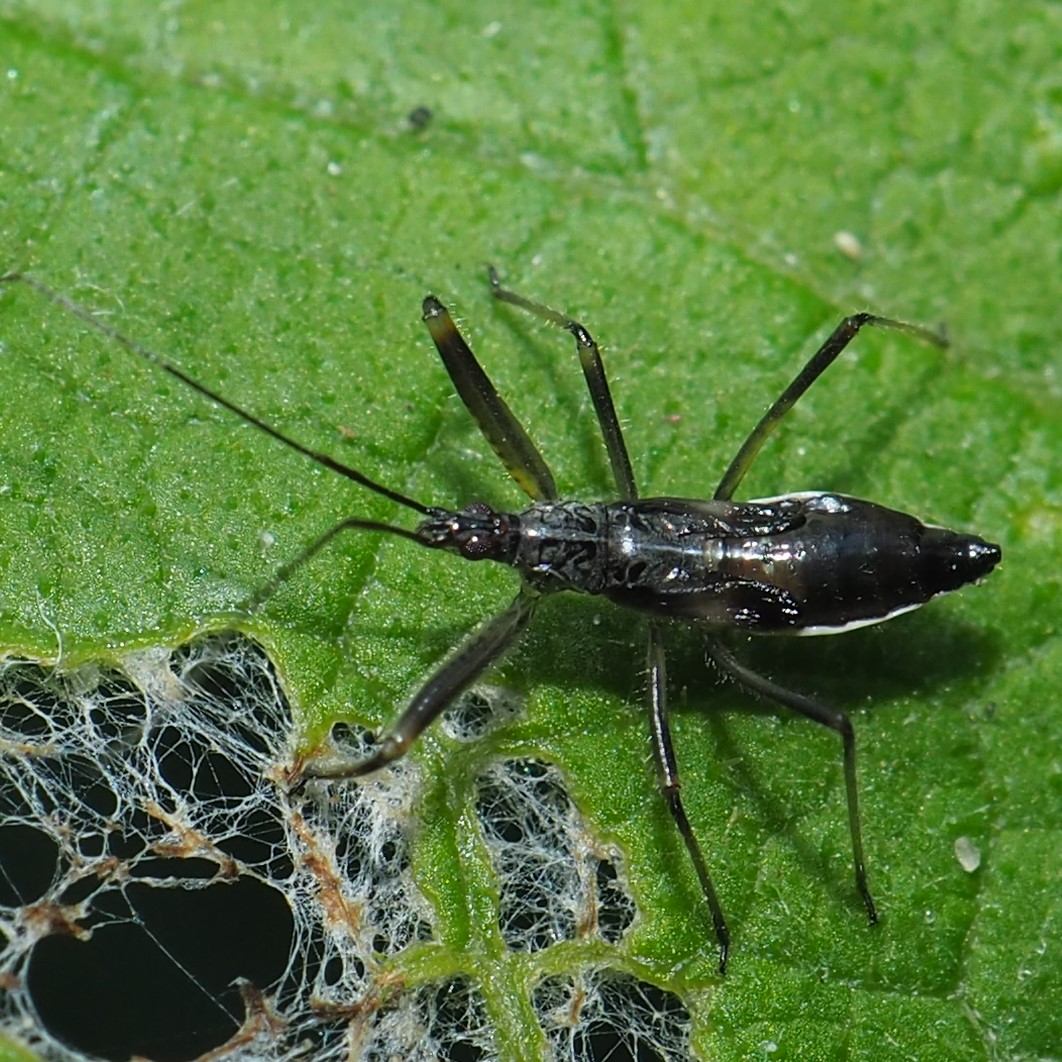
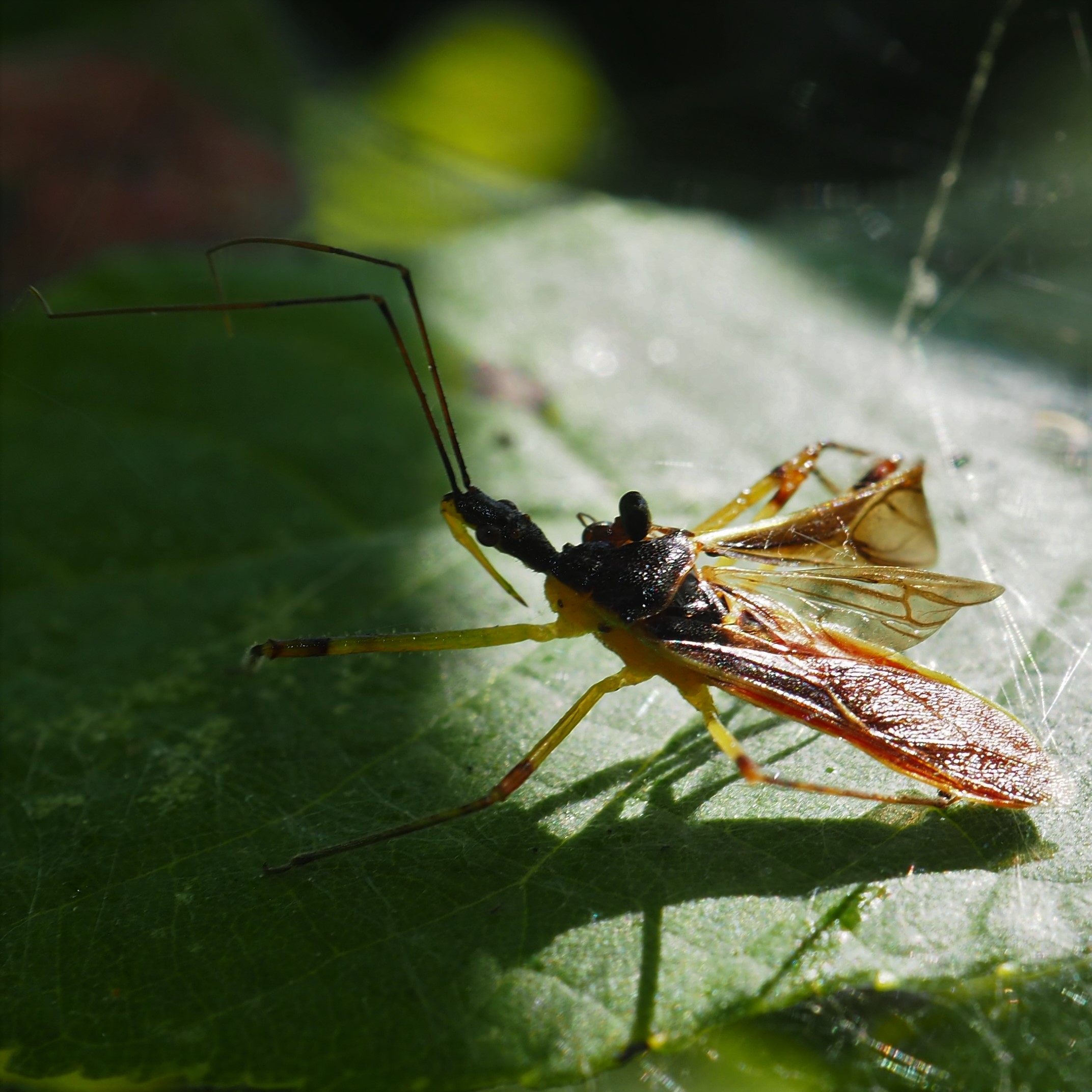
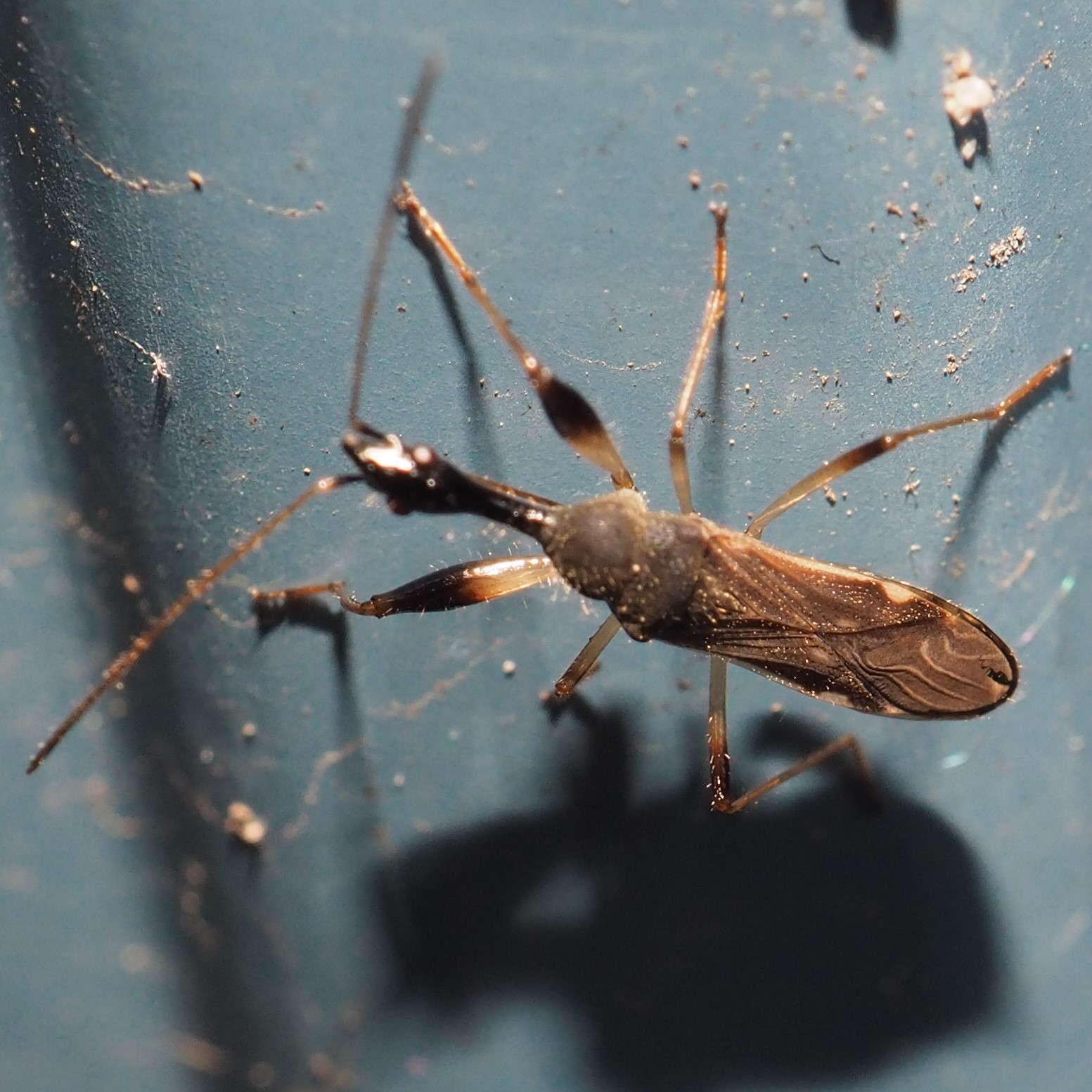
Here are some of the Candy-striped leafhoppers - one with red and blue stripes and another with red and green stripes. They may even be a couple as we suspected from this pair last week.
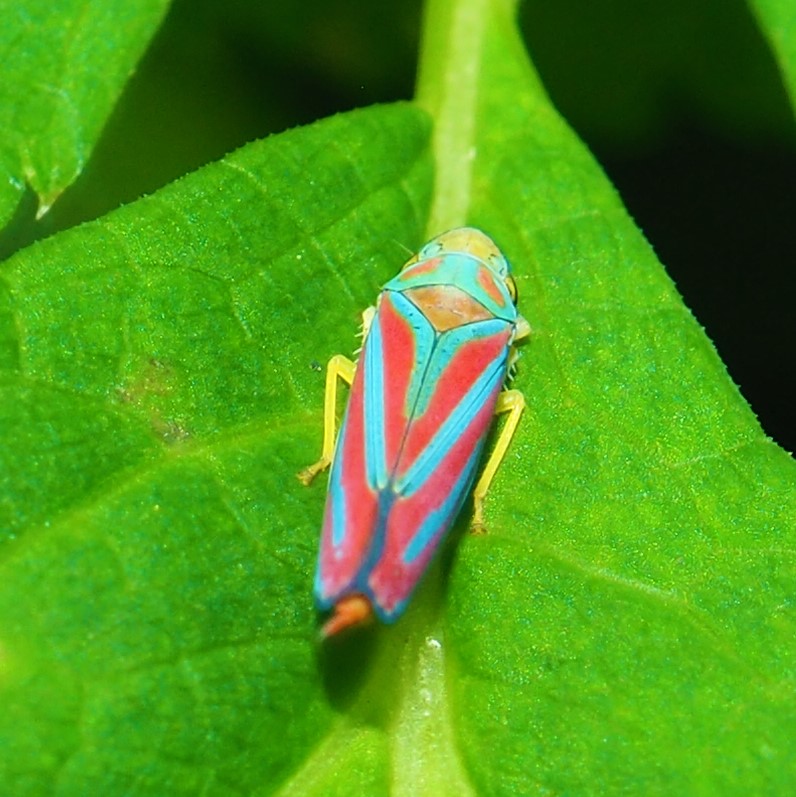
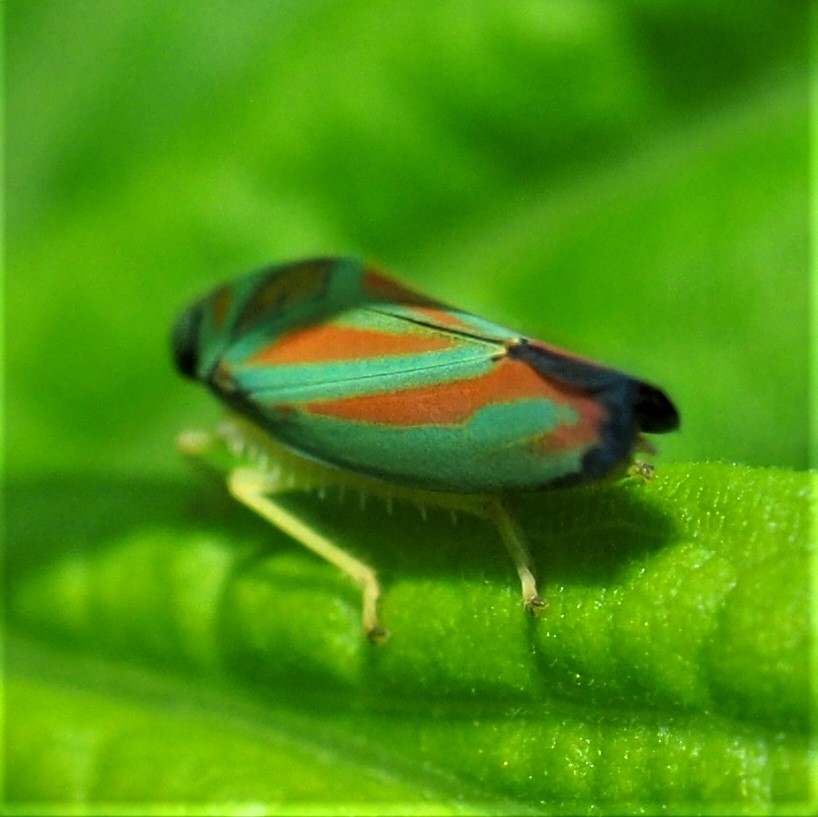
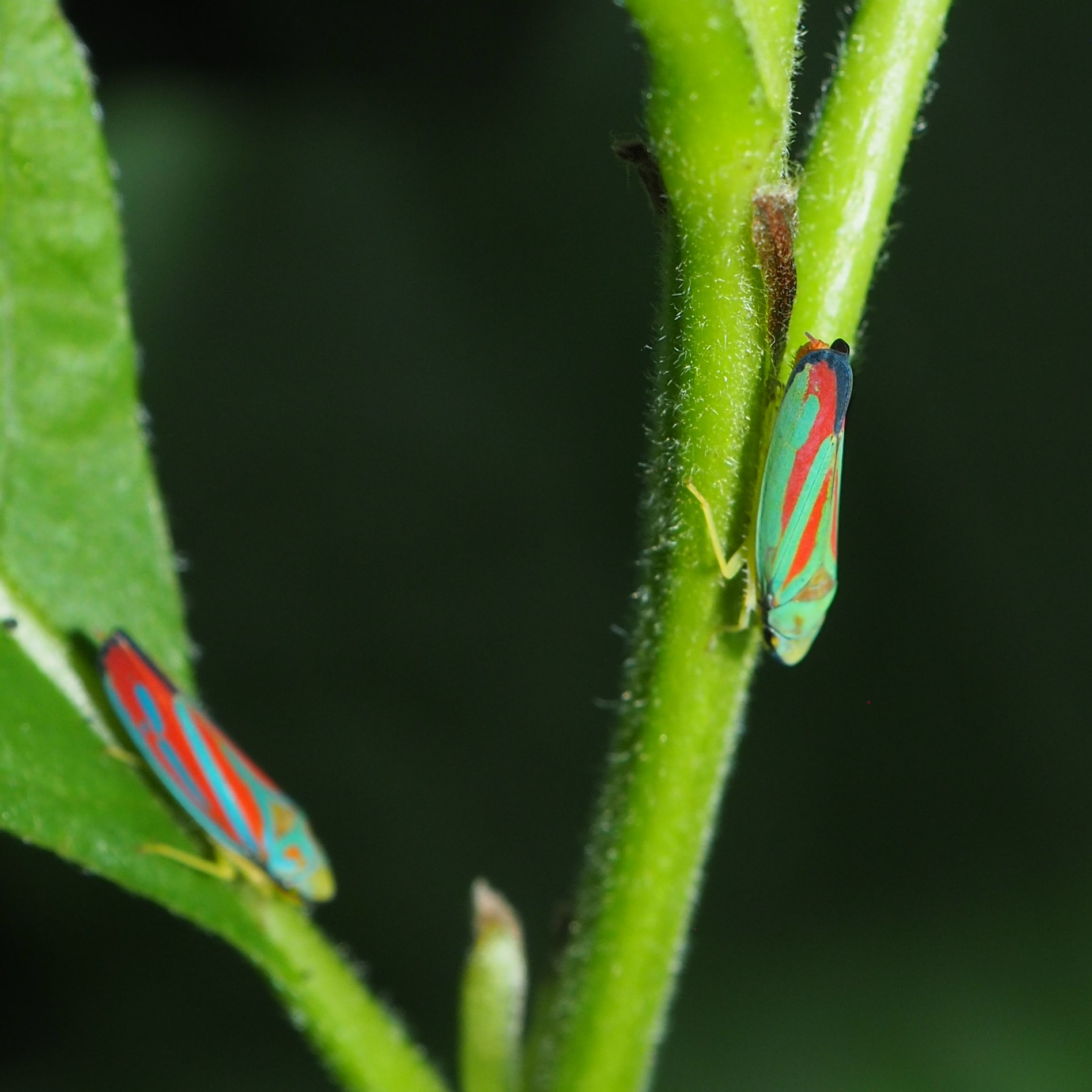
Another leafhopper that doesn't look like those smooth buttoned-down creatures we recognize almost at first as leafhoppers. This is actually the nymph of Jikradia olitoria. Those nymphs tend to take on the most wonderful postures - their heads and tails raised up as if in defense or offense. The third creature here is another kind of leafhopper, maybe a Sharpshooter...
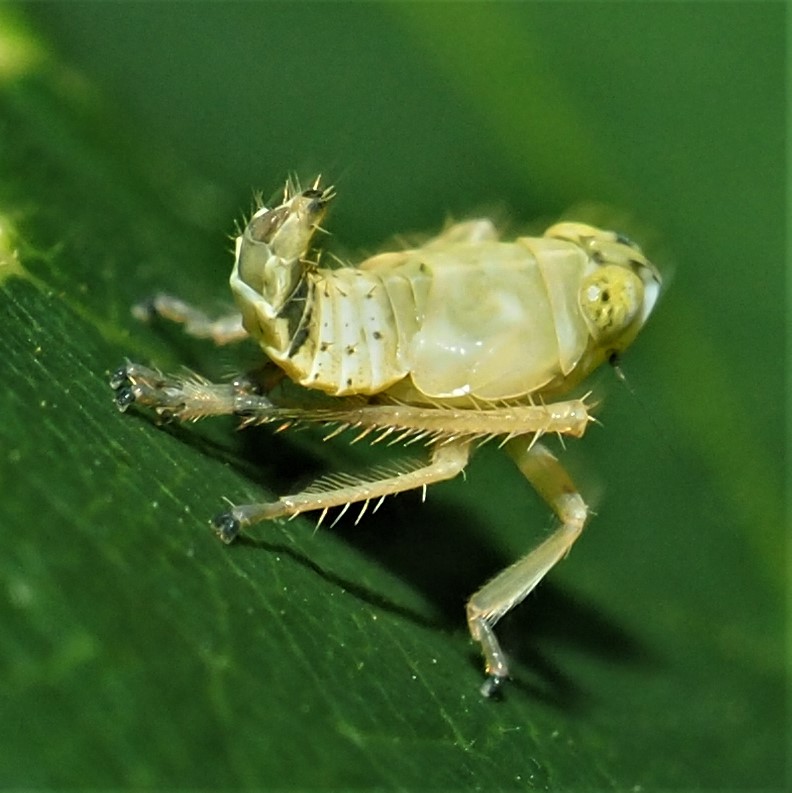
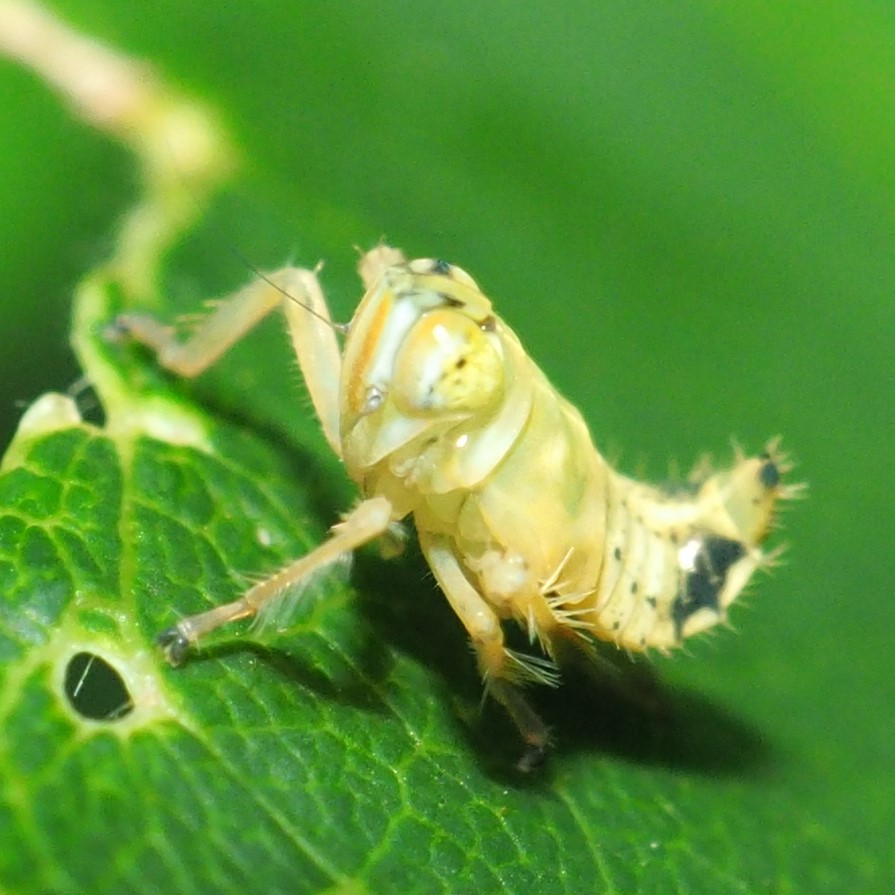
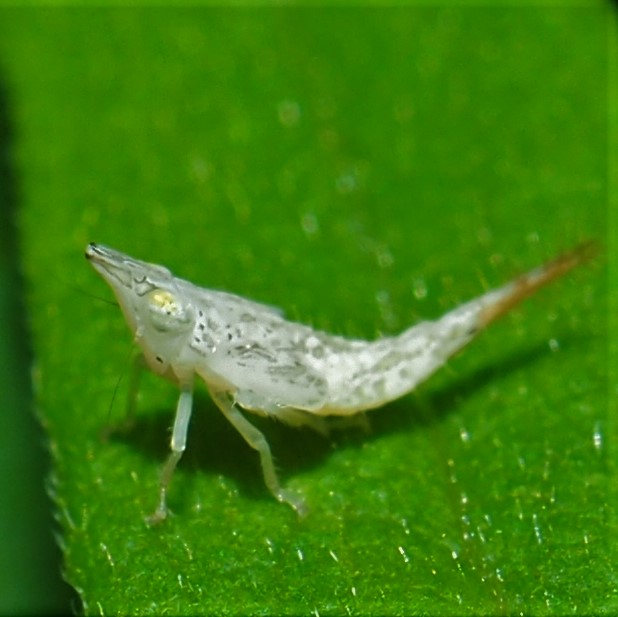
Here are some more bugs, just to show you how many different shapes they can come in. This first one is a member of Seed Bugs and Allies. Believe me, that is not narrowing it down much as there are so many Seed Bugs! The next one is so obscure it's actually called the Obscure Plant Bug! The third one is apparently the nymph of a so-called Flatid Planthopper. Fourth may be the same as or related to the Third.
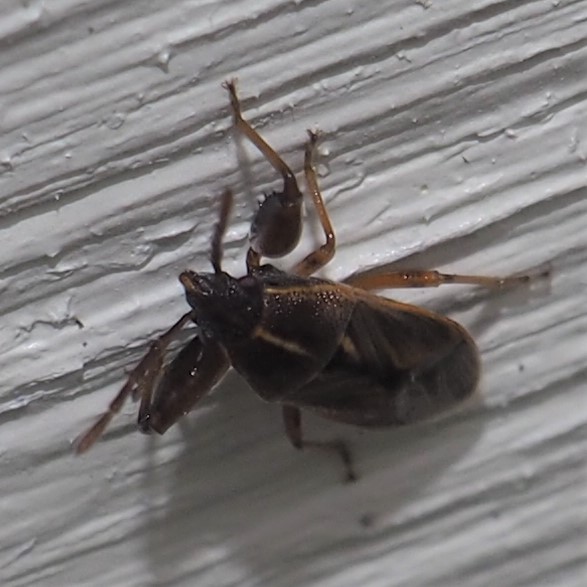
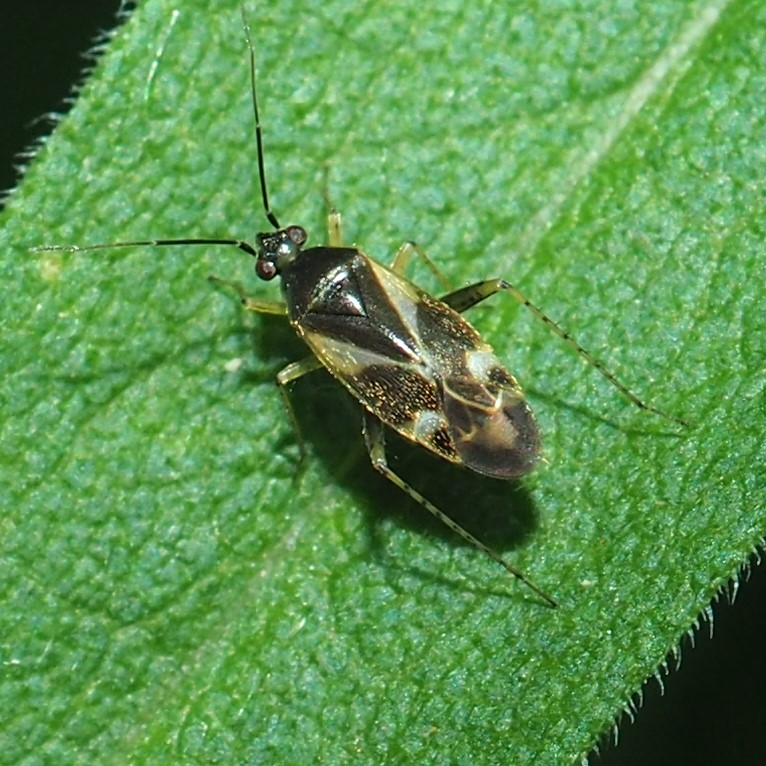
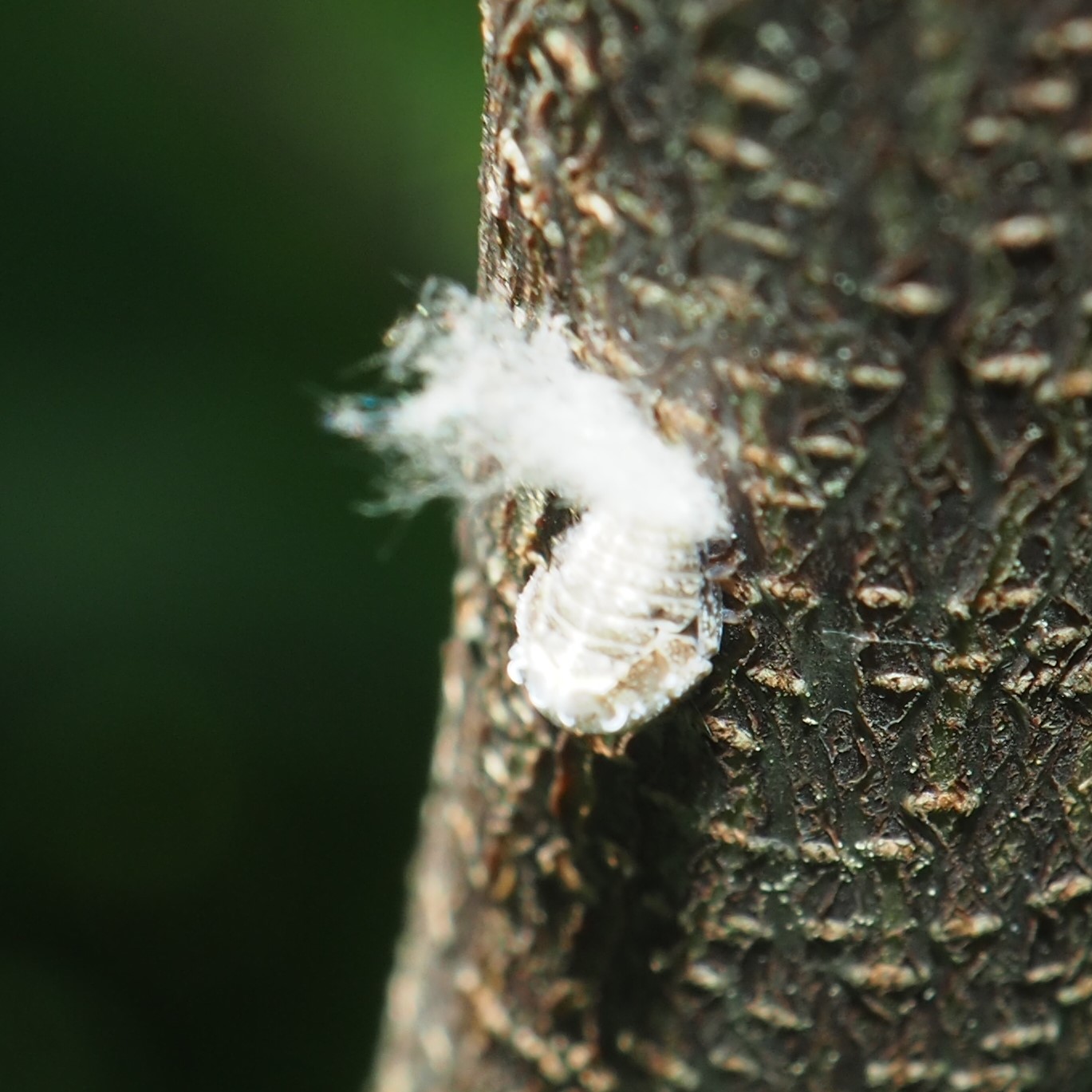
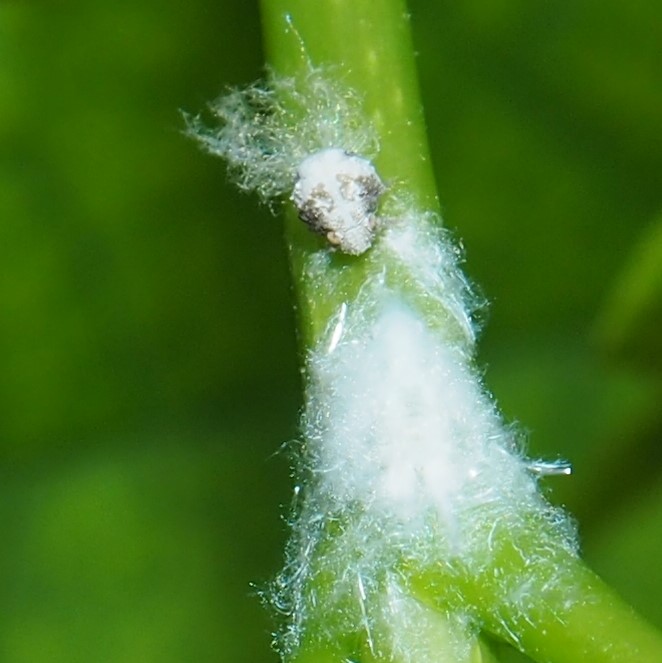
The Two-marked Treehoppers are now pretty well scattered in the redbud trees, mostly in the big old tree. Here are a little trio. Second and third are nymphs that were sitting on two adjacent redbud leaves. The second is not our usual view. I wonder if it is really a Two-mark nymph.
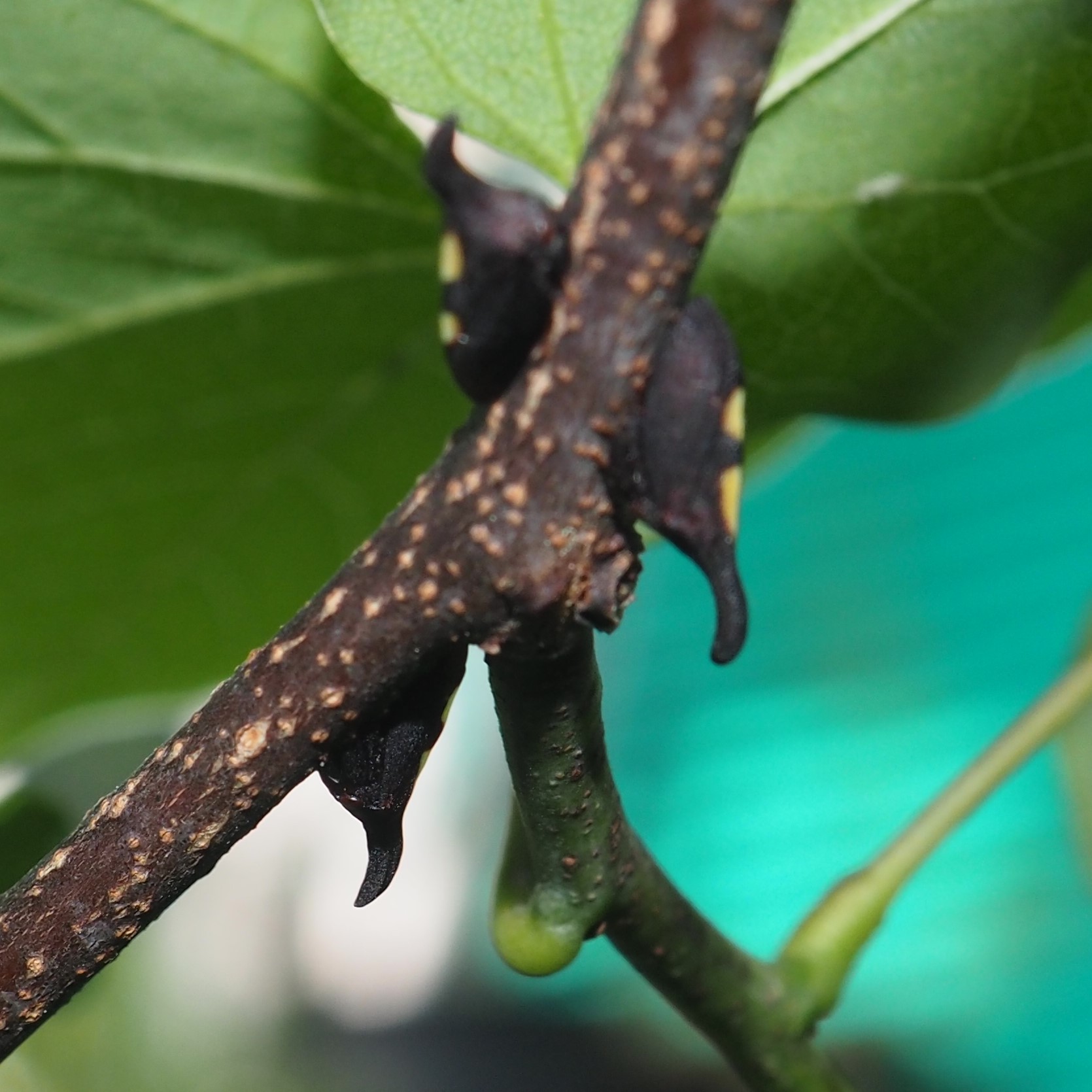
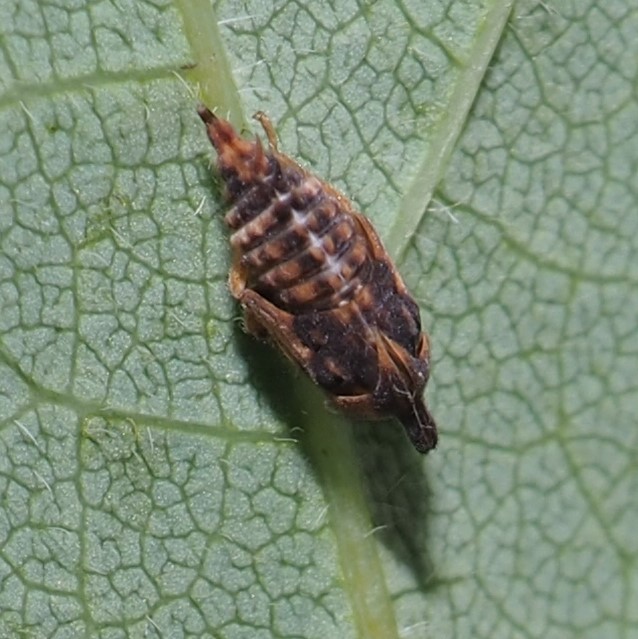
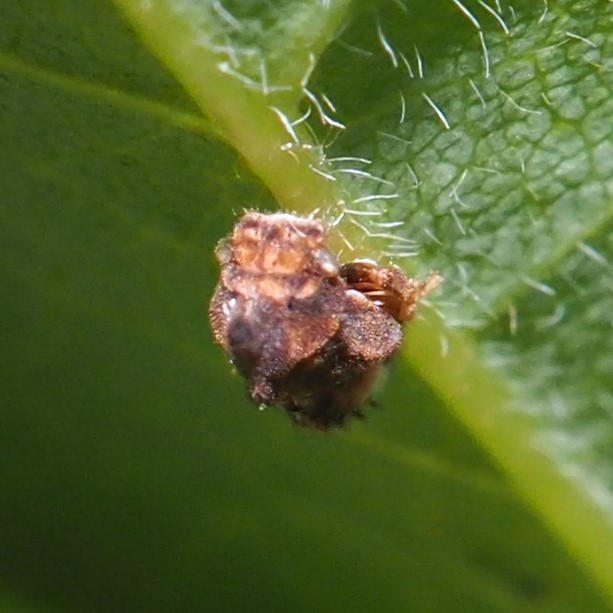
Going on to Caterpillars and hence to Butterflies, Skippers, and Moths. First up, a tiny inchworm (or geometrid caterpillar). Then the caterpillar of the Fall Webworm. It seems to be throwing up or spitting a black liquid. Then a "Wooly Bear", the larva (Pyrrharctia isabella) of a Isabella Tiger Moth.
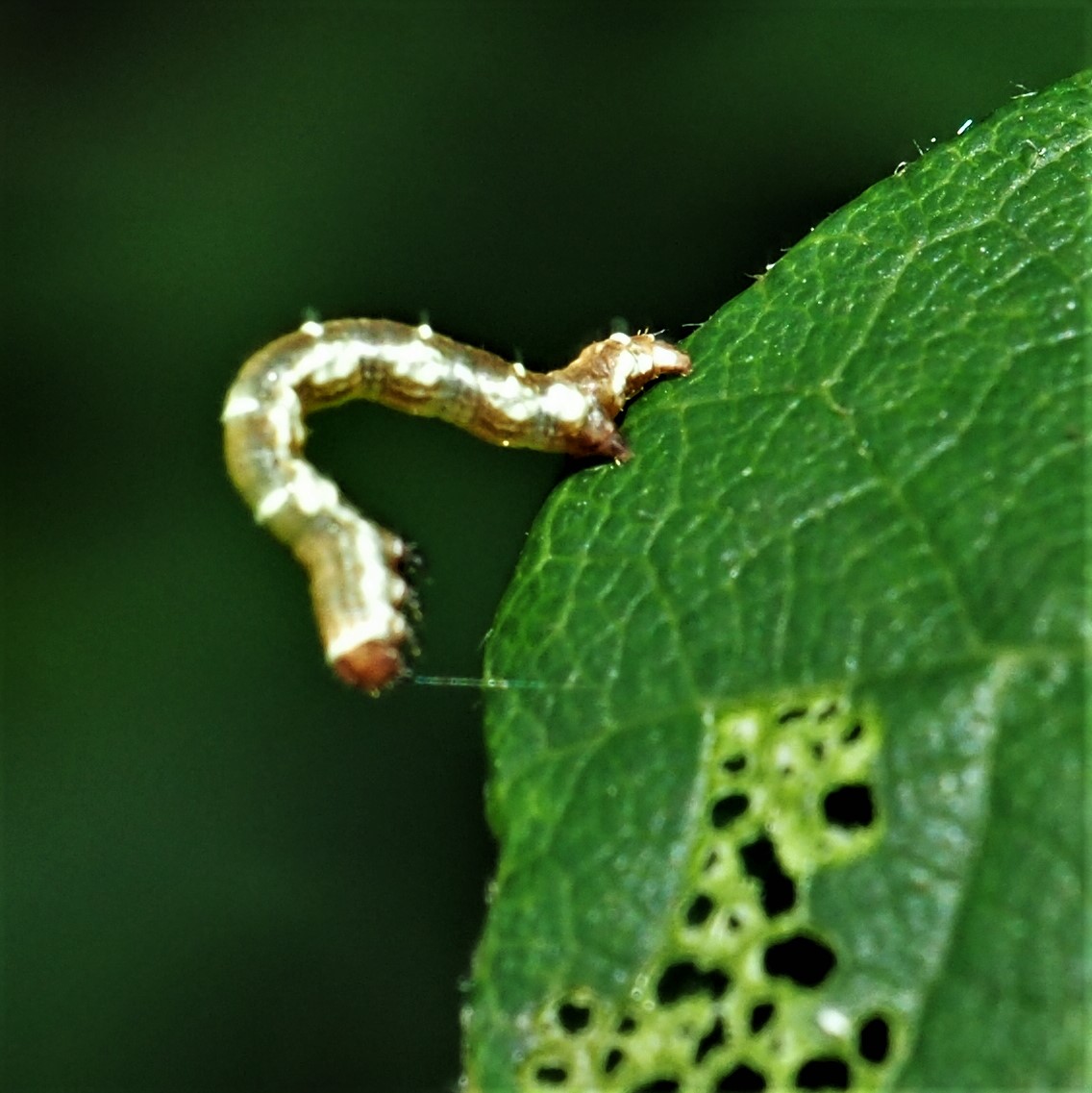
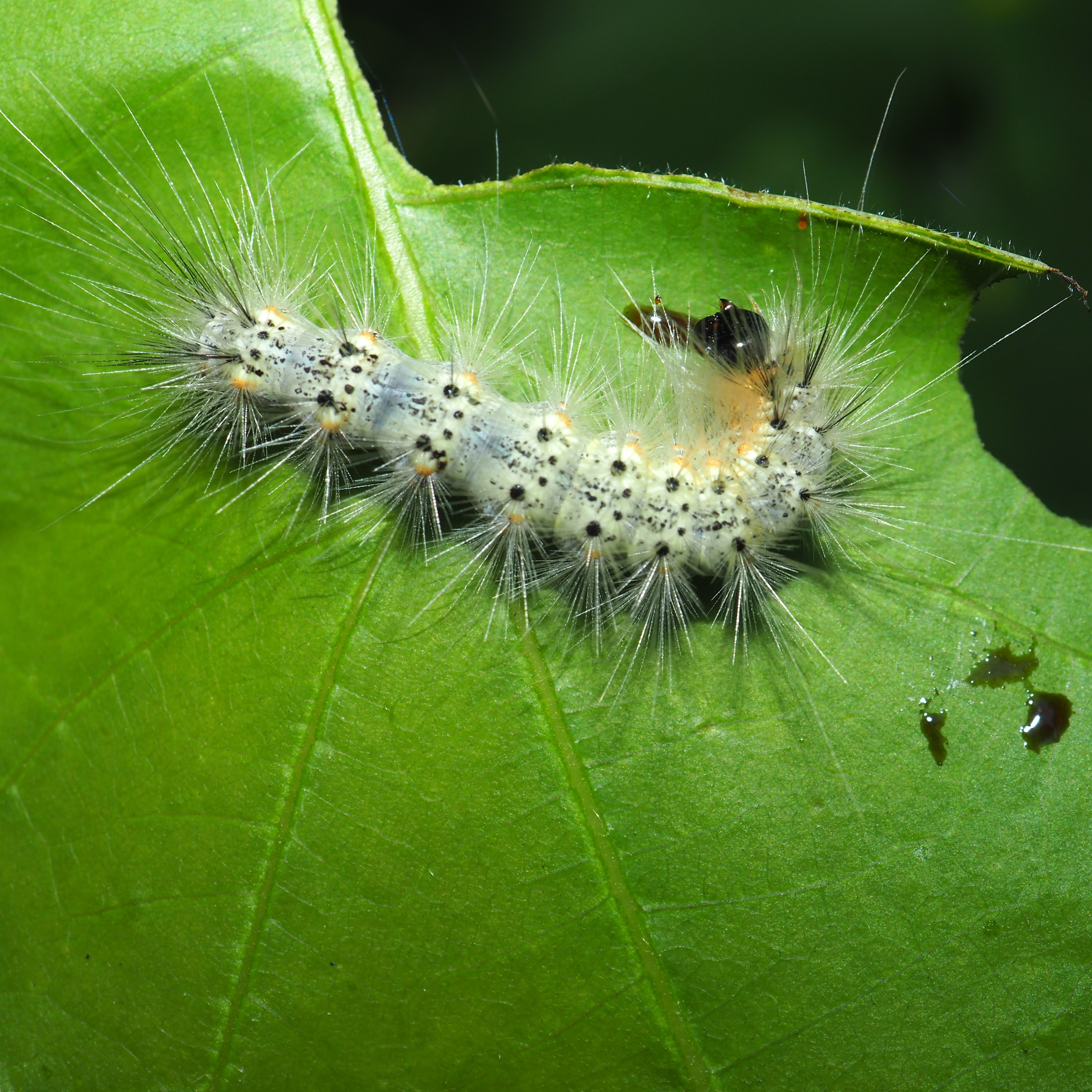
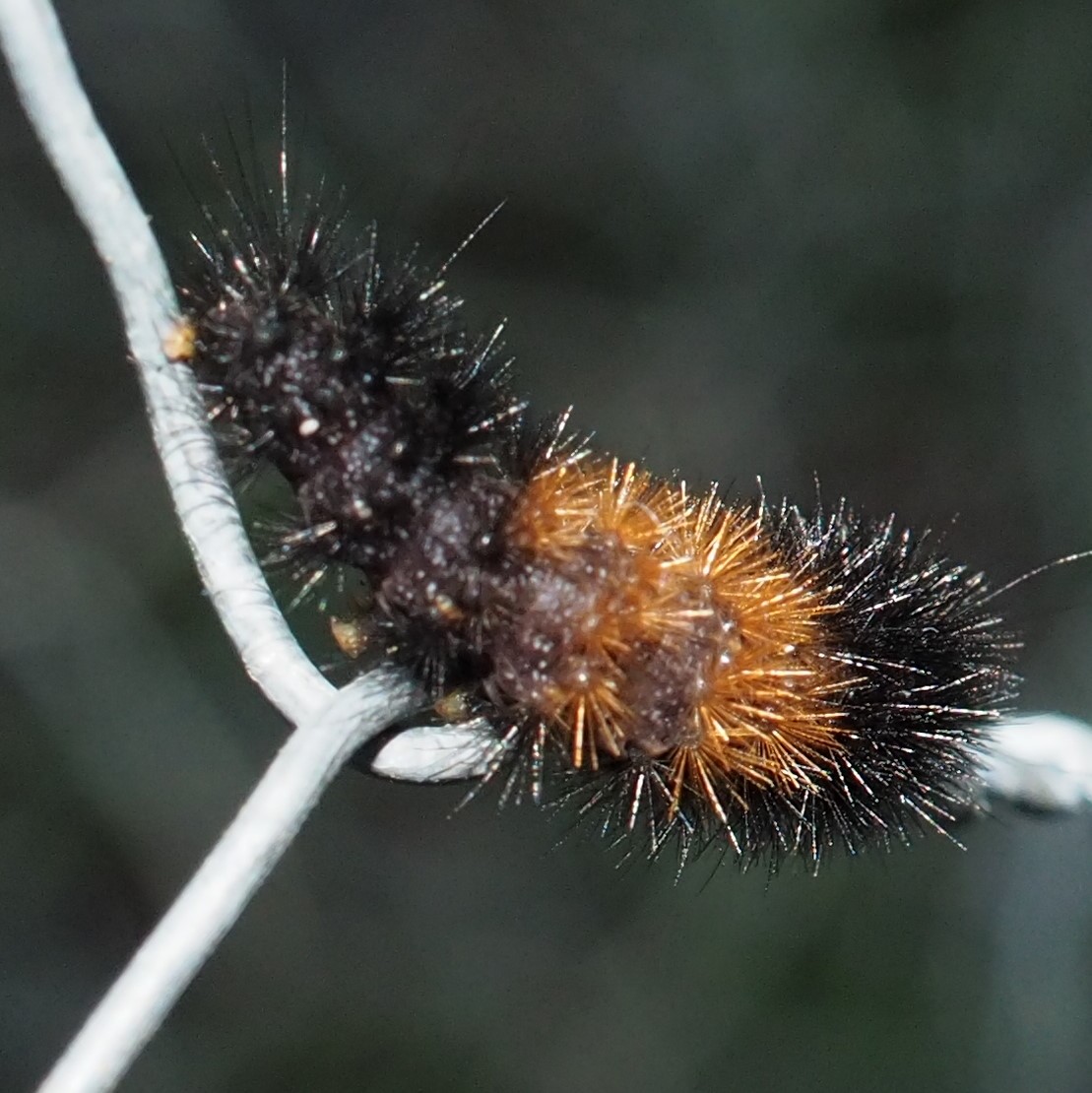
Here are some of the adults. First is the Silver-spotted Skipper, Epargyreus clarus. Then a pretty white moth on the shop wall, and a very pretty though small moth, the Yellow-fringed Dolichomia Moth (Hypsopygia olinalis).
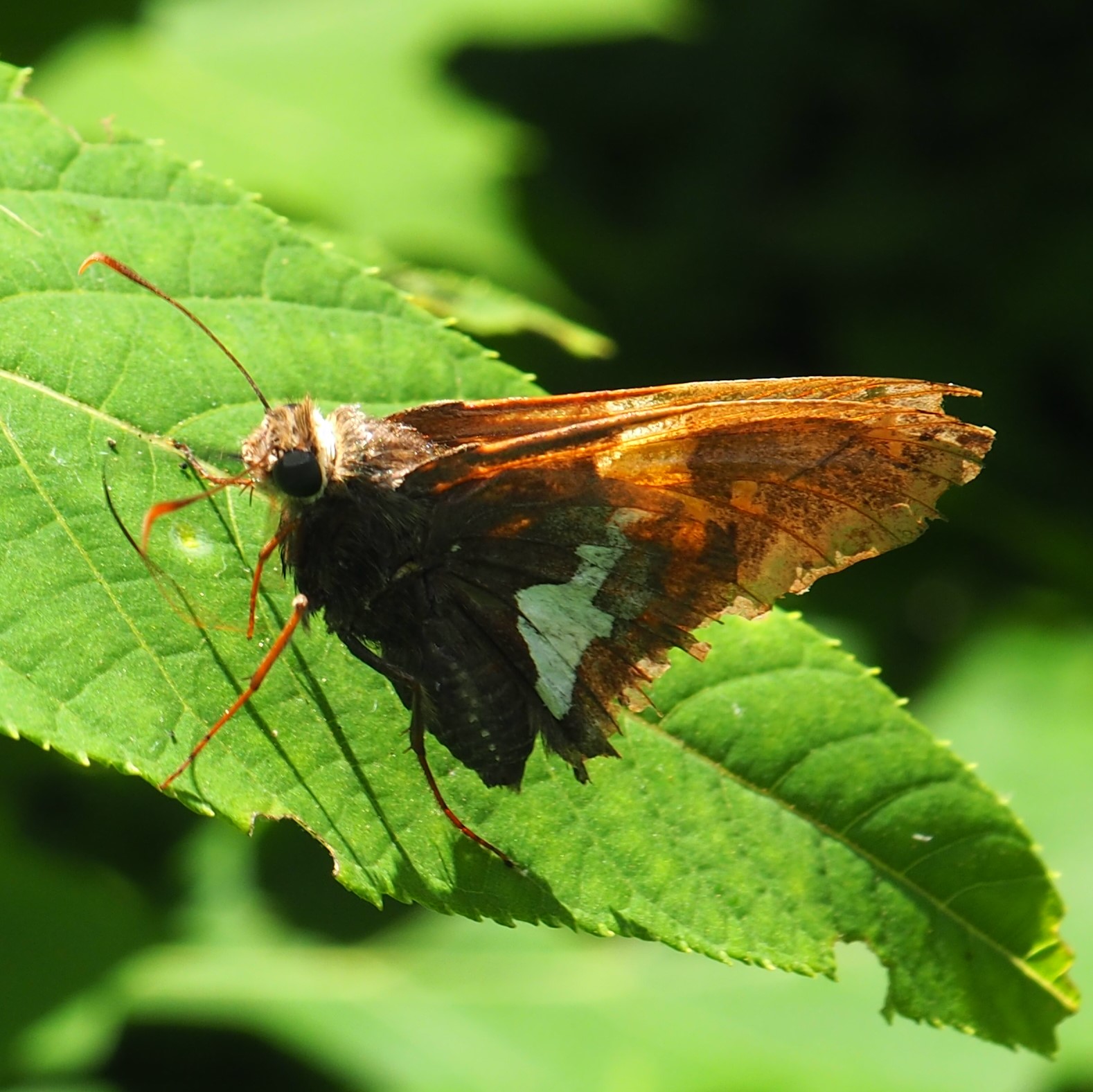
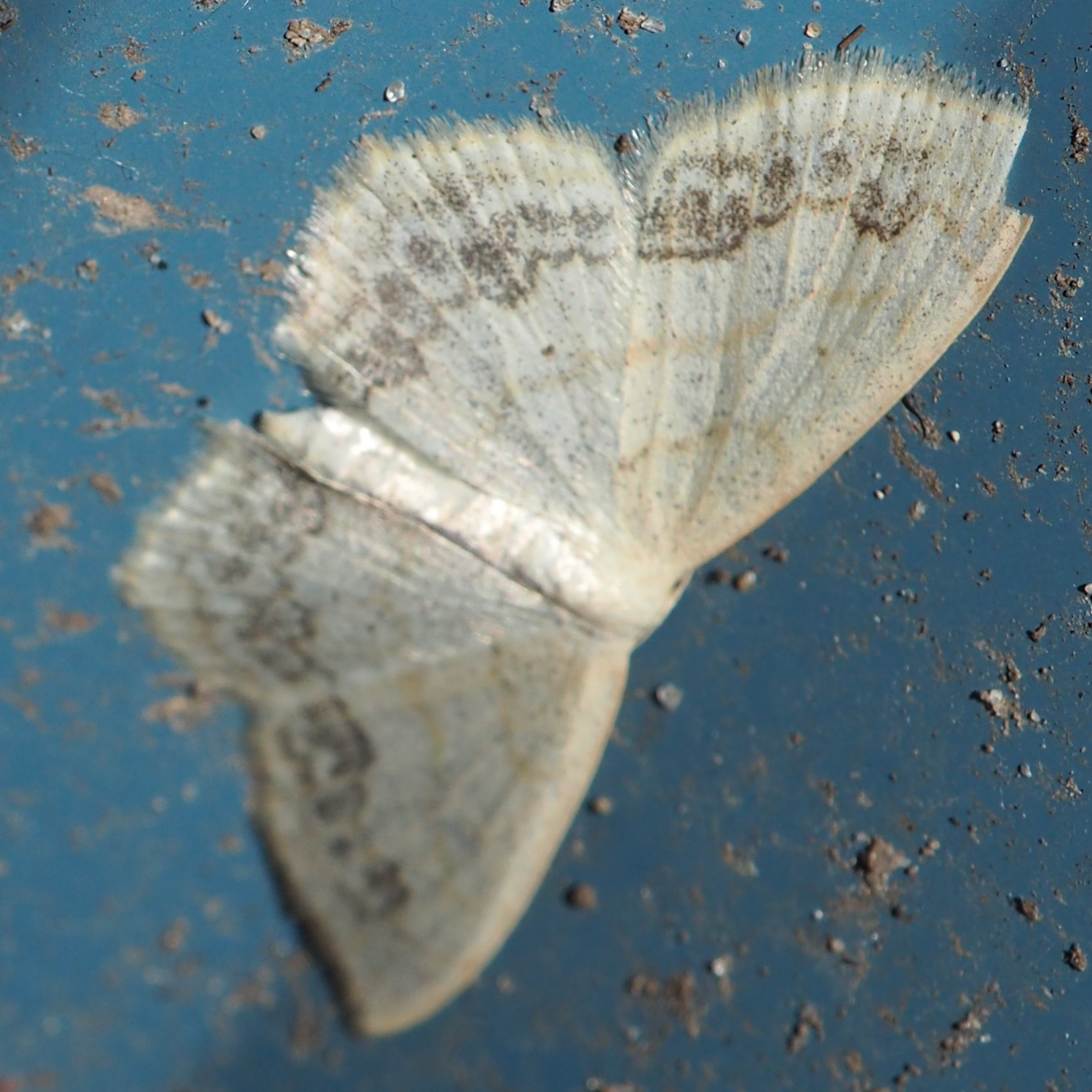
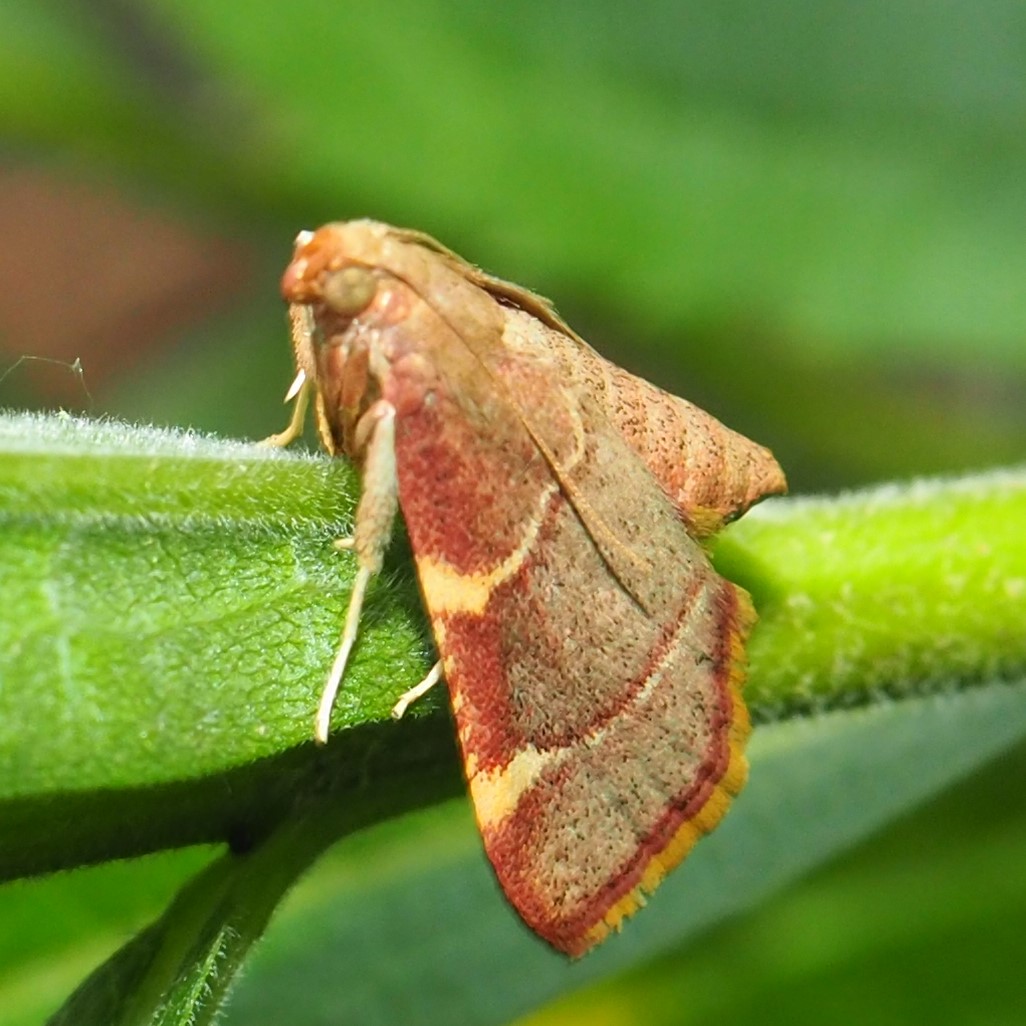
Here are a few more little moths, so far unidentified.
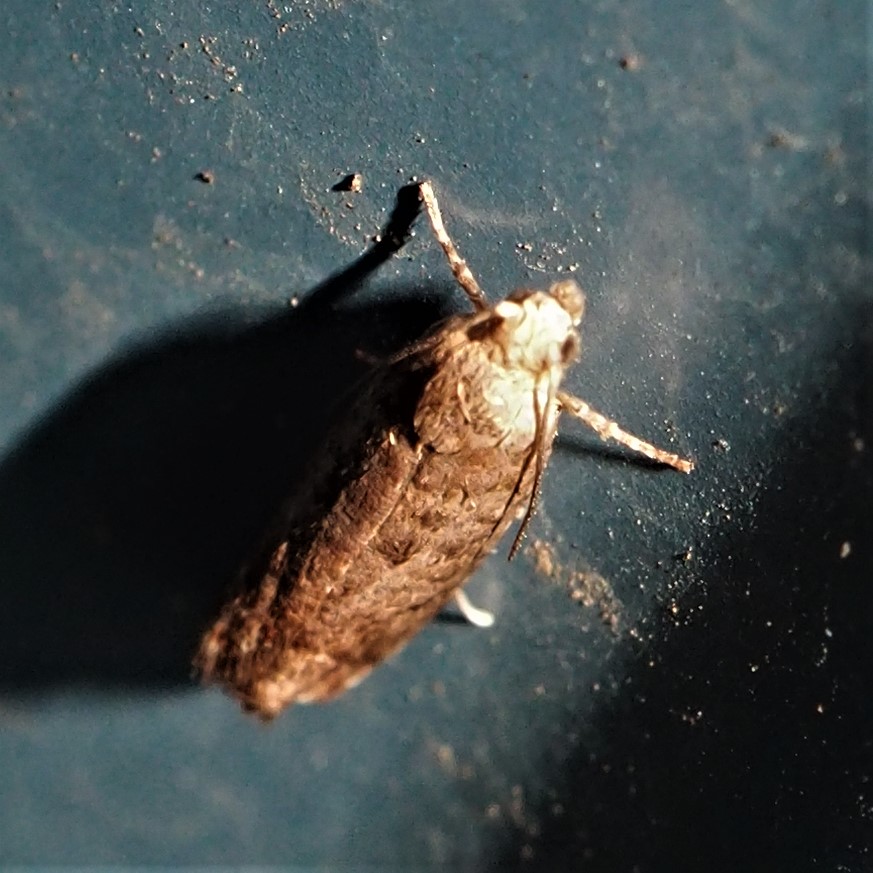
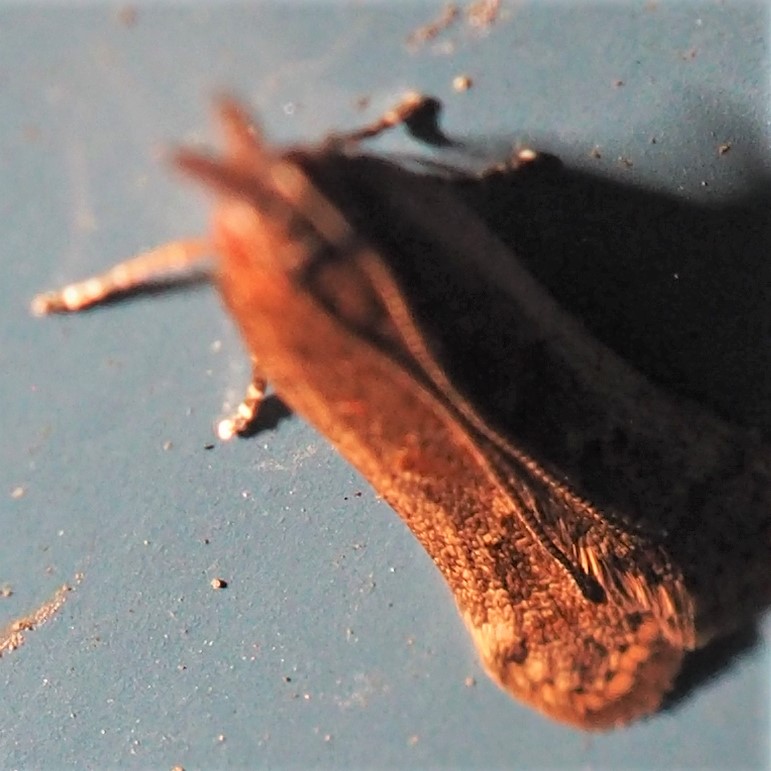
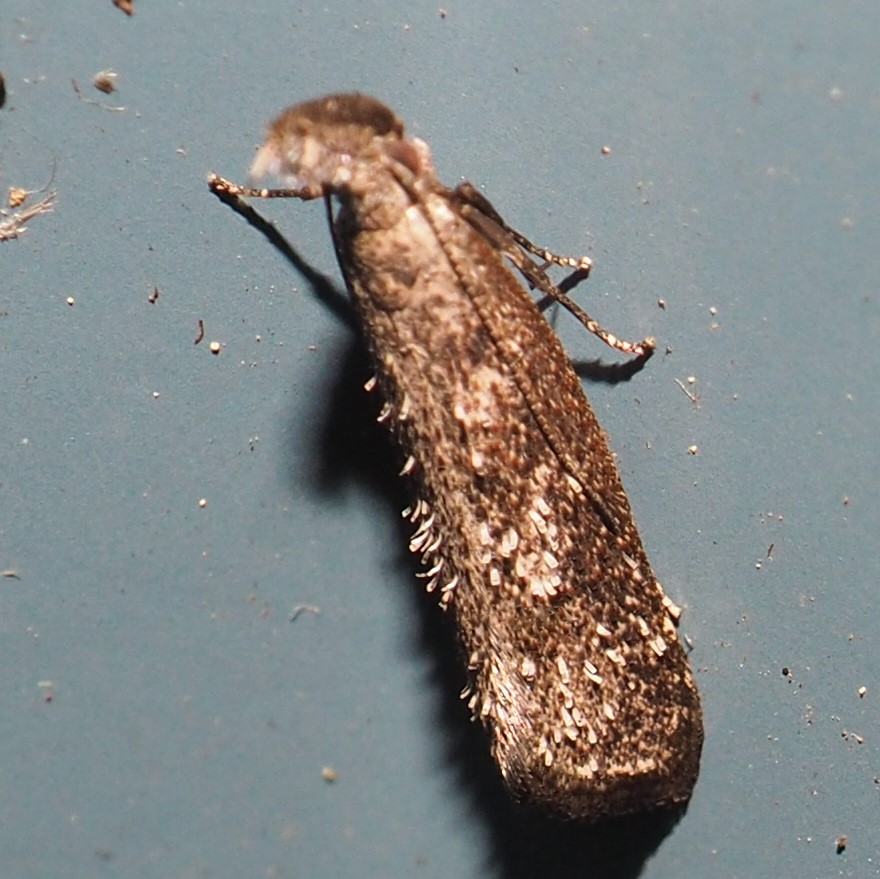
Here are the Odonata (Dragonflies and Damselflies) species I've seen this week. First is the male of the Ebony Jewelwing, the lovely iridescent damselfly often seen near water. This one is not an optional shot since I took it from quite a difference. Number 2 is another damselfly, the Slender Spreadwing (Lestes rectangularis), with its slender but long wings. Third is another long-distance shot of the Common Whitetail, Plathemis lydia.
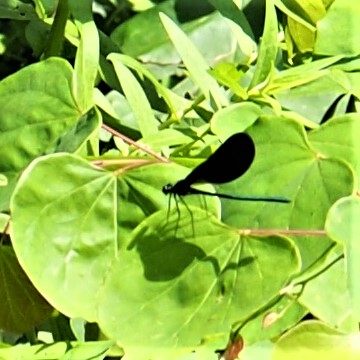
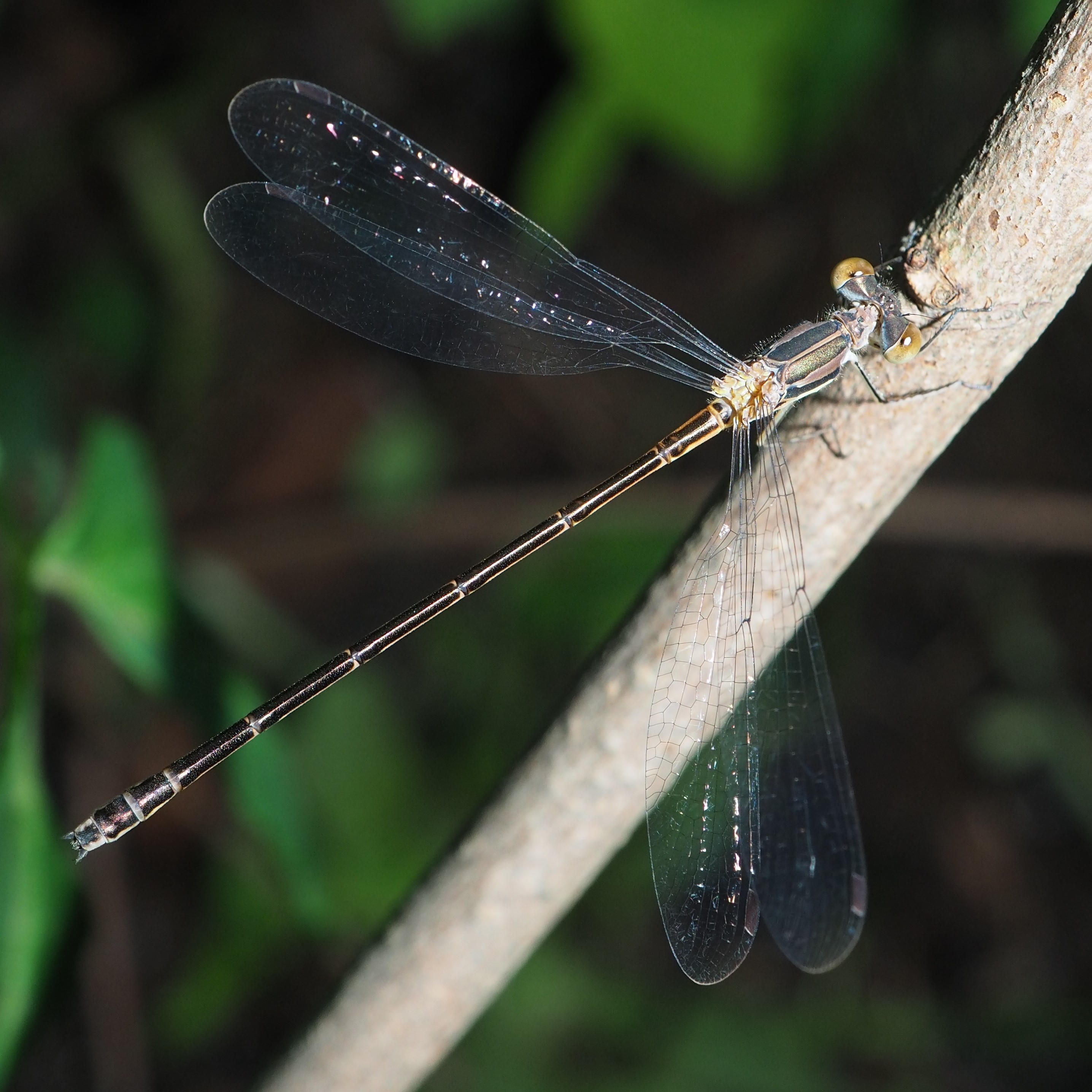
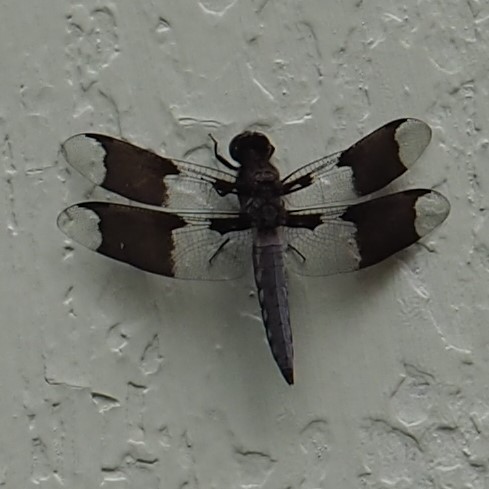
The fishes have figured out that the "Here, fishy, fishy, fishy, fishy" song is the call for food. Here are Bunky, (the brightly colored Shubunkin), Baby Leroy (named that because of his large size) and Little Chico (named for Chico, a larger fish that we thought was a male, but who was in female position in the fishy chasing scene. I guess I should call her Chica....). And two more feeding scenes. Number 2 has 6 or 7 fishes in it. I believe there are about 12 fishes remaining out of a somewhat larger family BR (before raccoons).
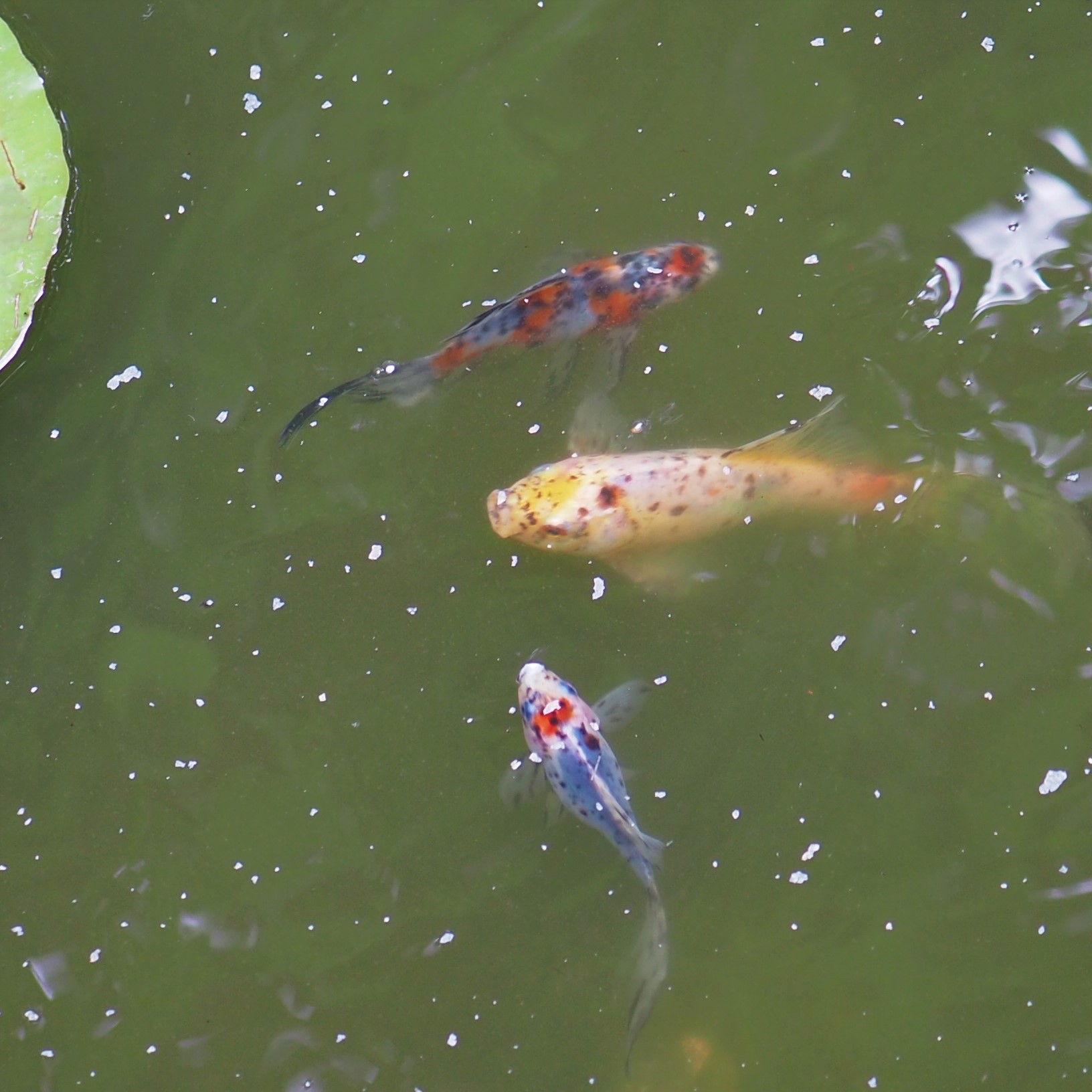

There are two kinds of fly that I always get mixed up. One is this "stilt-legged" fly, genus Rainieria (pictures 1 and 2). I like its yellow and brown striped legs. The other is the Black Scavenger Fly. Note the last two images show the Black Scavenger with some prey.
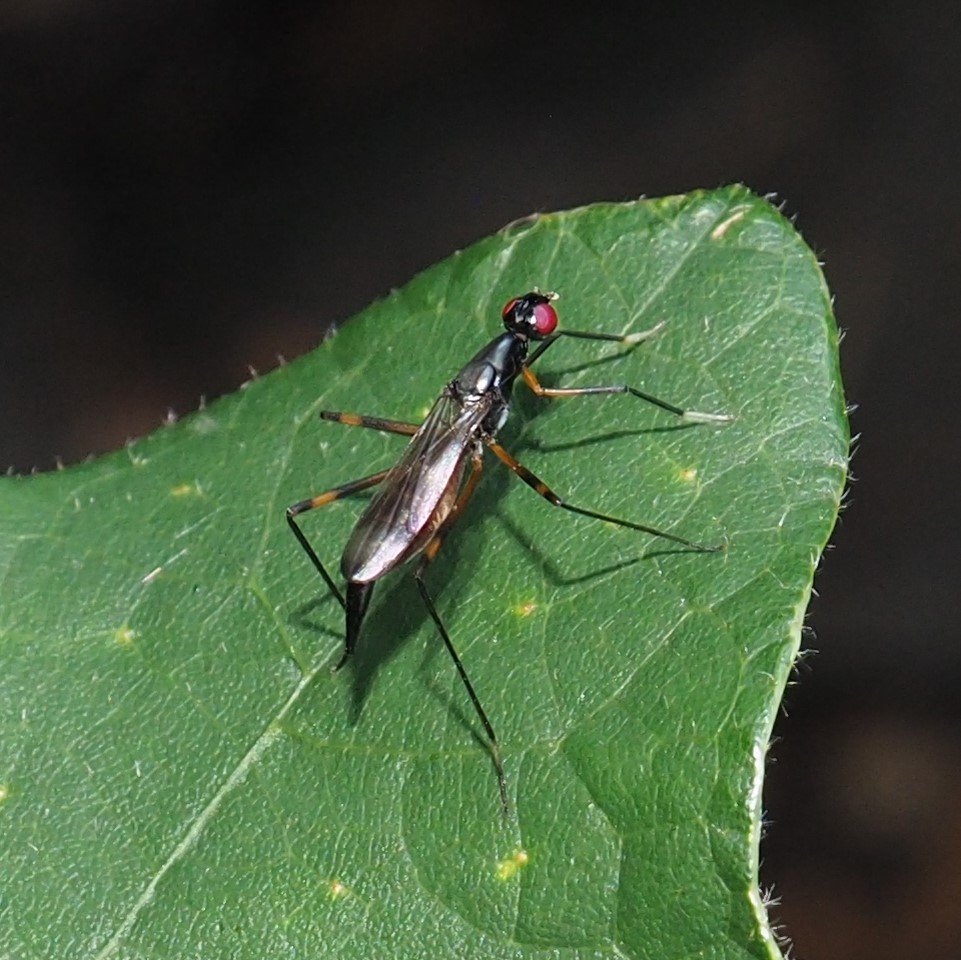
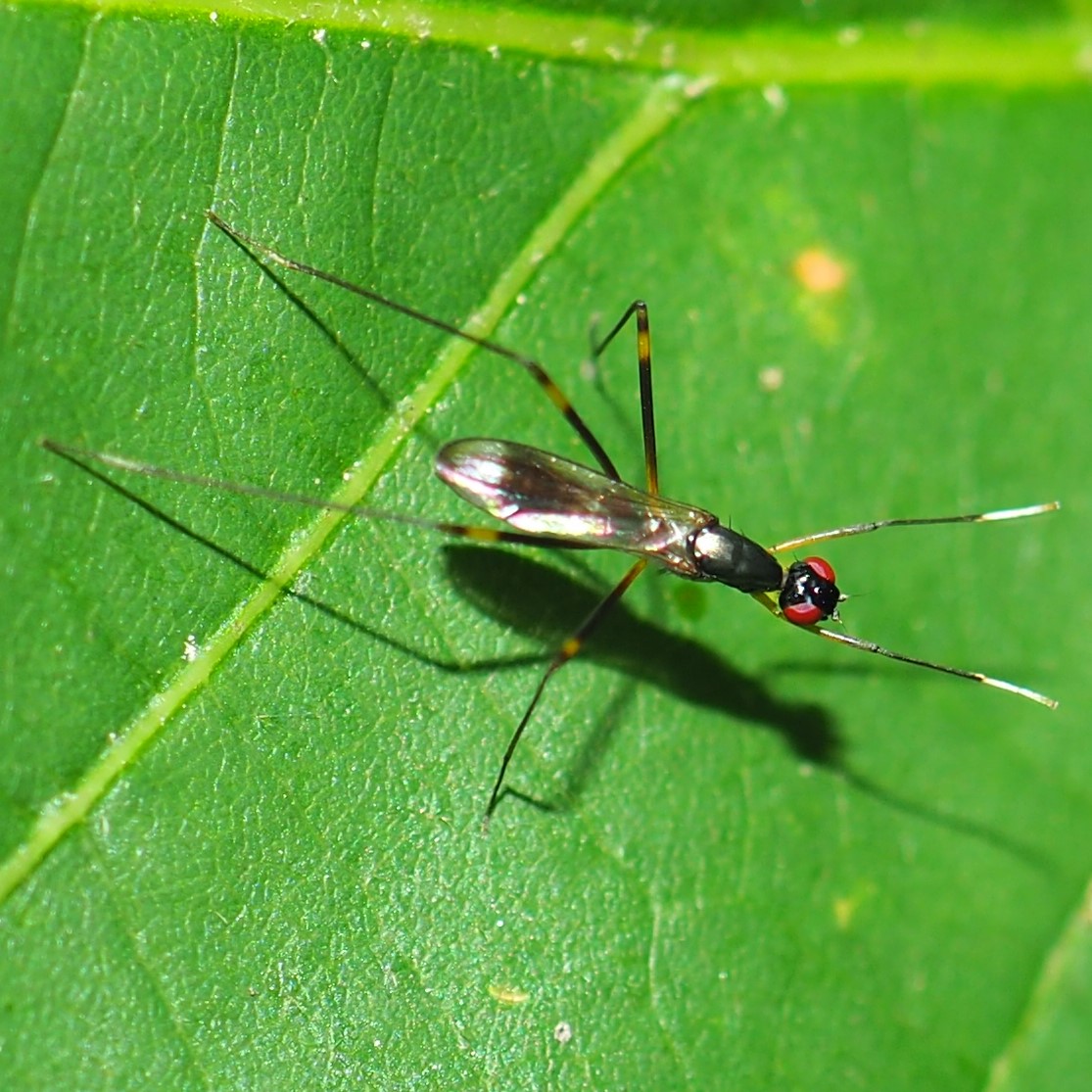
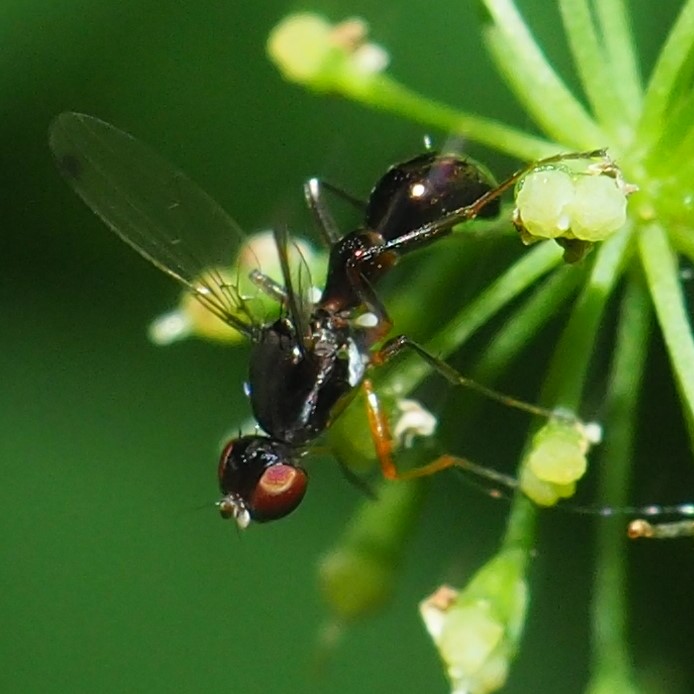
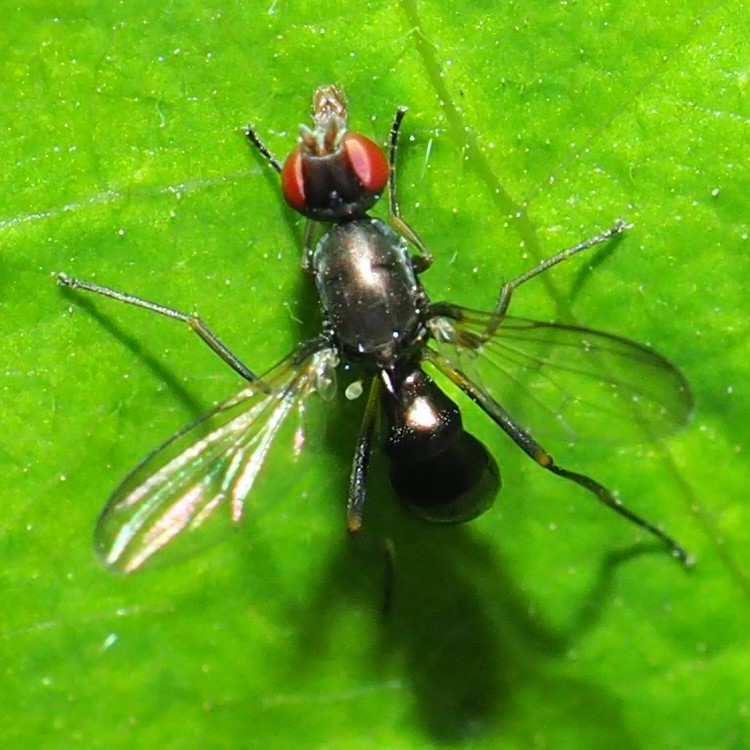
We had three kinds of Crane Flies. All three were sort of plain-colored. One is brown, one black and the third grey. I wonder if that red splotch on the first one's leg is a parasitic mite?
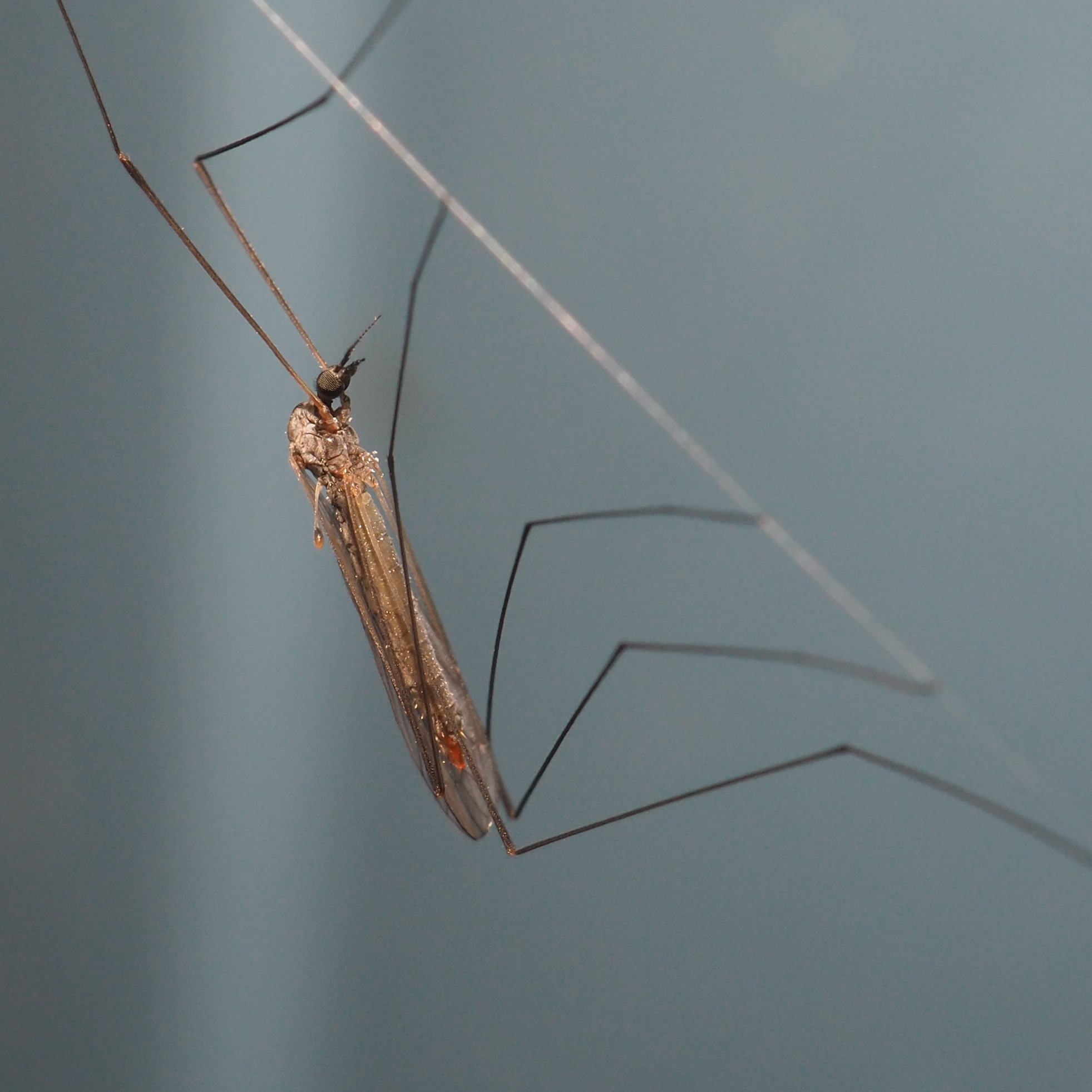
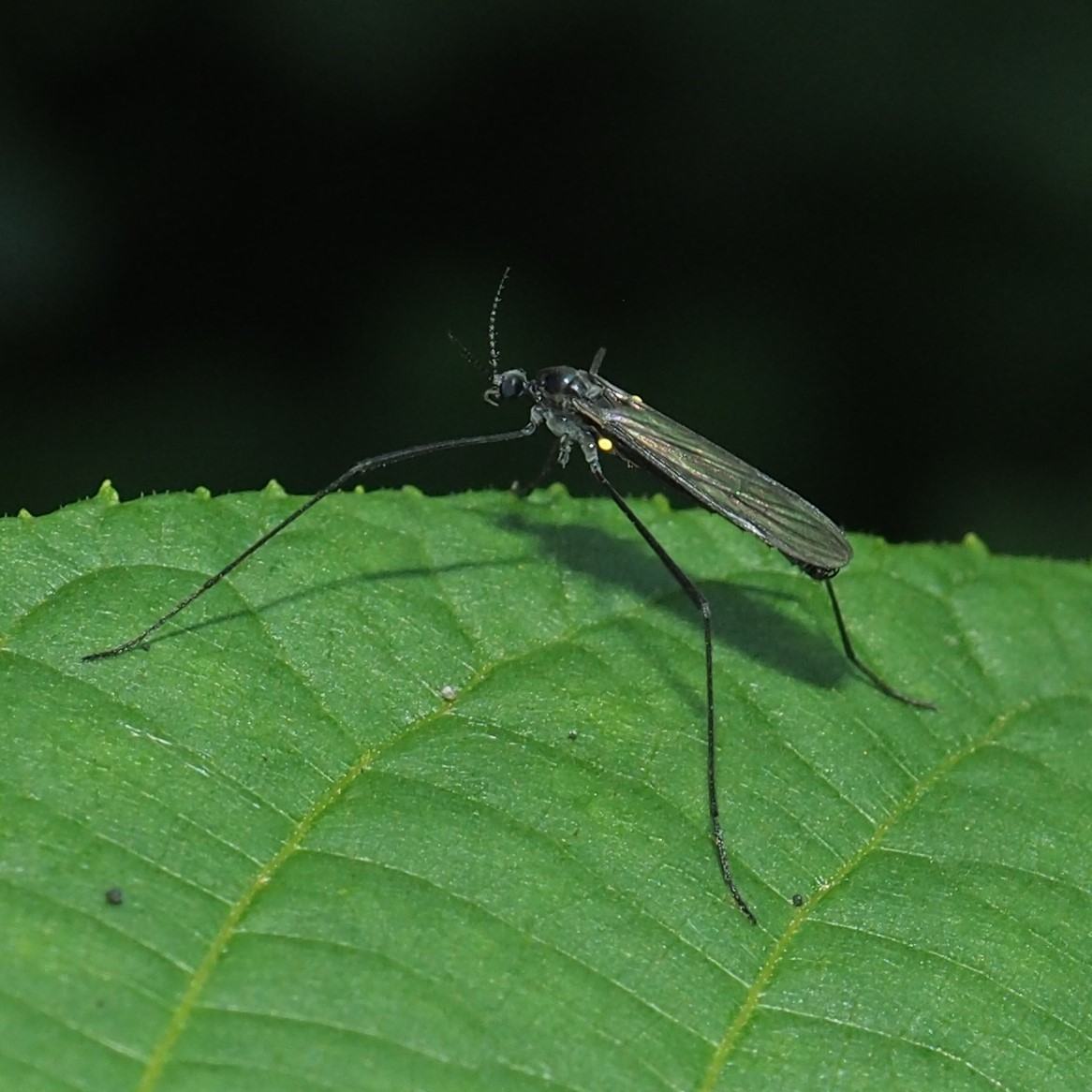
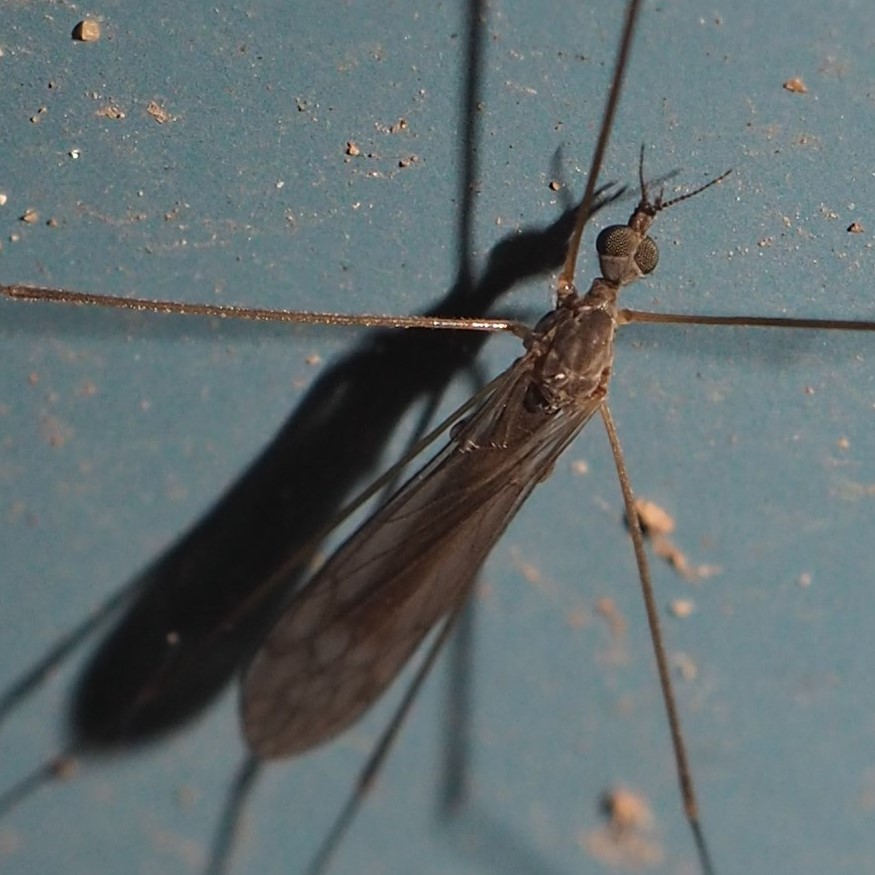
My goodness, there were such a lot of interesting flies. And you used to think they were so boring. Or did you? Look at the spooky face on this one. It looks as if it can't believe its eyes! Then just look at the looong antennae on this gall midge. Last, guess what type blood that mosquito is full of? I'm guessing 0+.
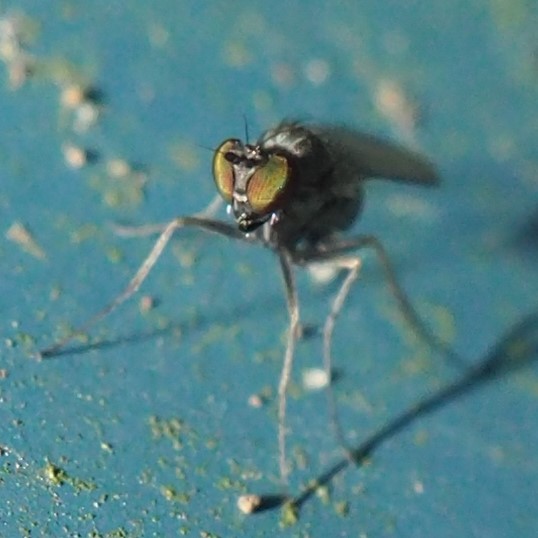
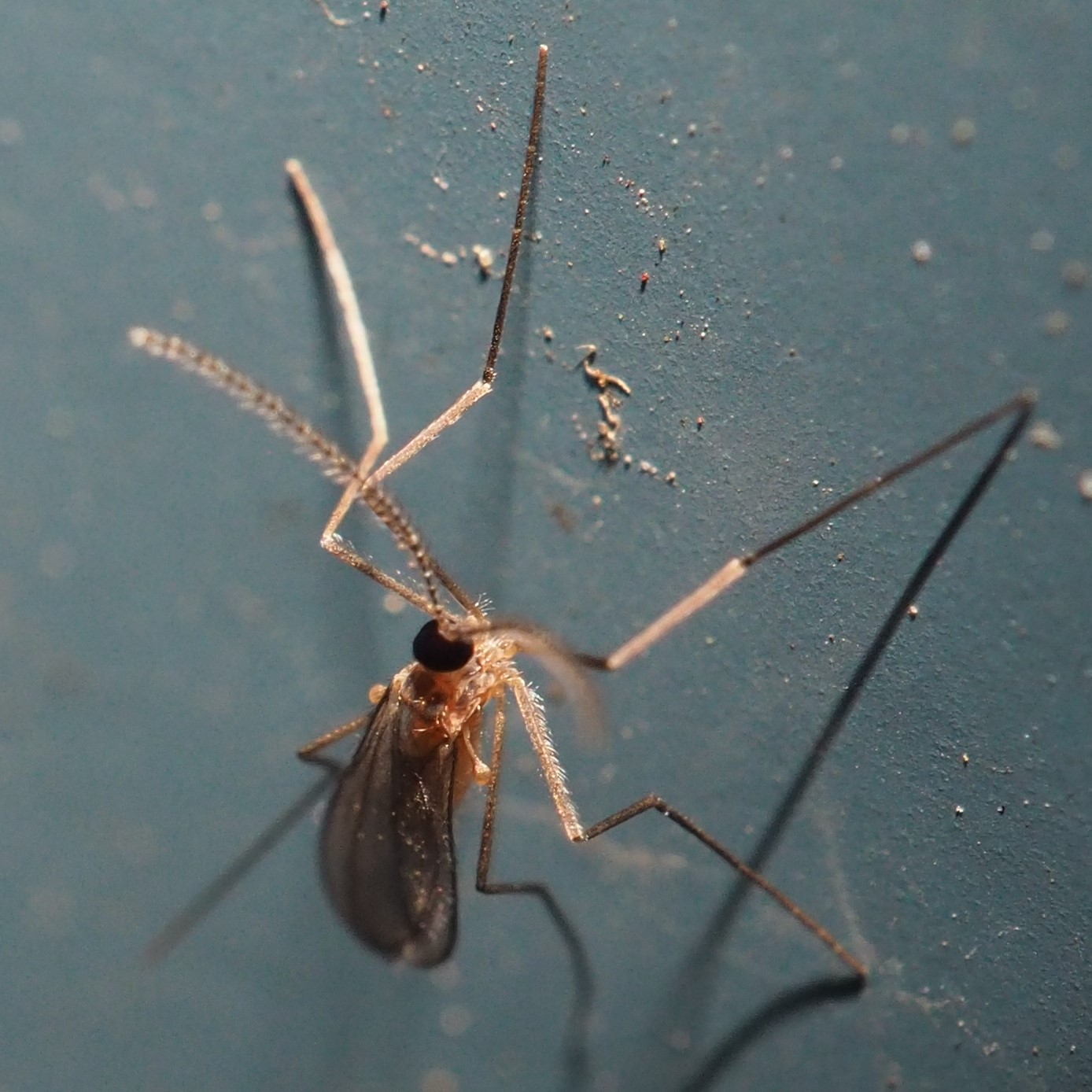

By now you know that this little moth is really a Moth Fly, right? How pretty this little mystery is. And this fat one is also pretty aesthetic.
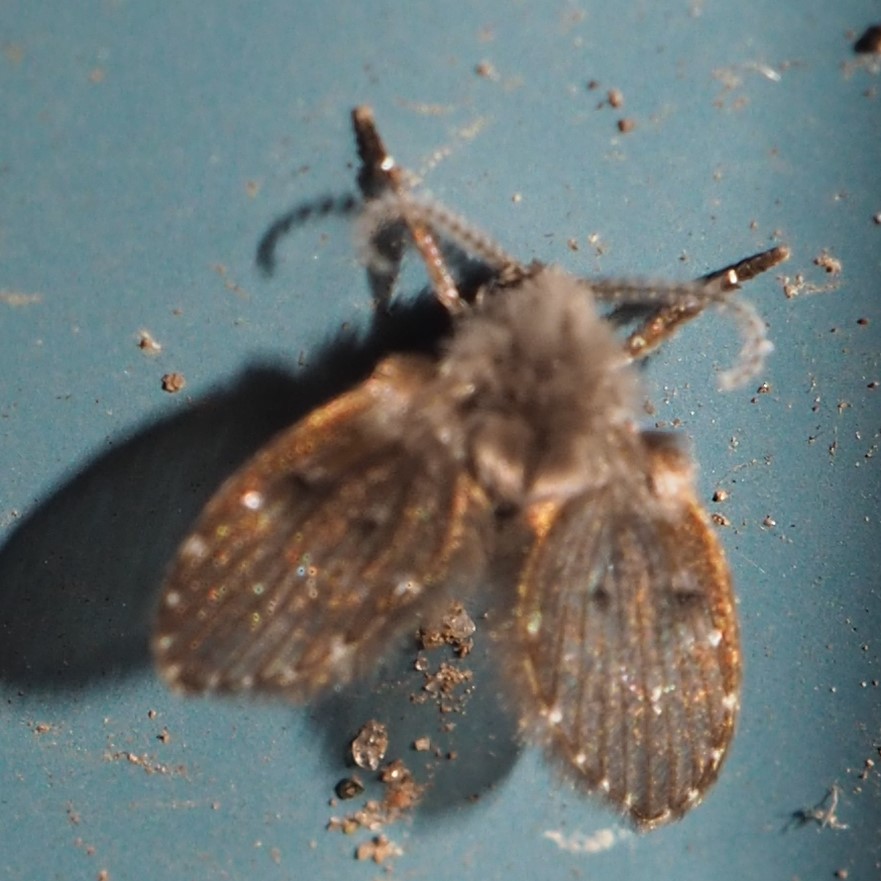
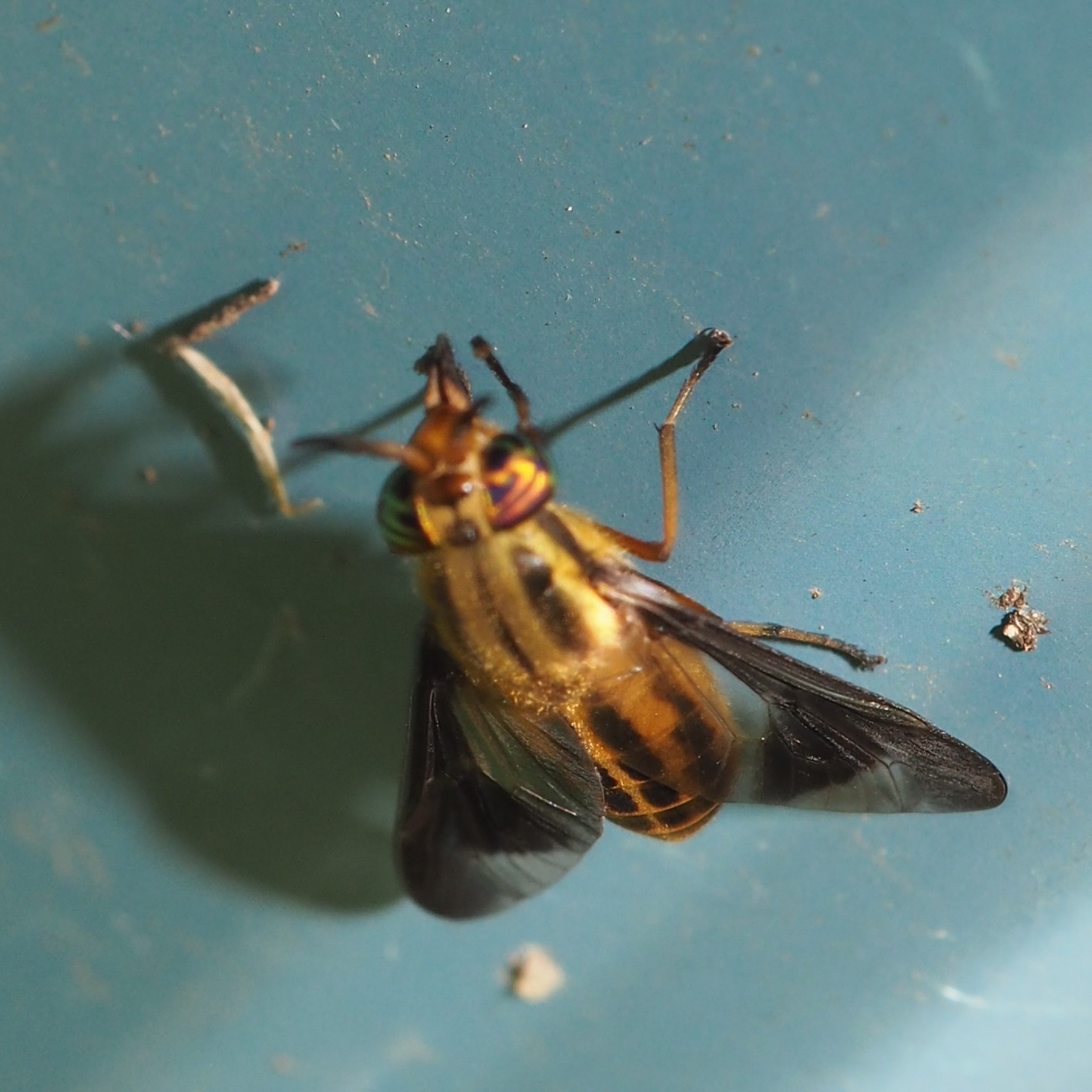
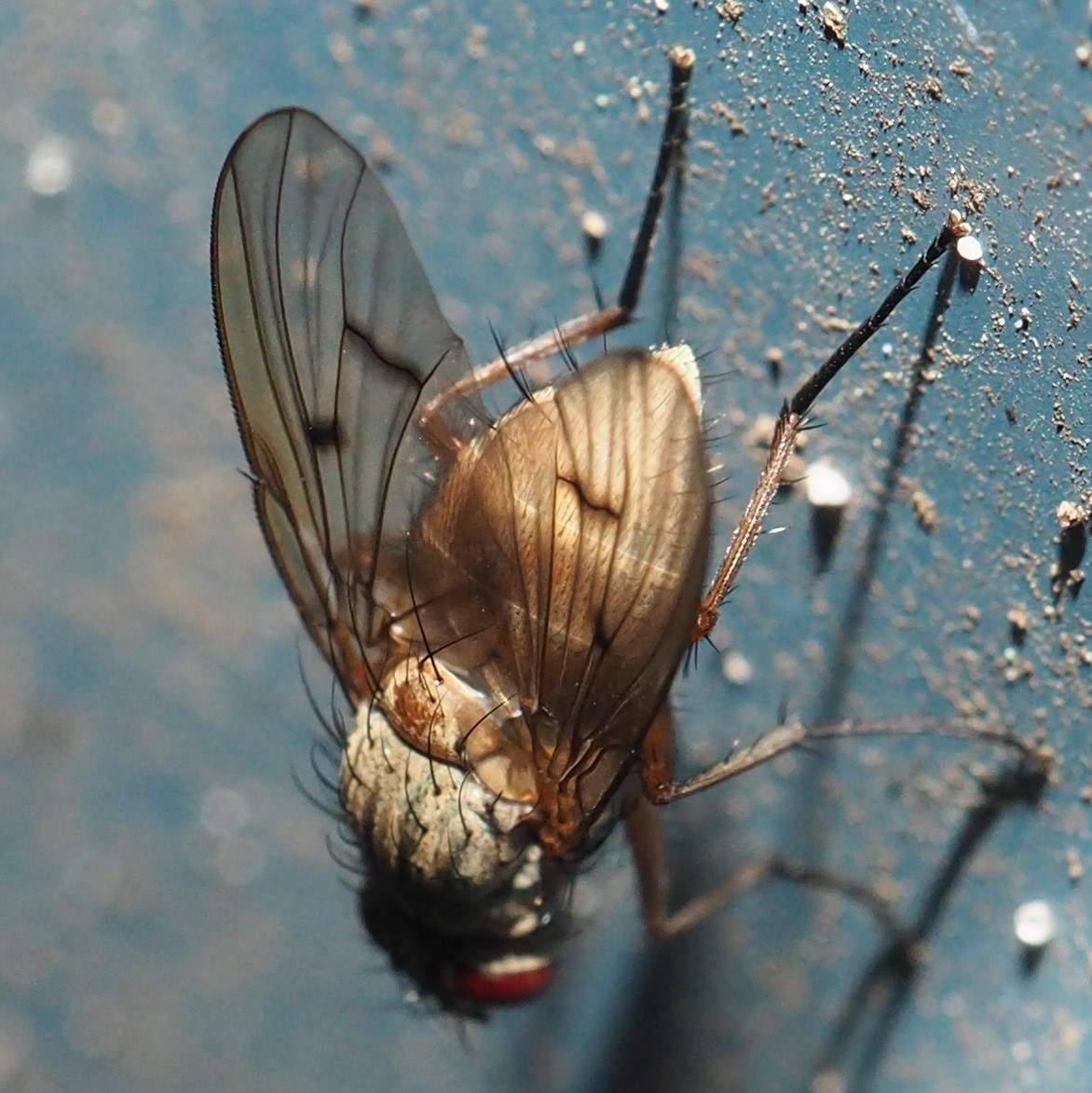
Here are a few more interesting flies. Look at the wrinkled eyes on this first one - usually flies' eyes are so large and rounded. For example, consider these next two - they are the Quadrate Snipe flies. The one with the big red eyes is the male.

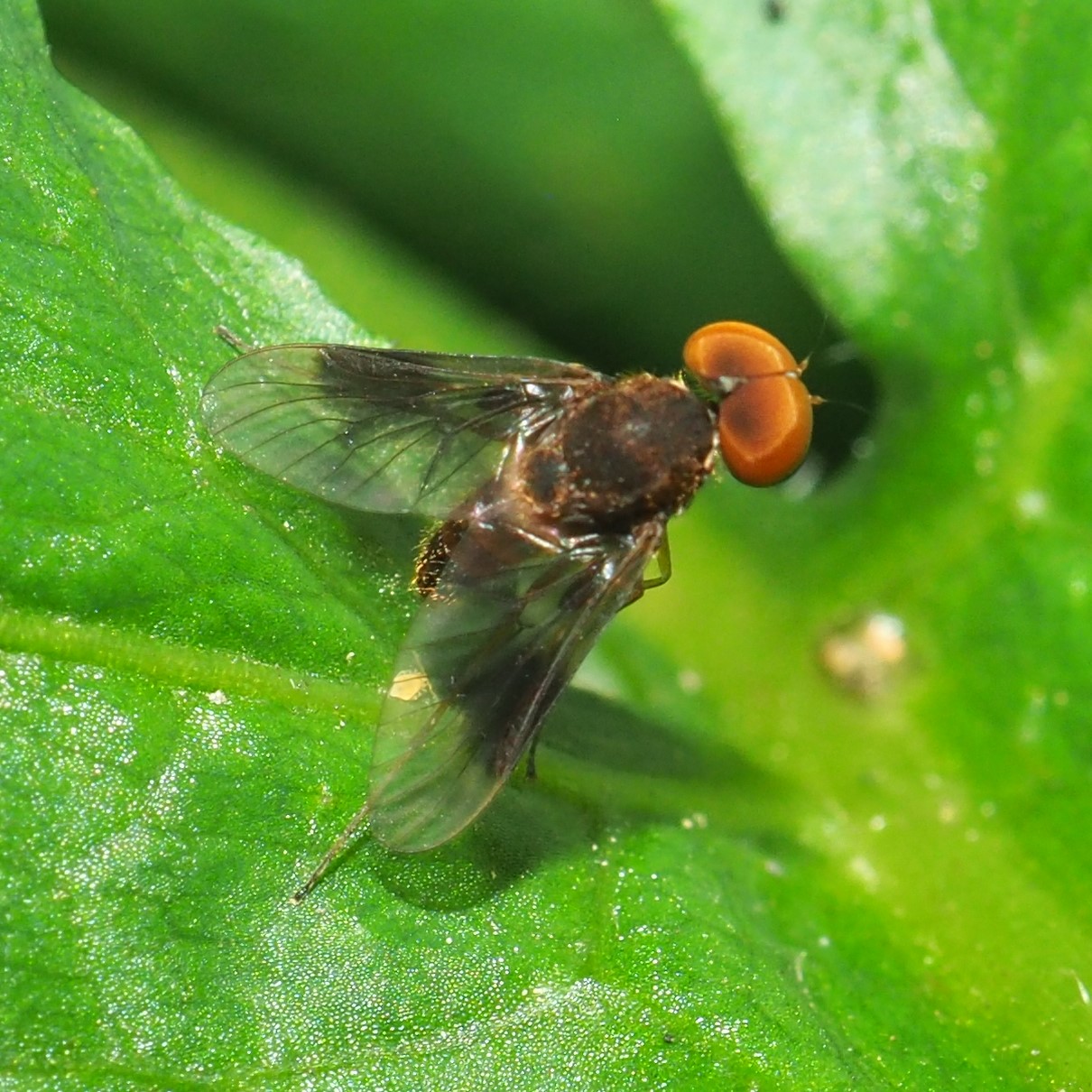
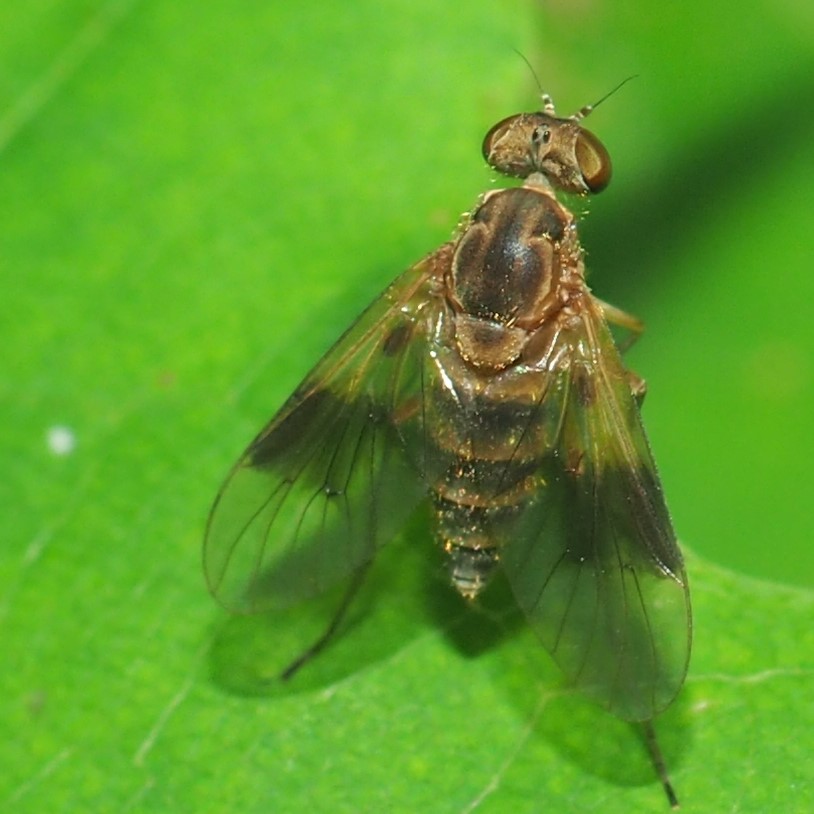
This first fly is the first Robber Fly I've been able to catch this year. I like its matching shadow. The second one is called Sarcophagus - literally, flesh-eating. It cleans up dead critters, so we're glad to see them. A couple of weeks ago, these little Hover Flies were everywhere but now I'm only seeing a few and only this particular species (Toxomerus geminatus).
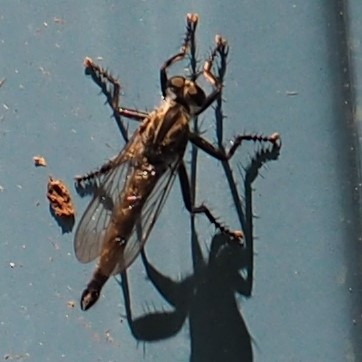
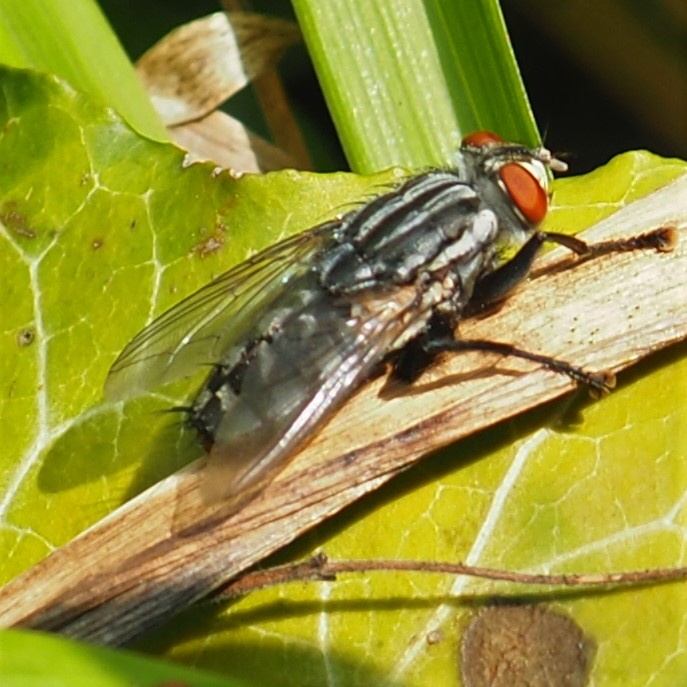
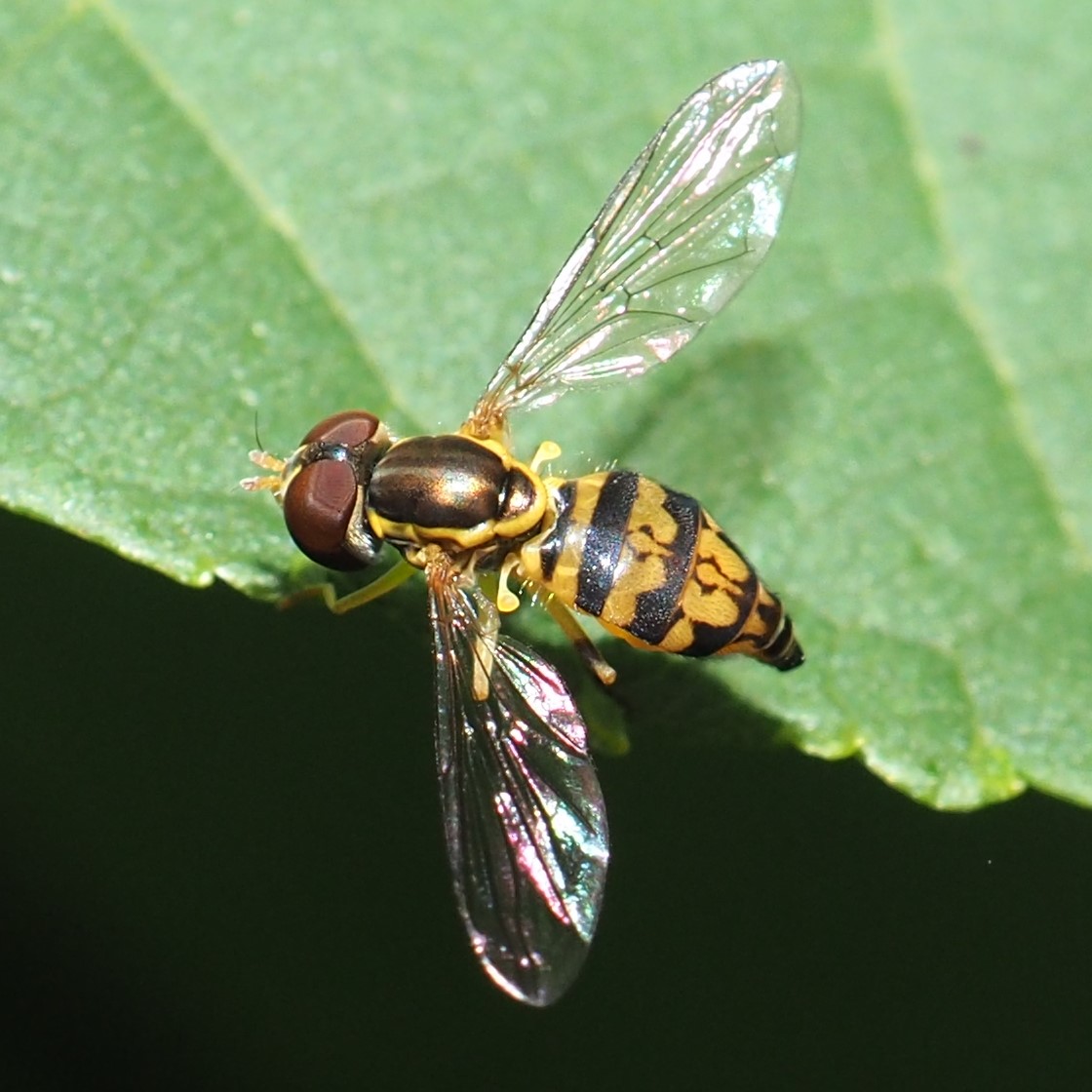
It's time to show you a really interesting fly. Look at those eyes. It is called the Wavy Mucksucker (Orthonevra nitida). That seems a rather nasty name for such a beauty, doesn't it? It is a Drone Fly, which is a kind of Hover Fly, so I'm counting this charmer as a Hover Fly!
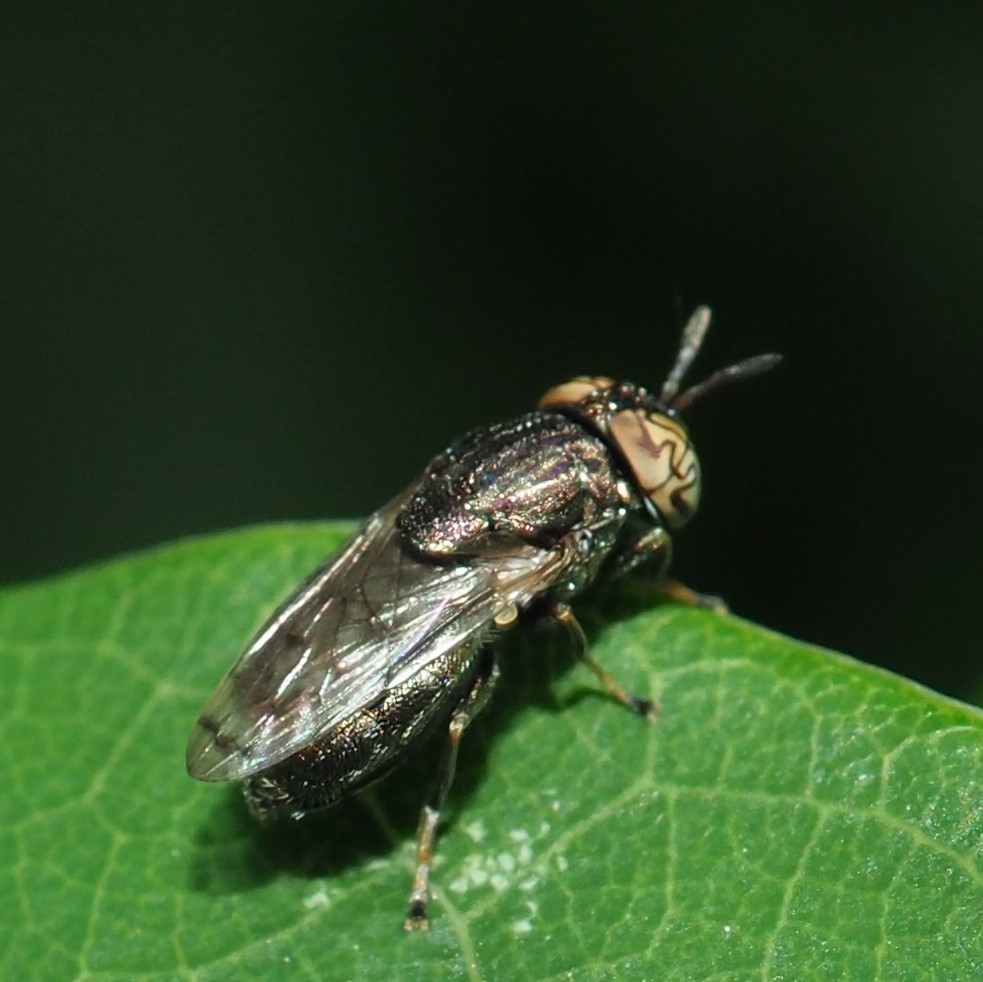
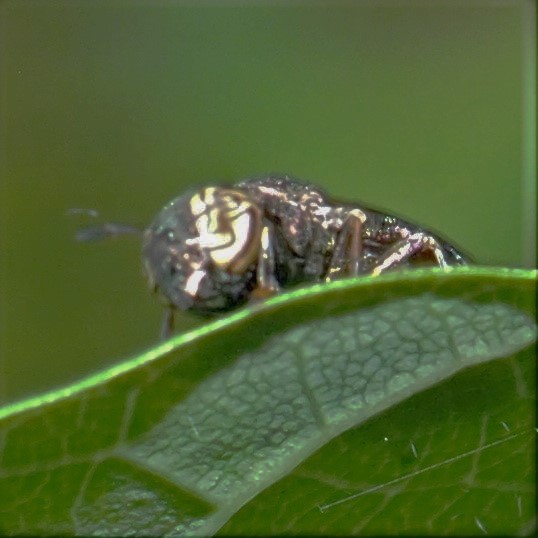
Here is an insect I haven't got identified yet. It was very small and hiding in the goldenrod. But I THINK it's a fly. In the middle picture, it's hard to see how many wings there are. To be a fly, it needs to have only ONE pair of wings. But here is a pair of REAL flies, some kind of Lauxaniid Flies, making love in the weeds.
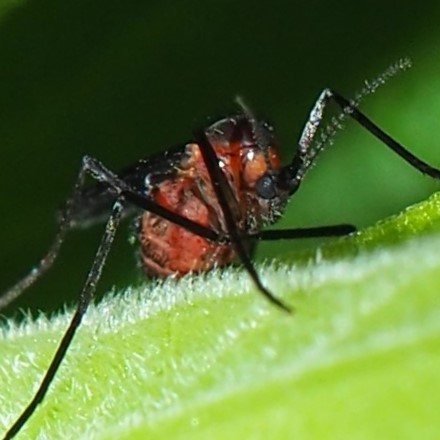
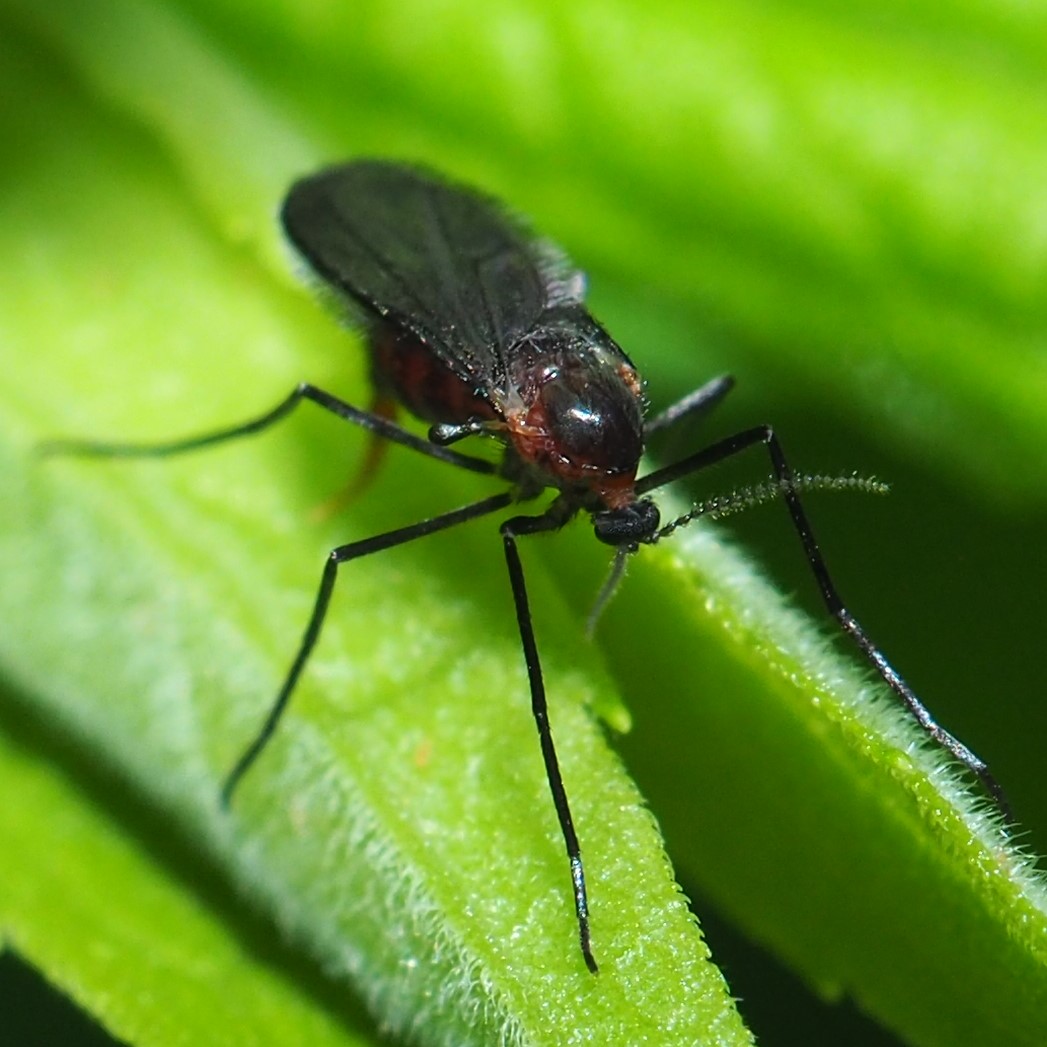
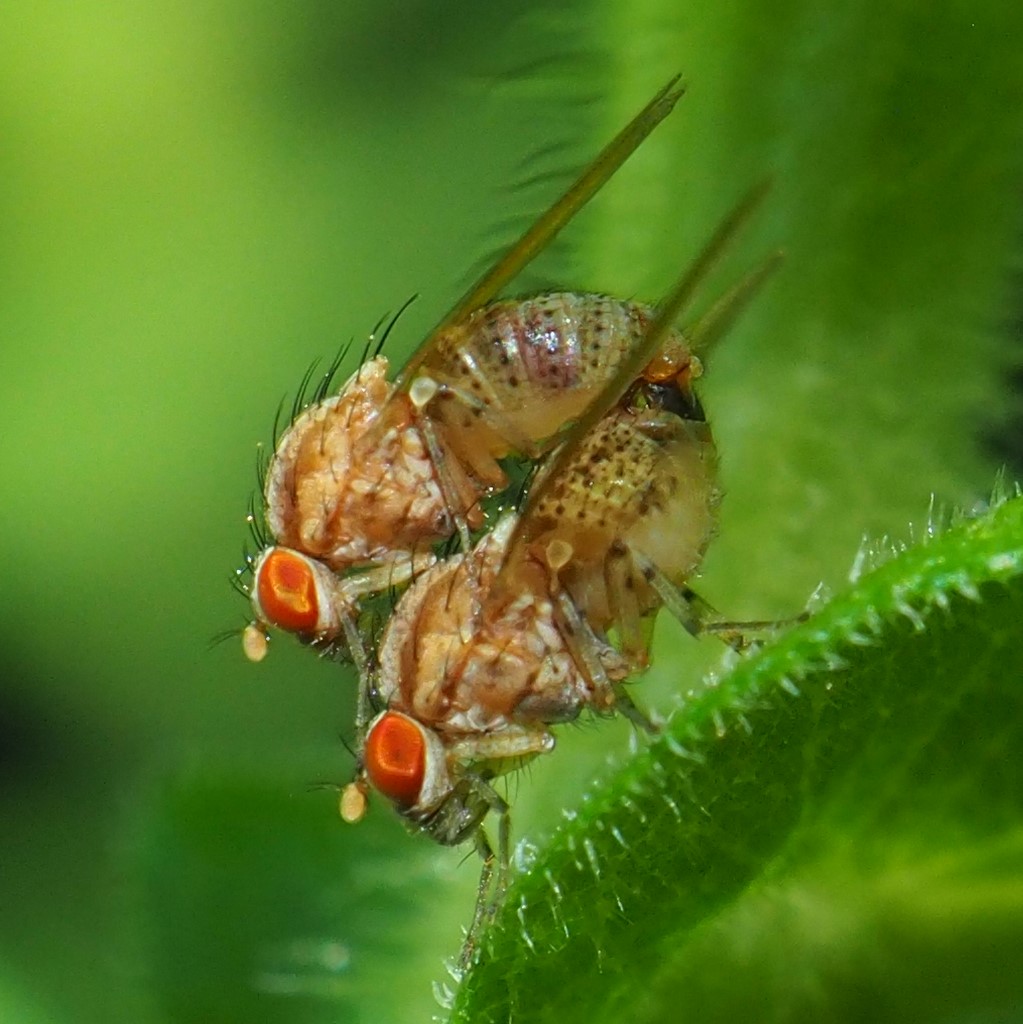
Now for my favorite of all the week's flies! This beauty is actually the colors it takes on most often in the sunlight. It's called Sargus decorus and is a kind of Soldier Fly.
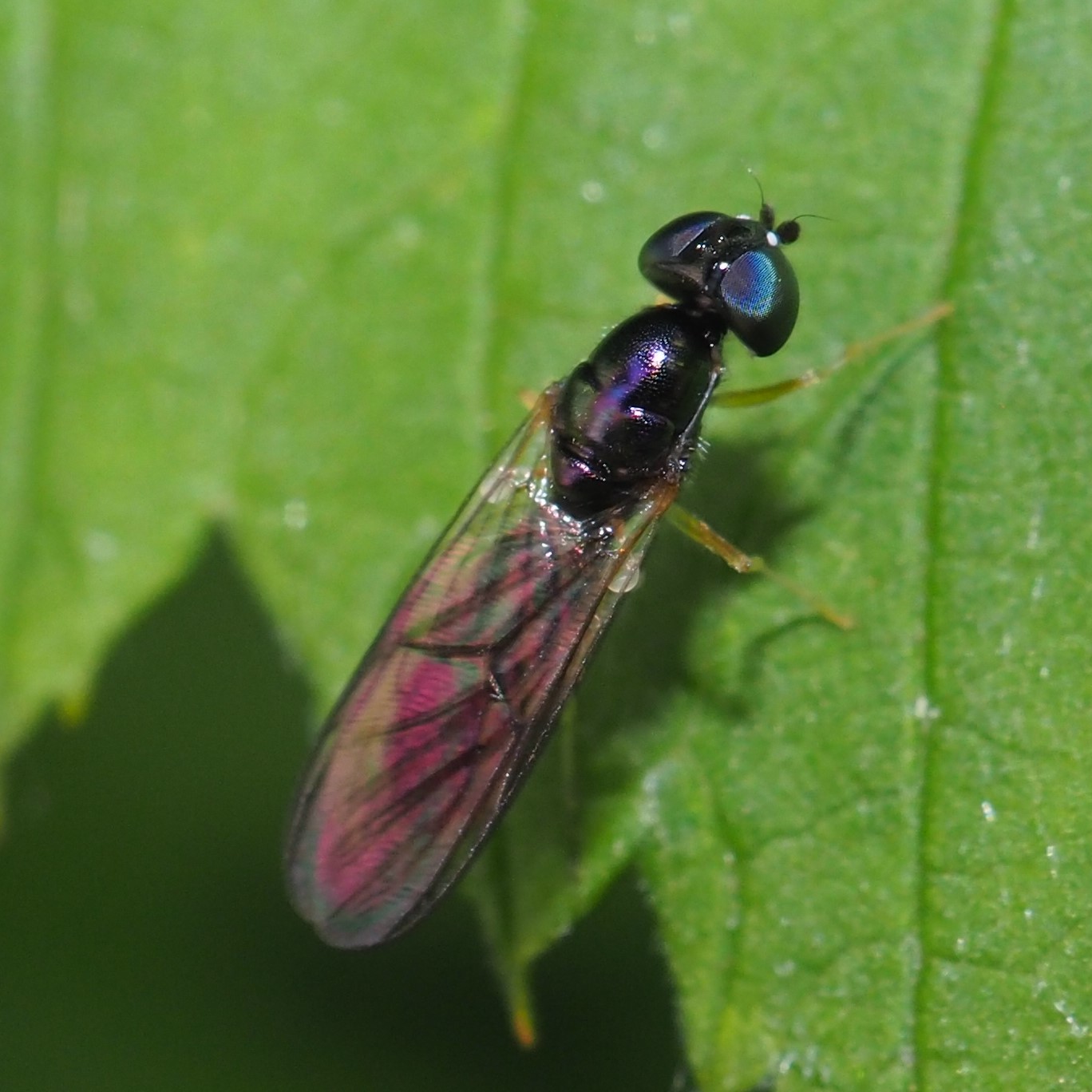
Despite all the wreckage (torn lily pads, for instance) in the pond, Froggy has not deserted us. He still greets me with his cheery "gollum" if I haven't noticed him. There is one thing for you to notice in picture 1. Look how much bigger his typanic membrane (eardrum) is now in comparison with his eye. That is a sure way for us to see that he is closer to a mature male green frog! When will he start to sing for a mate?
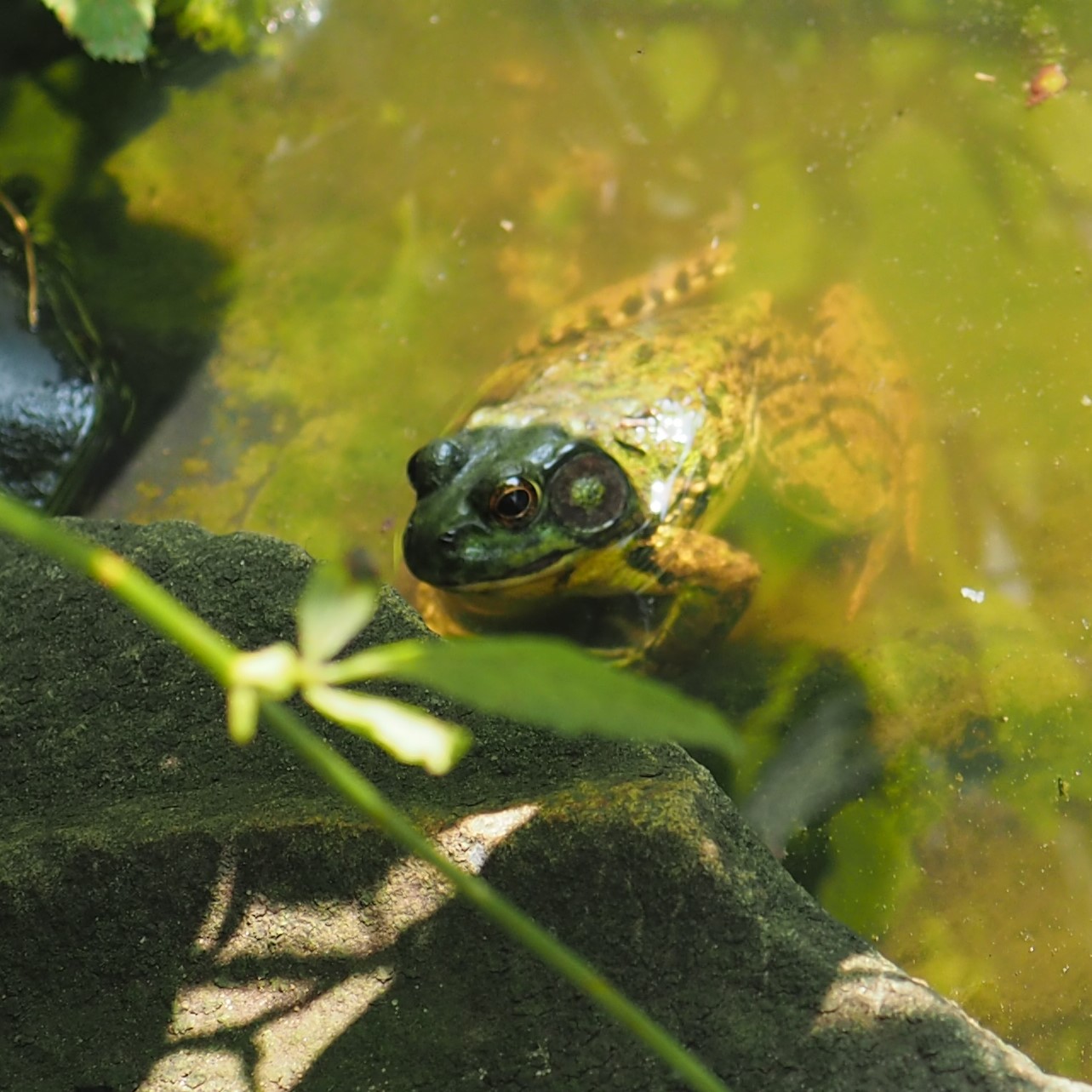
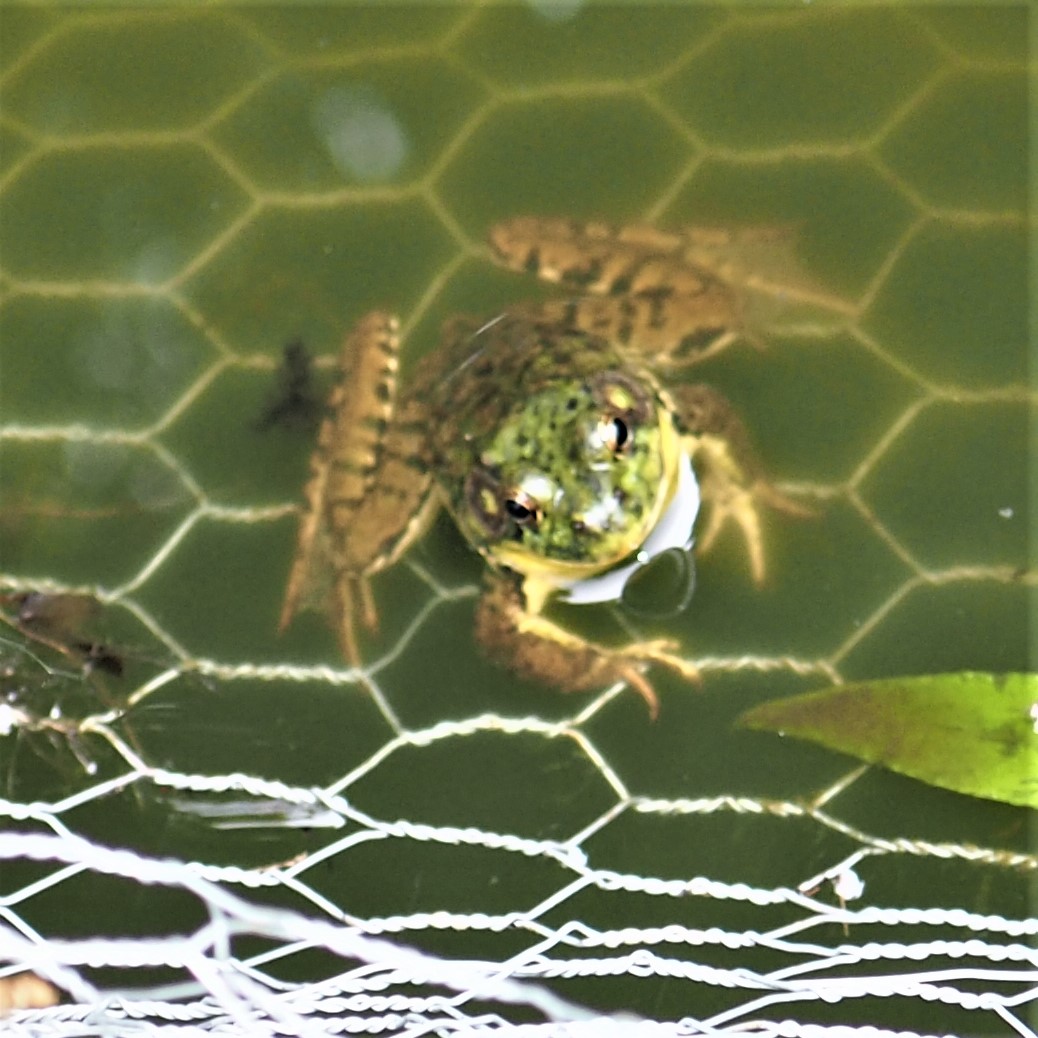
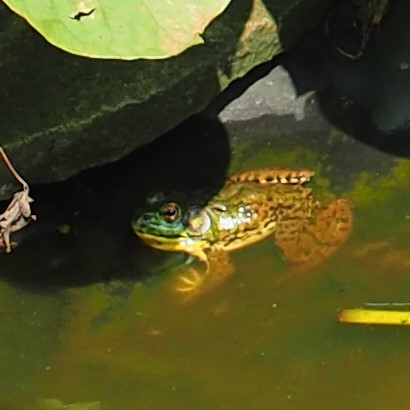
Last week we had a mysterious pink gall on the walnut. It was since identified as caused by a little mite, the Black Walnut Petiole Gall Mite (Aceria caulis). This week I found this squiggly tracing in a raspberry leaf. These squiggles are also known as leaf minings. They are often caused by moth larvae nibbling their way along inside the leaf. This one was caused by the larva of a Fly, Agromyza vockerothi. The third growth is on a Golden Wood Poppy, and I've no idea what is causing it!
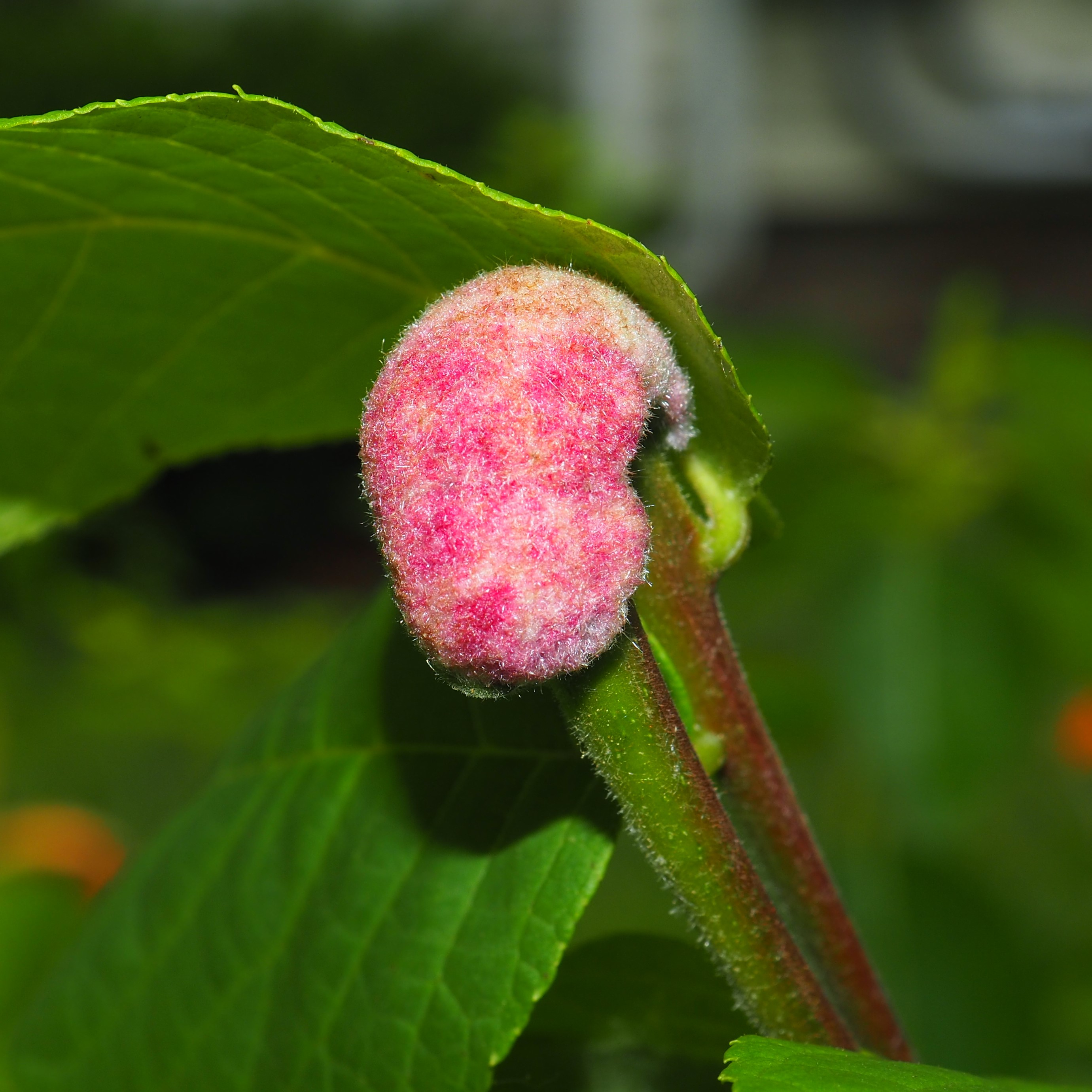
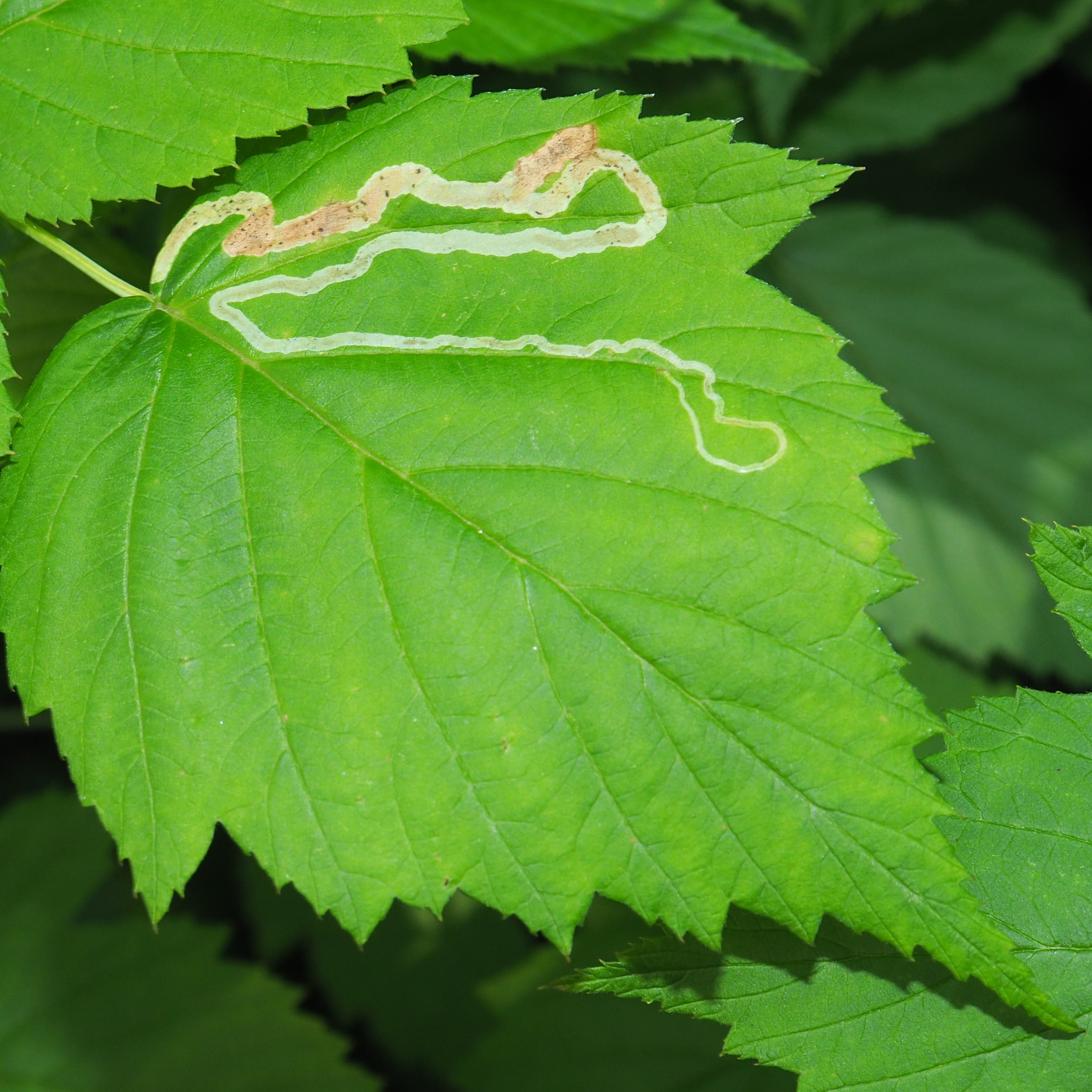
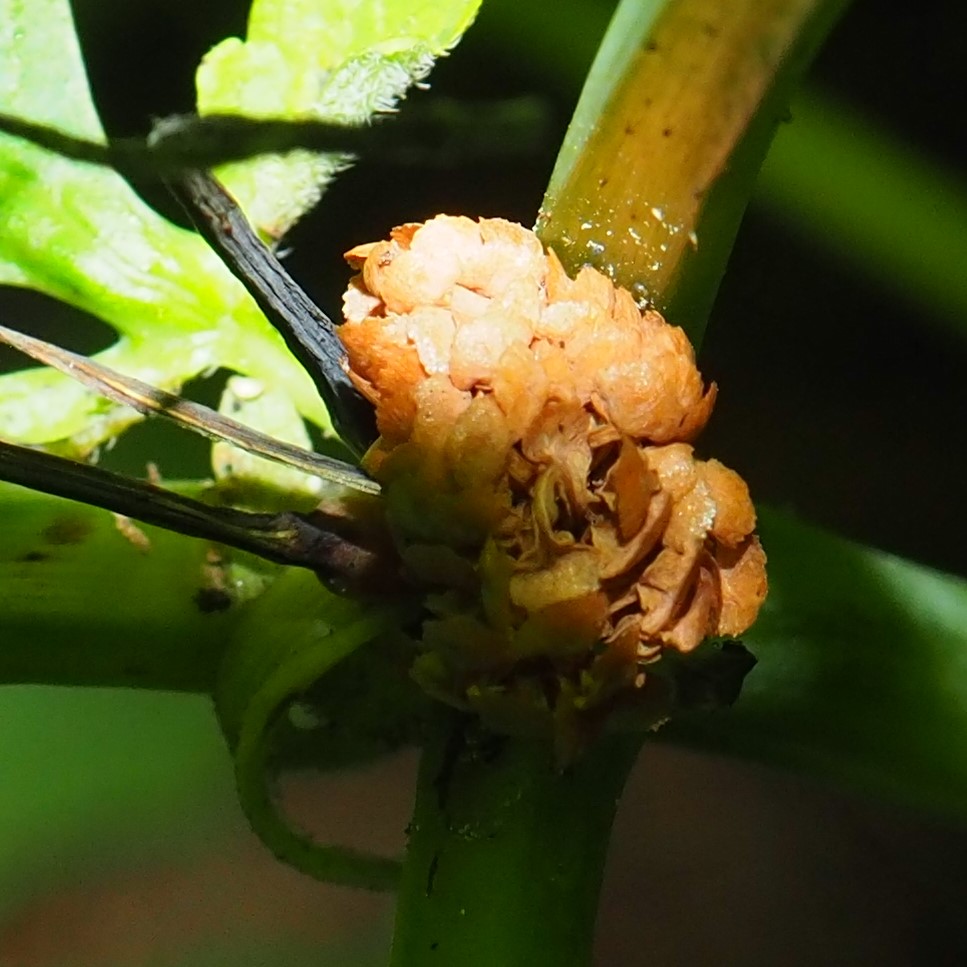
The harvestmen are mostly grown up now. I haven't seen quite so many kinds as in other years. But we have the brown/black and white ones and a plain reddish one. The third photo here is of the black and white one with a large-ish prey.
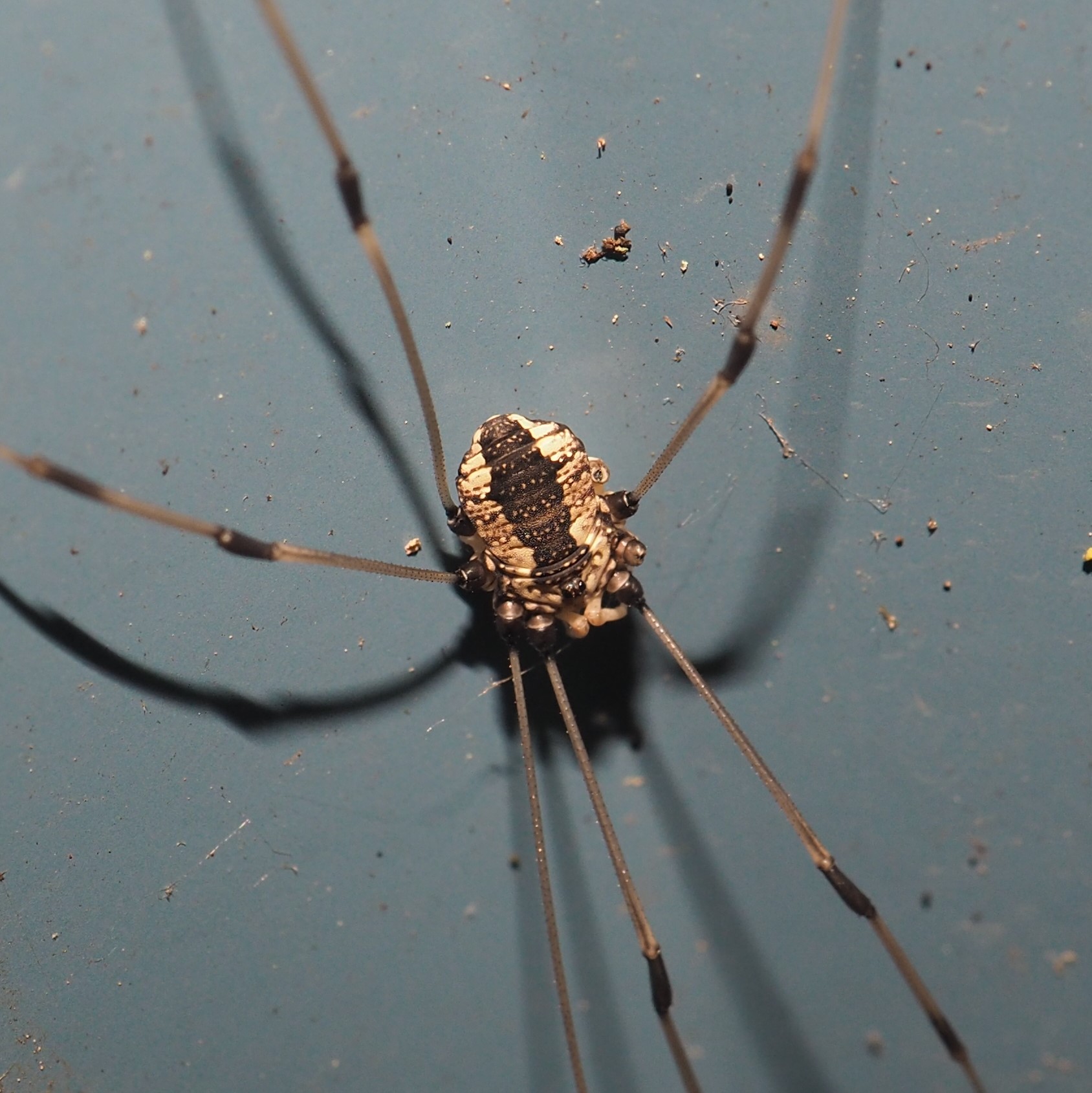
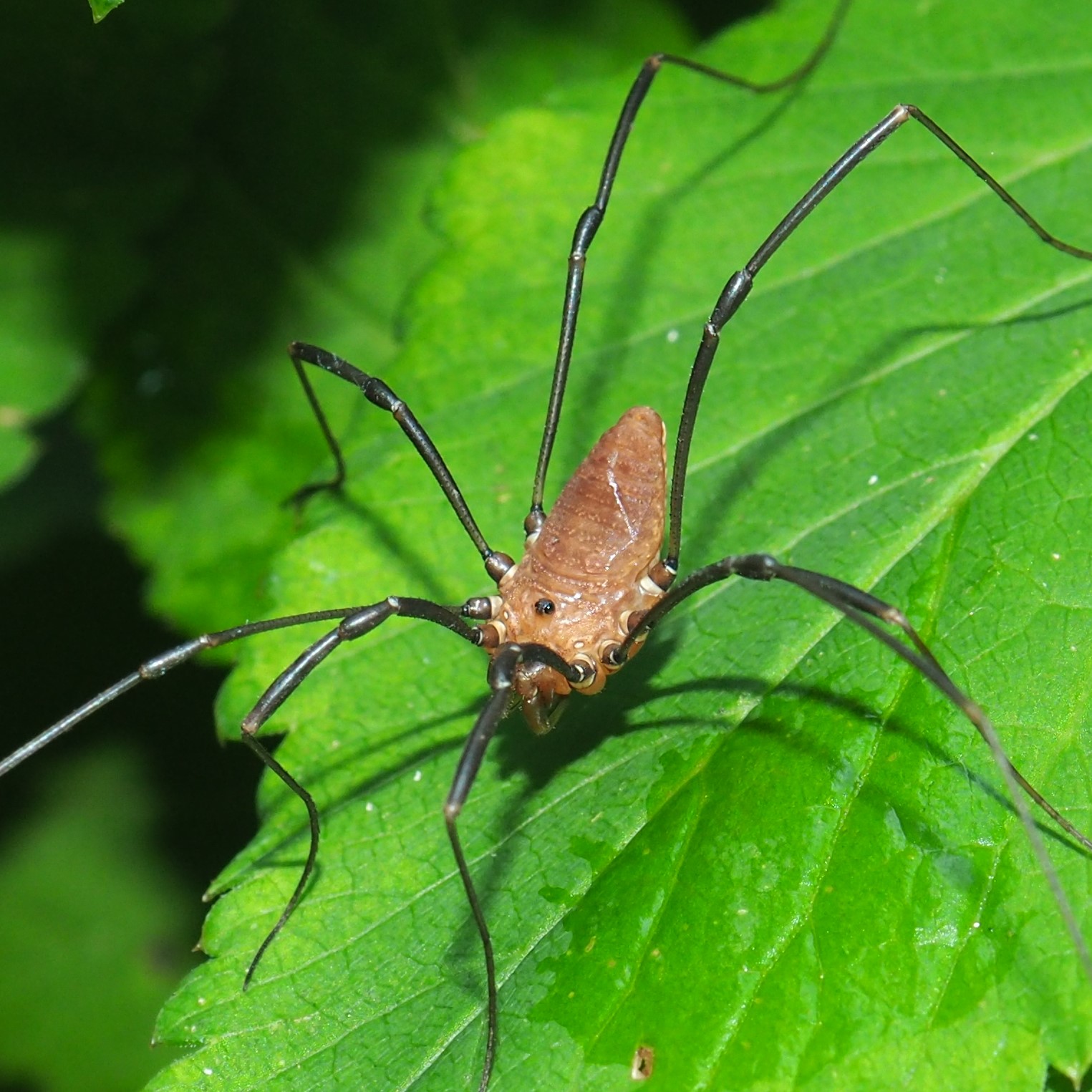
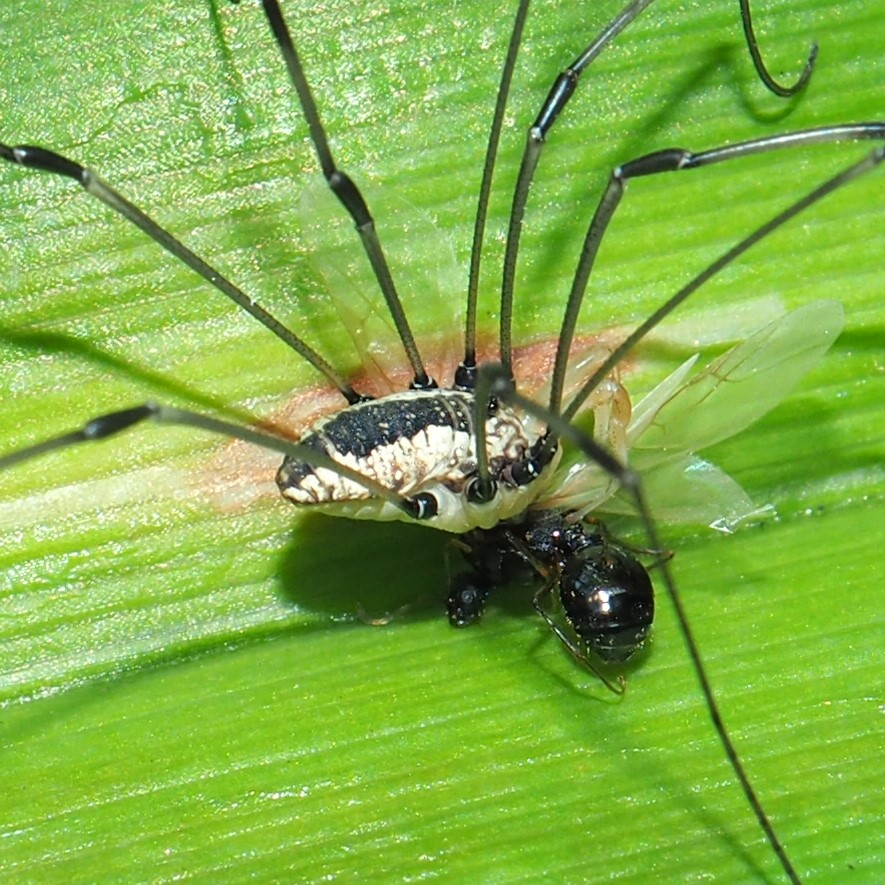
Our Orthoptera (Katydids, Crickets, and Grasshoppers) are starting to fill out. Over in the goldenrod-to-be we found that Two-spotted Tree Cricket again. The baby Katydids look a bit bigger now. Here is one in the Malva, near the place we saw one last week. But my favorite is the full frontal facial view of the Scudderian Bush Katydid. Doesn't he/she look puzzled to see us?
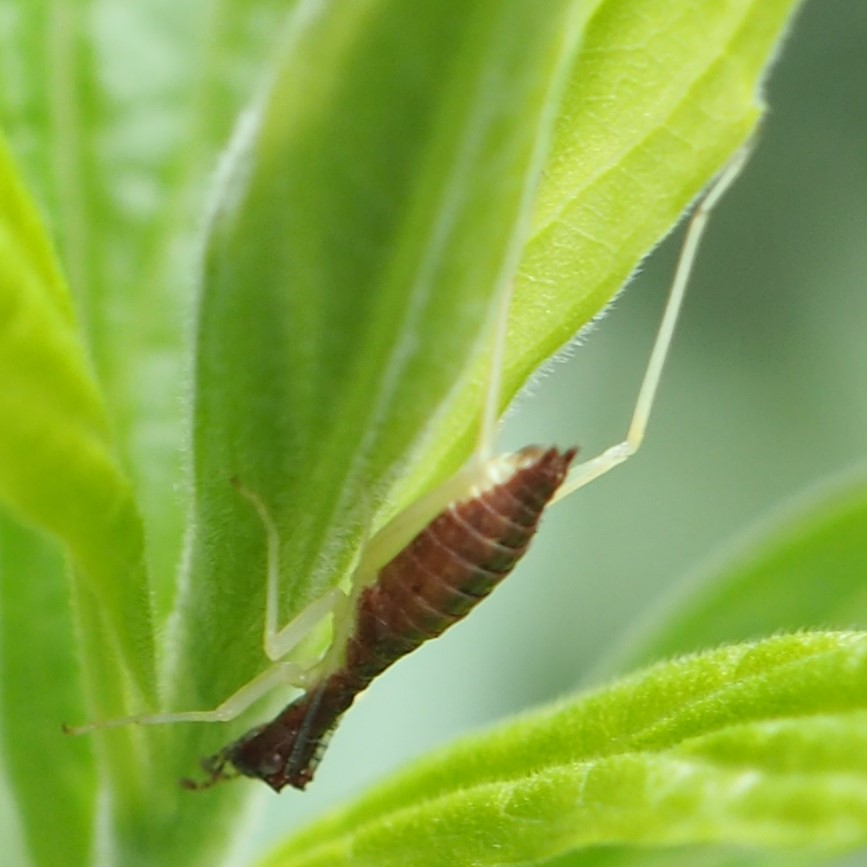
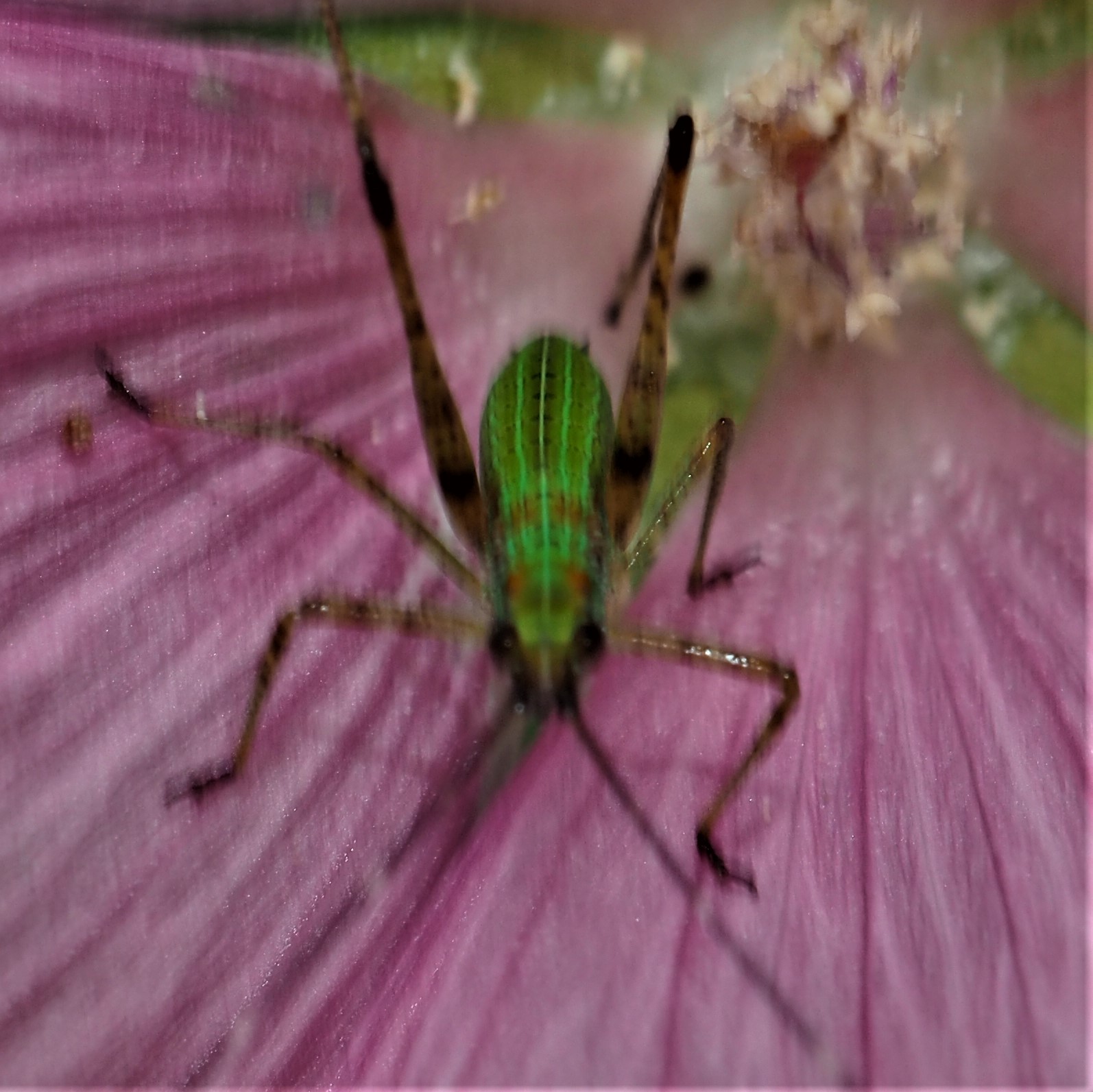
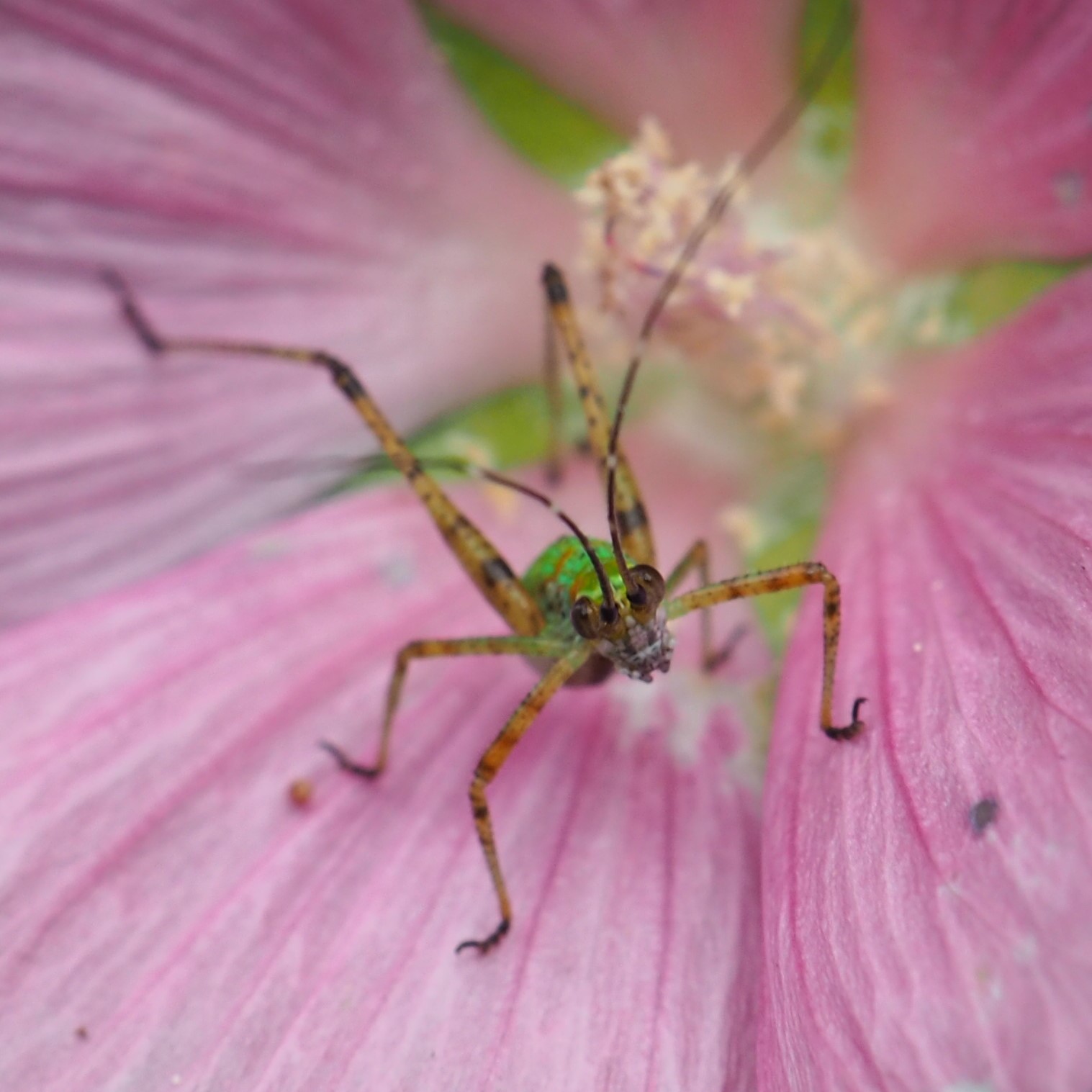
Last week we had a mysterious pink gall on the walnut. It was since identified as caused by a little mite, the Black Walnut Petiole Gall Mite (Aceria caulis). This week I found this squiggly tracing in a raspberry leaf. These squiggles are also known as leaf minings. They are often caused by moth larvae nibbling their way along inside the leaf. This one was caused by the larva of a Fly, Agromyza vockerothi. The third growth is on a Golden Wood Poppy, and I've no idea what is causing it!



The other day when I came in to crop the newest pictures, I felt something tiny tickling me on the back of the hand. I could barely see the little creature - a weensy red mite running hither and thither wondering if it was all right to bite me, I suppose. I managed to take a few pictures while it ran about but finally my human instinct took over and the tiny mite was no more, though I suppose there are still plenty of them outside! Well, at least the little mite forms a good introduction to some other 8-legged creatures, namely our Spiders! Squint as you view picture #2 - you should be able to see a human-ish face in the abdomen of this Common House Spider. Note: this only works for the females - the male Common House Spiders are red!
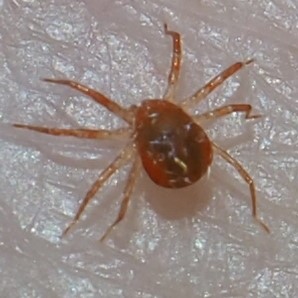
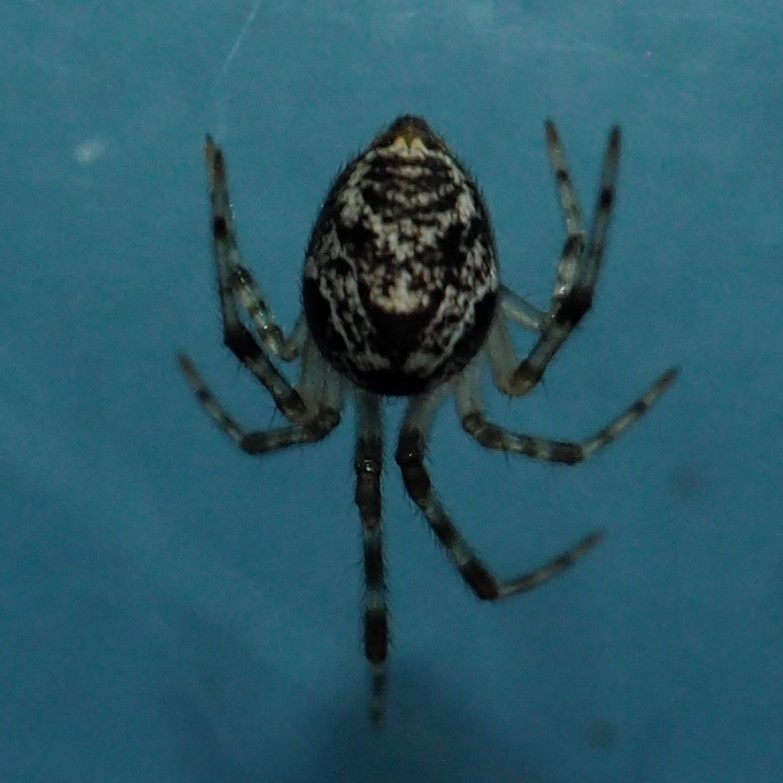
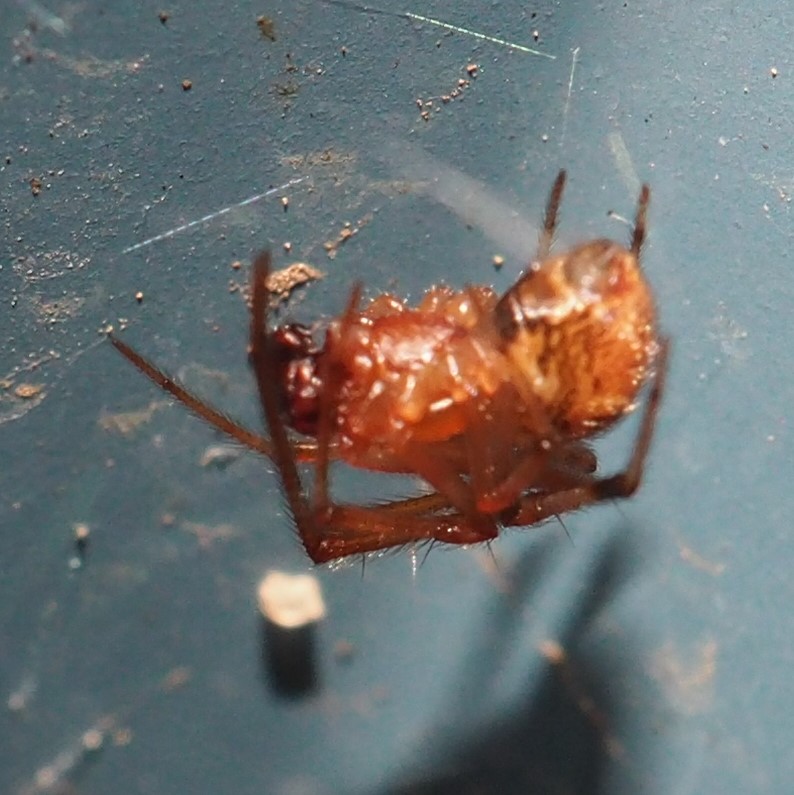
One of my favorite of the Cobweb Spiders is this one, probably of genus Theridion. Next is a Running Crab Spider. Then a Grass Spider, in his/her sheet web.
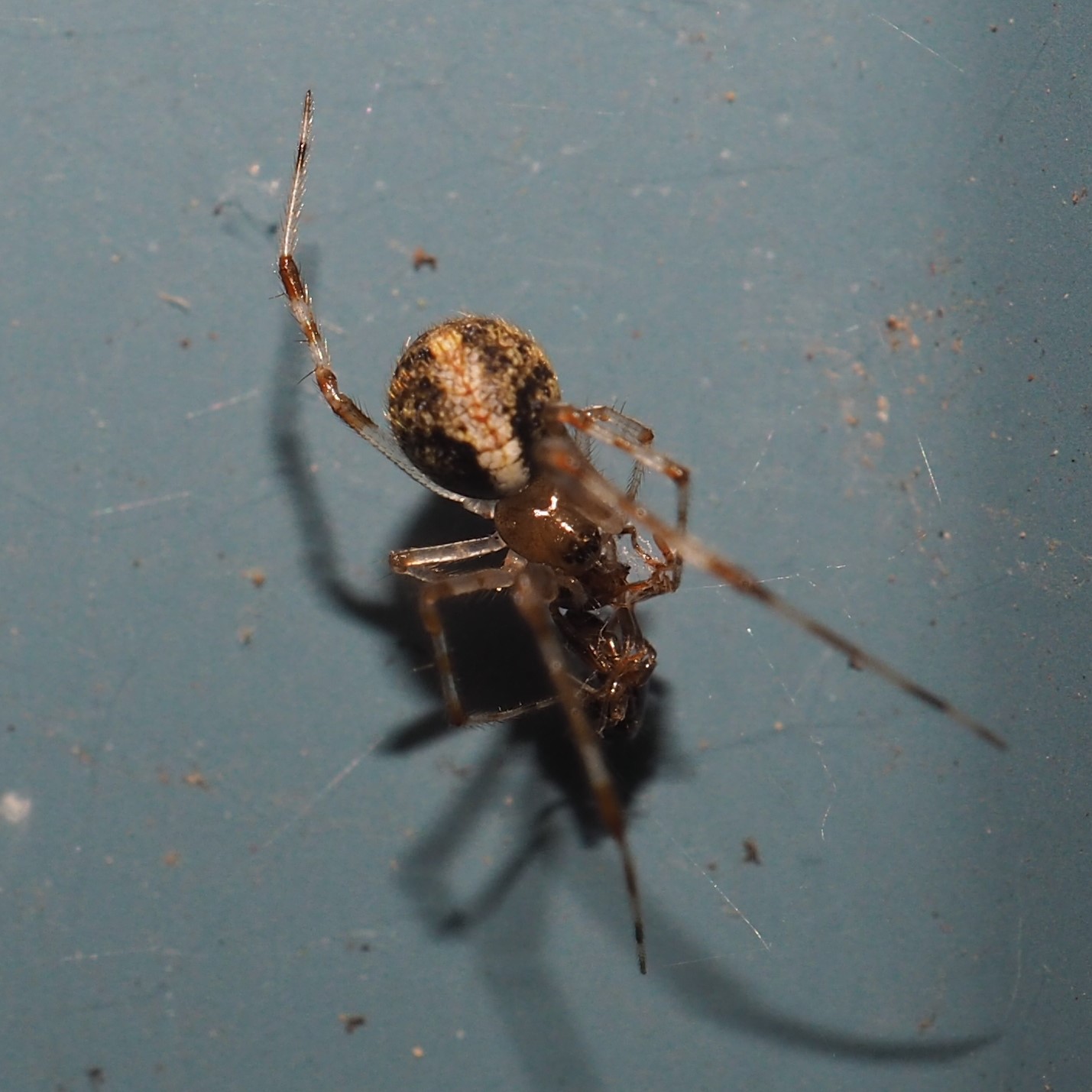
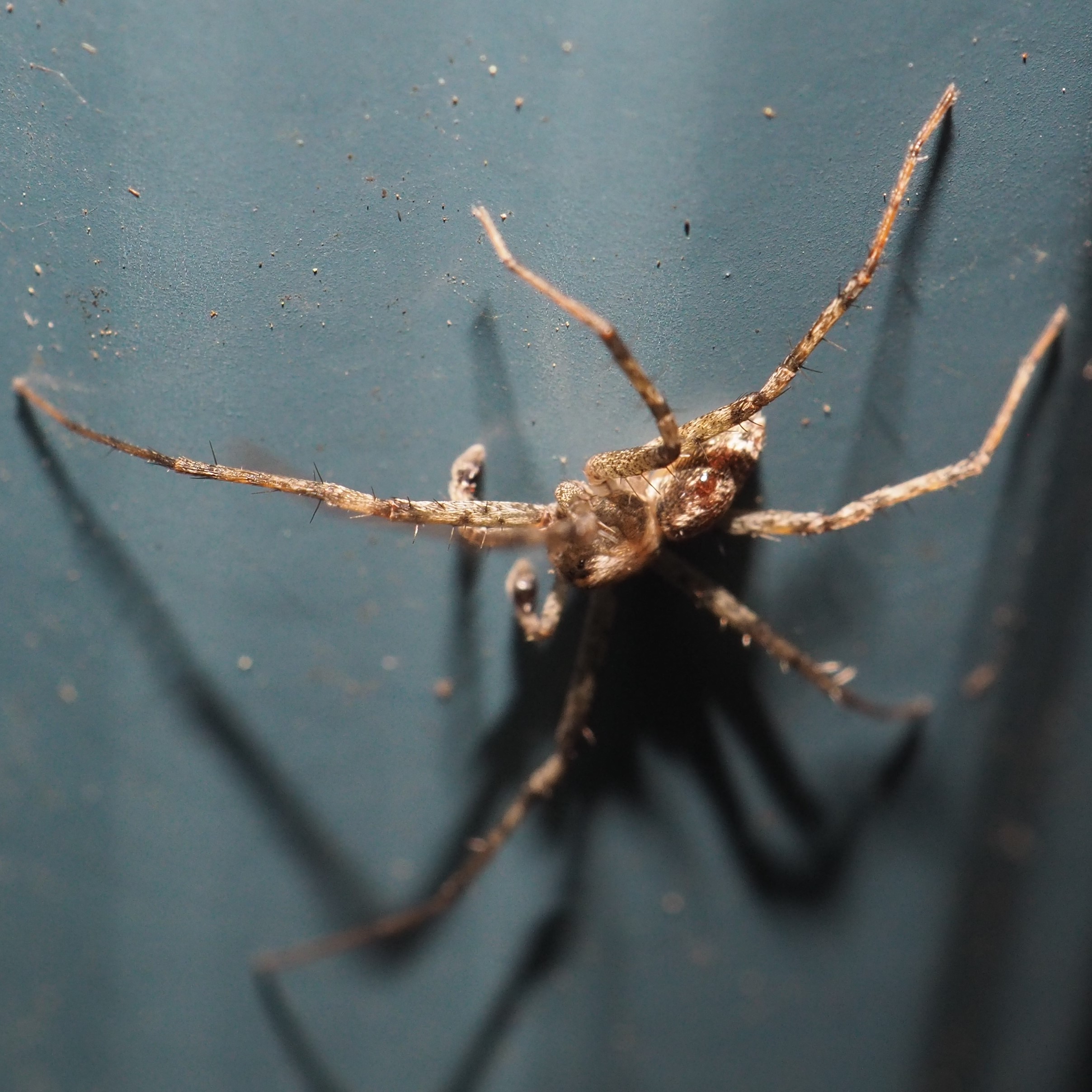
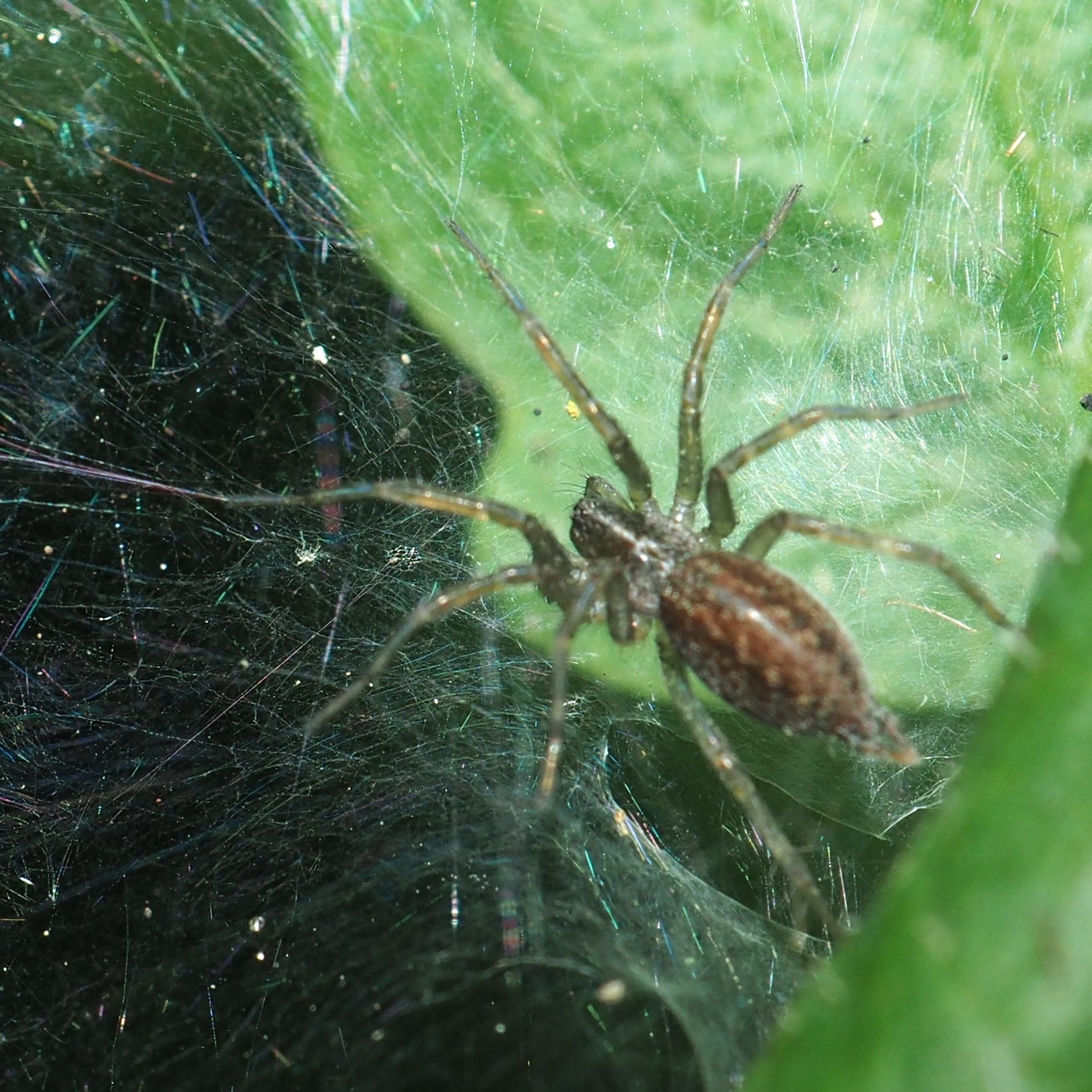
This is a black-and-white Jumping Spider. Second is another Jumper, our friend Naphrys pulex. The third one is not a Jumper, but is my personal pal the Pirate Spider, Mimetus puritanus. Note that M. puritanus is holding onto a good-sized spider as prey! Or is that a mating pair? Help, someone! OK, @tigerbb (Rebecca Ray) of iNat says since if the big bug is a male, it is more likely to be smaller than a female, so this is probably a case of aggression (feeding, etc).
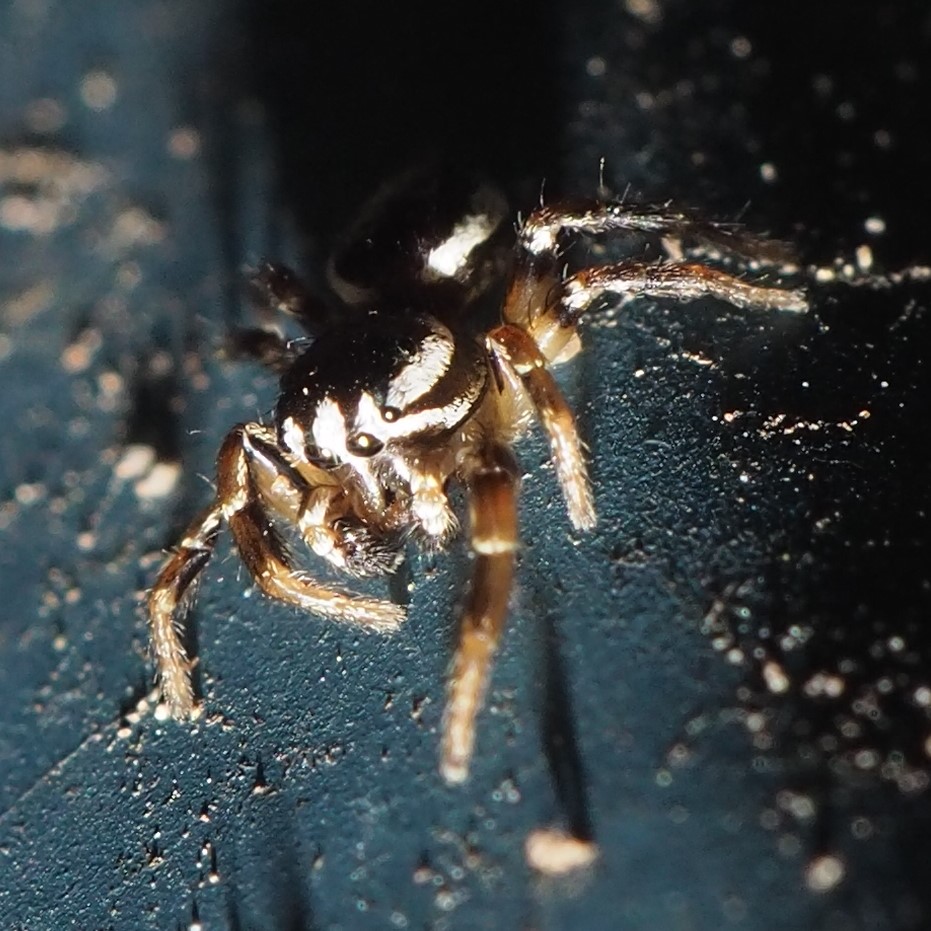

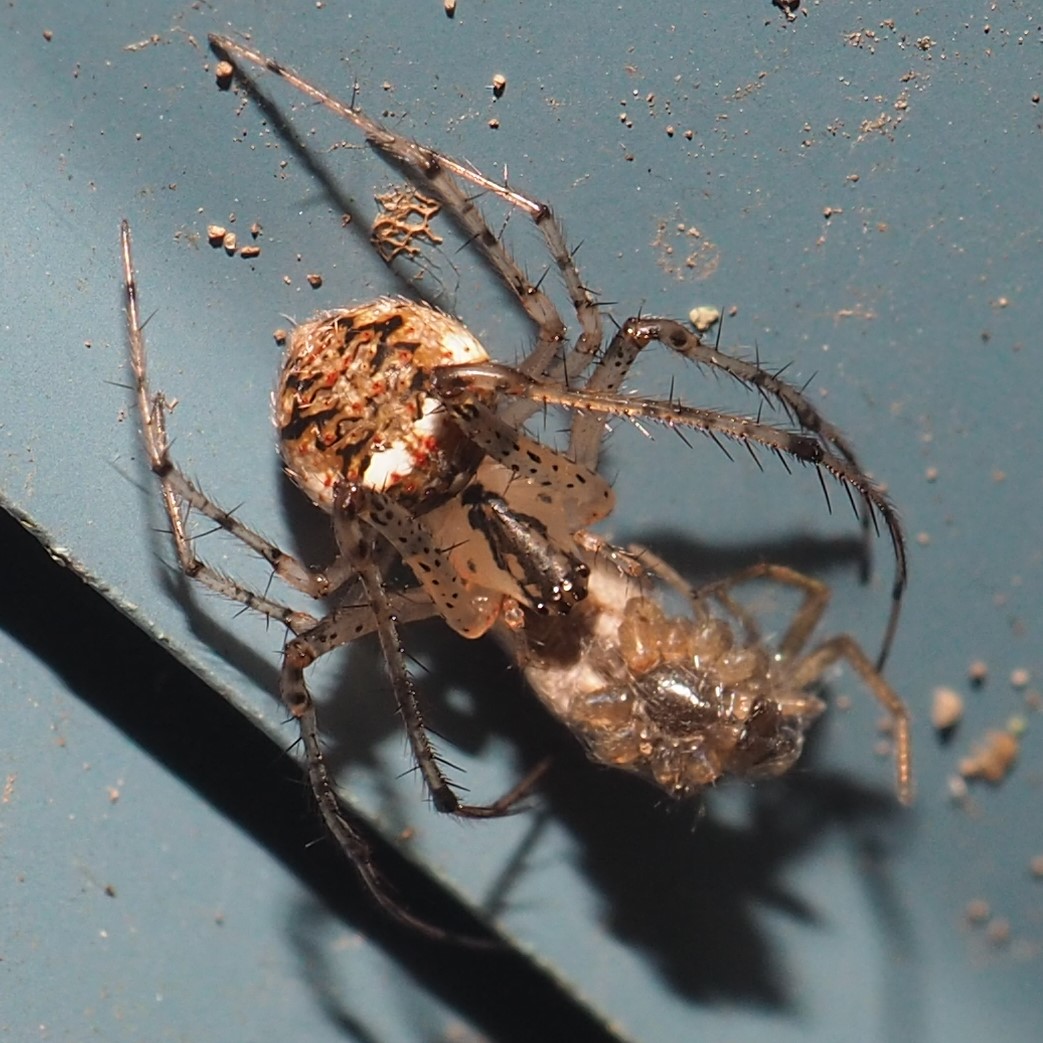
We've been spotting Orchard Orbweavers (mostly on the Shop siding) Heall Spring, and lately have been having more luck finding them out in the ground covers. Here is one underneath a leaf out in the dark part of the yard! Remember that this popular spider is a so-called long-jawed spider. Don't get confused with that "long-jawed" part of the name. Actually the abdomen is also long, and so are the front legs. You may remember that last week we were watching a member of the genus Tetragnatha. This week I thought I'd found a new locus for the genus, but Matt and Rebecca from iNat convinced me that they were not of that genus, but Enoplognatha. In fact this new spider is Enoplognatha ovata, the Common Candy-striped Spider. I took a lot of pictures of it because it was hiding in the seed-head left over from our dearly departed Goutweed. I had no recollection of how very tiny these spiders are. In fact, I also missed the fact that many of the pictures of E. ovata actually contained another slightly different spider, which turned out to be the mate of the original one. Finally I got the mate to let me take a picture from another angle which showed the red stripe on its abdomen (picture 3). It turns out the one with the red stripe is the male!
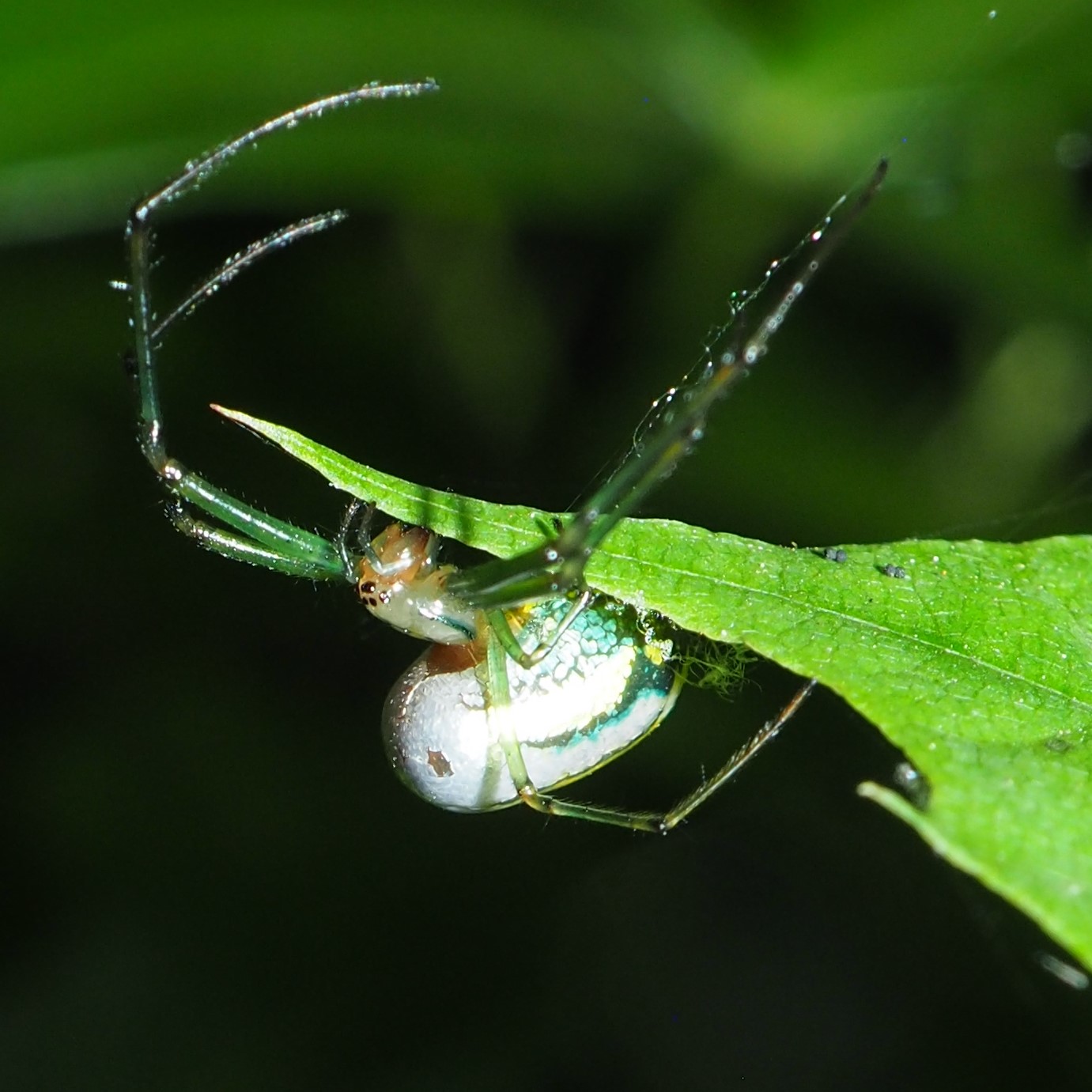
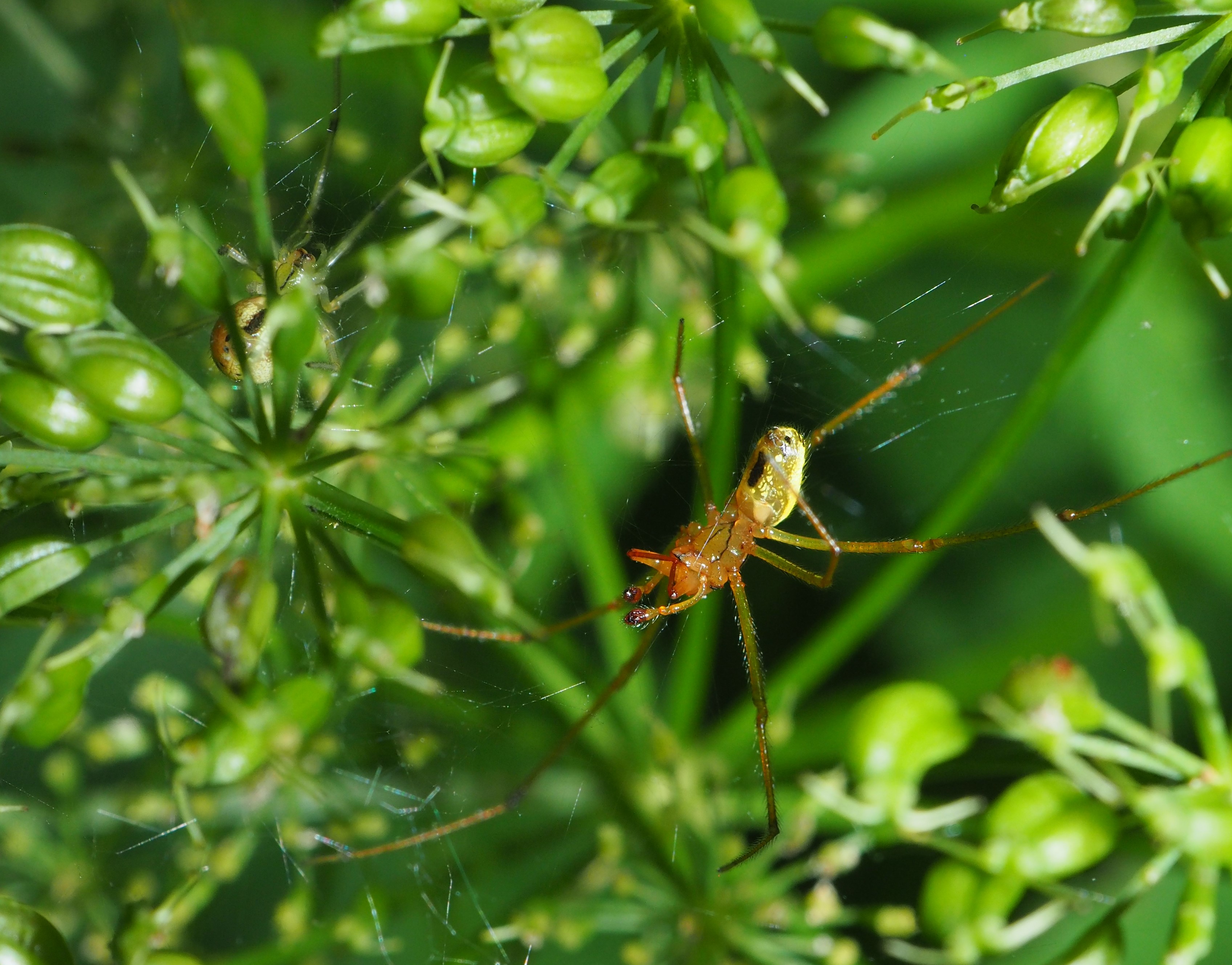
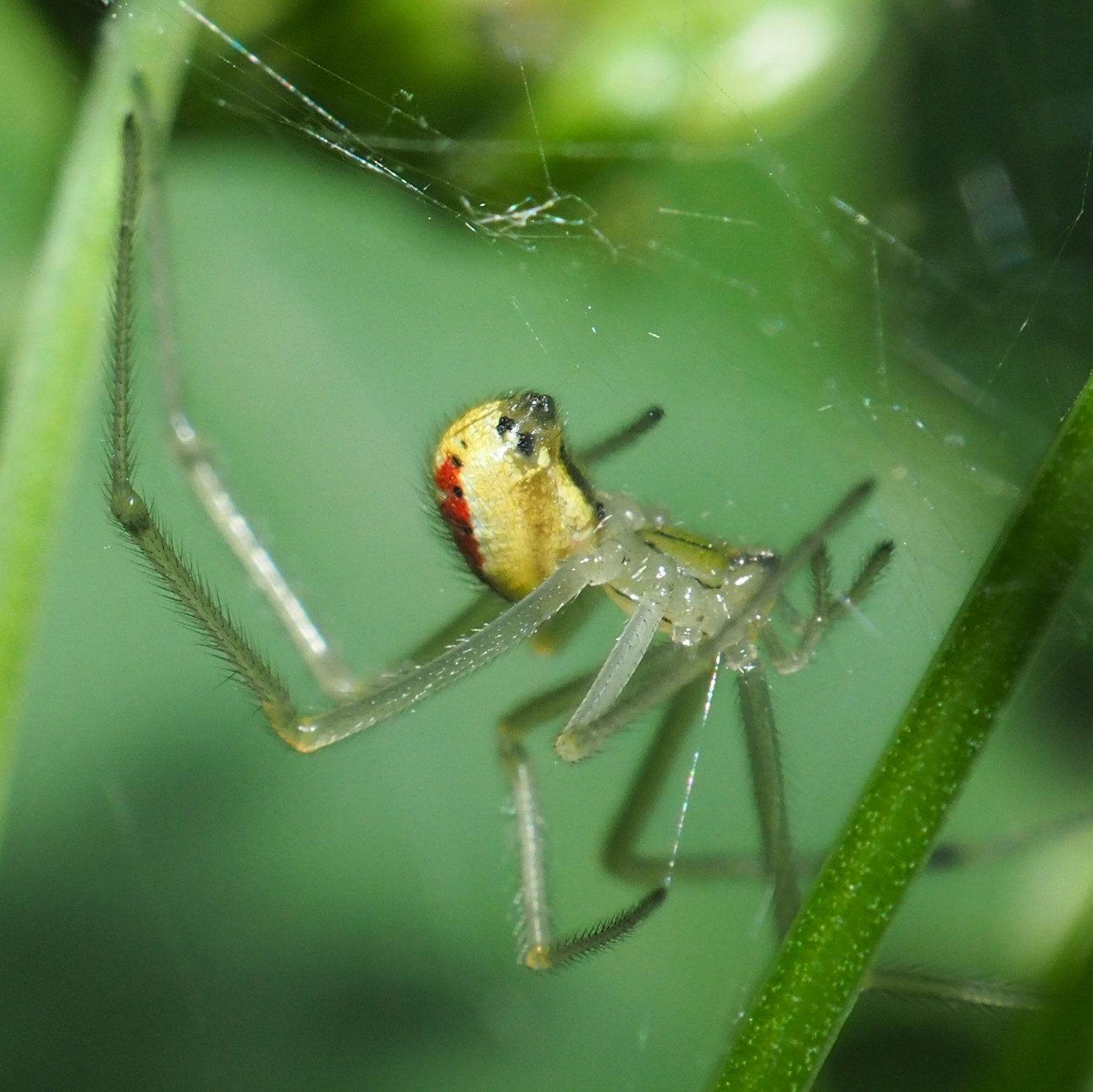
Just a couple more pictures. Here is a Cross Orbweaver, my beloved cat Spooky (she arrived at my back door a week or two before Halloween about 12 years ago), and another Wasp of the genus Cerceris.
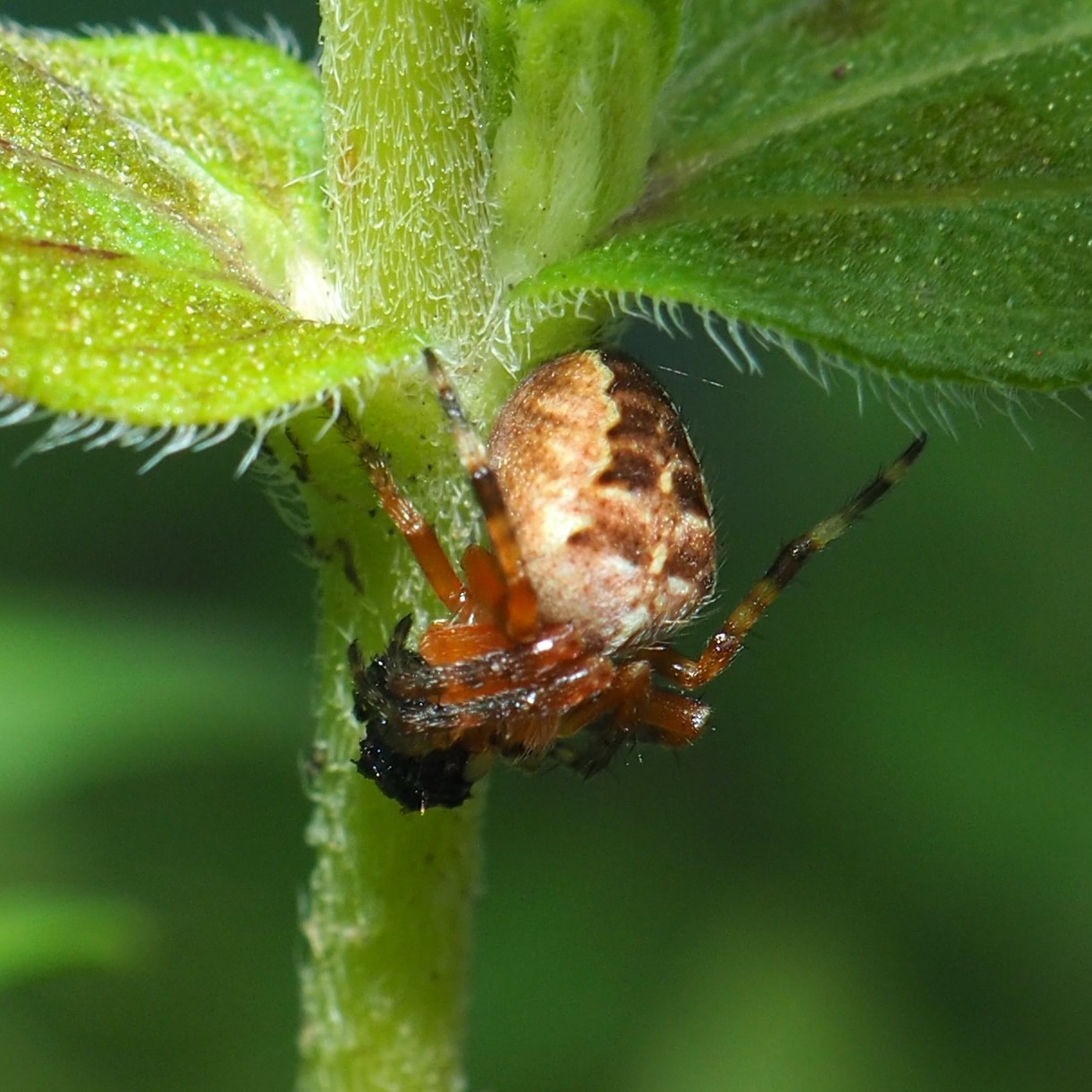
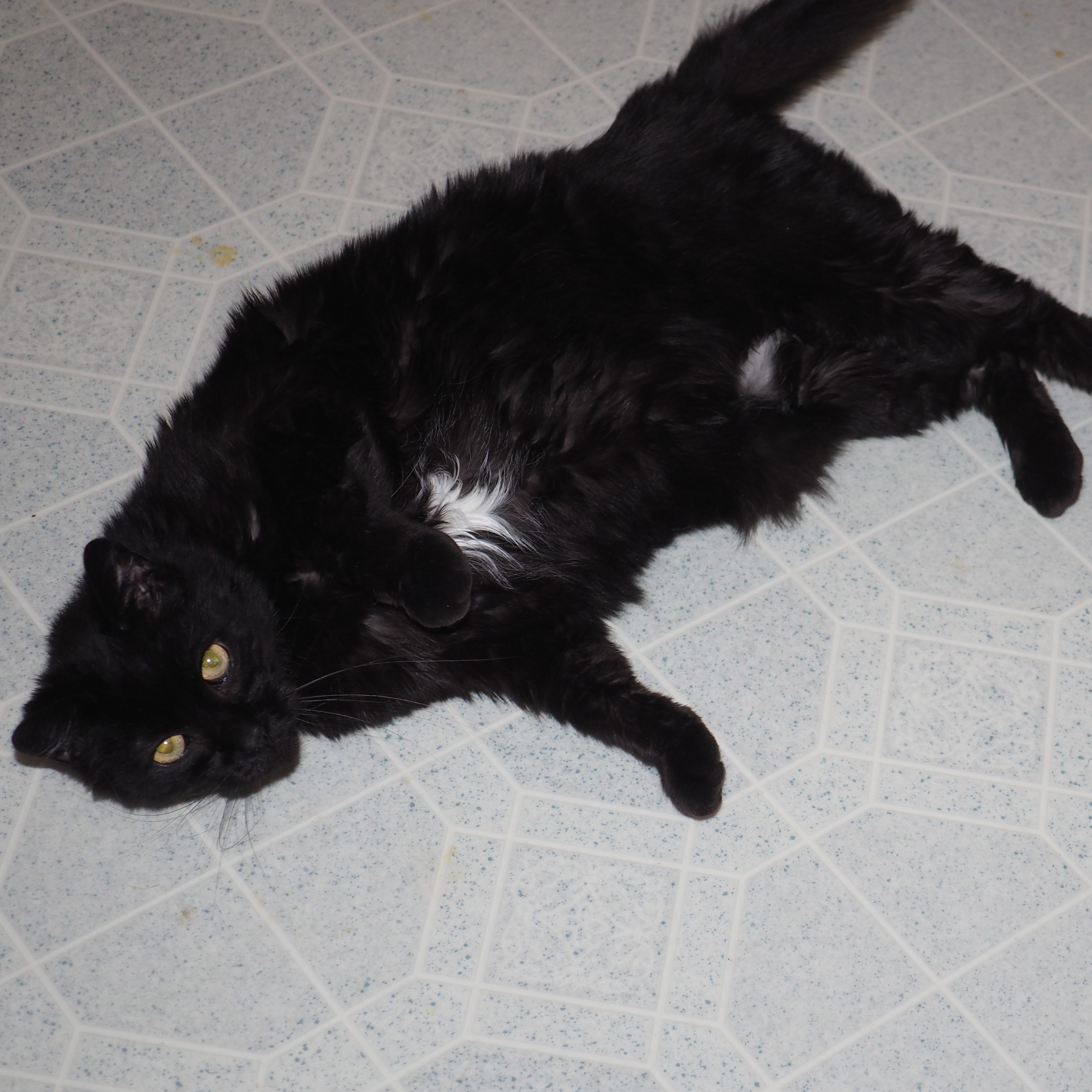
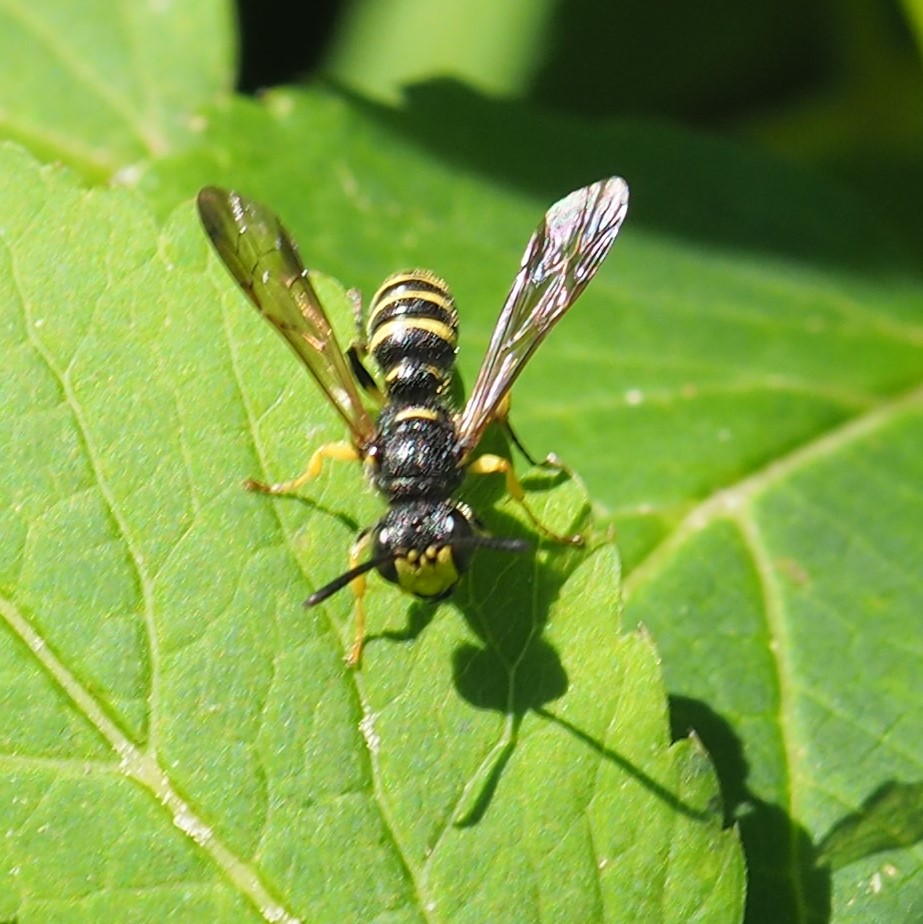
And some more tiny Ichneumonid Wasps. The first two are of the same female, as you can tell because of the ovipositor. We can't tell about the one in picture #3.
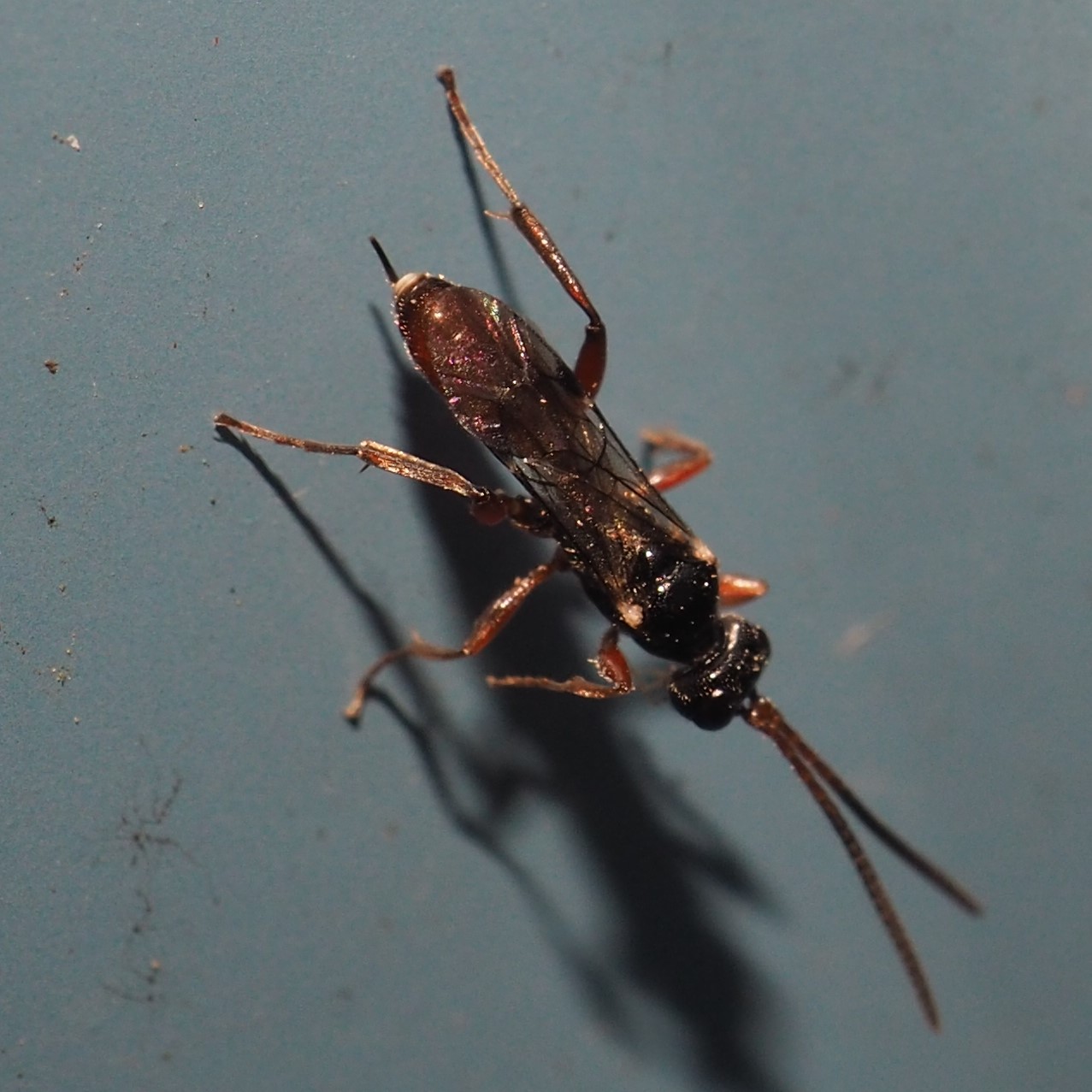
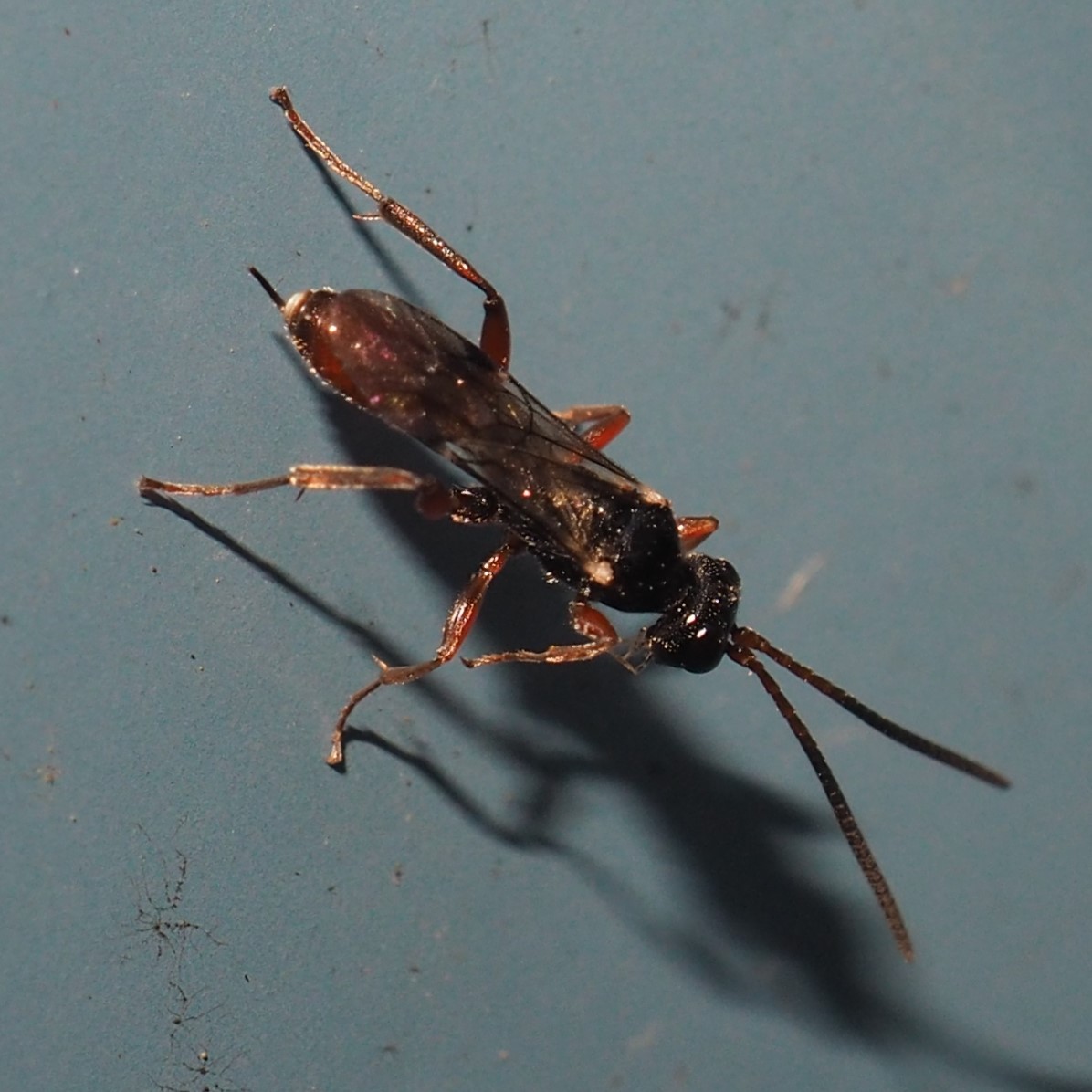
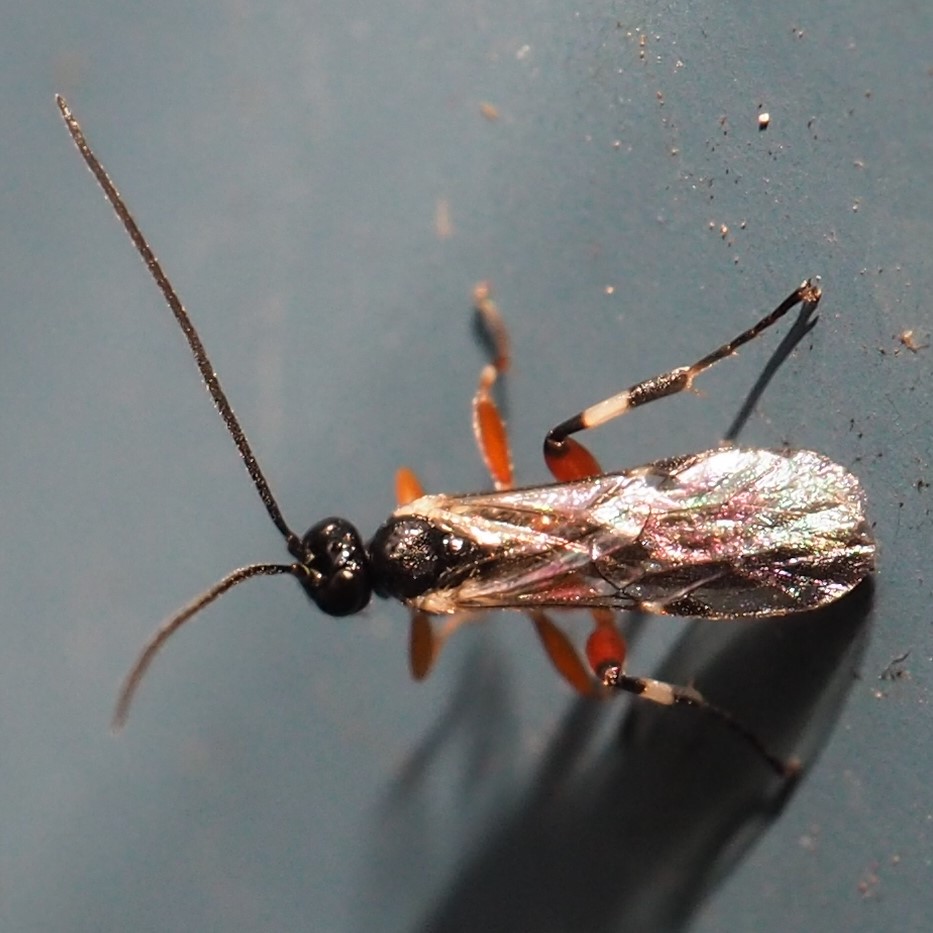
A few more flowers, just to end on a colorful note. These are the two window boxes that sit on the deck railing.
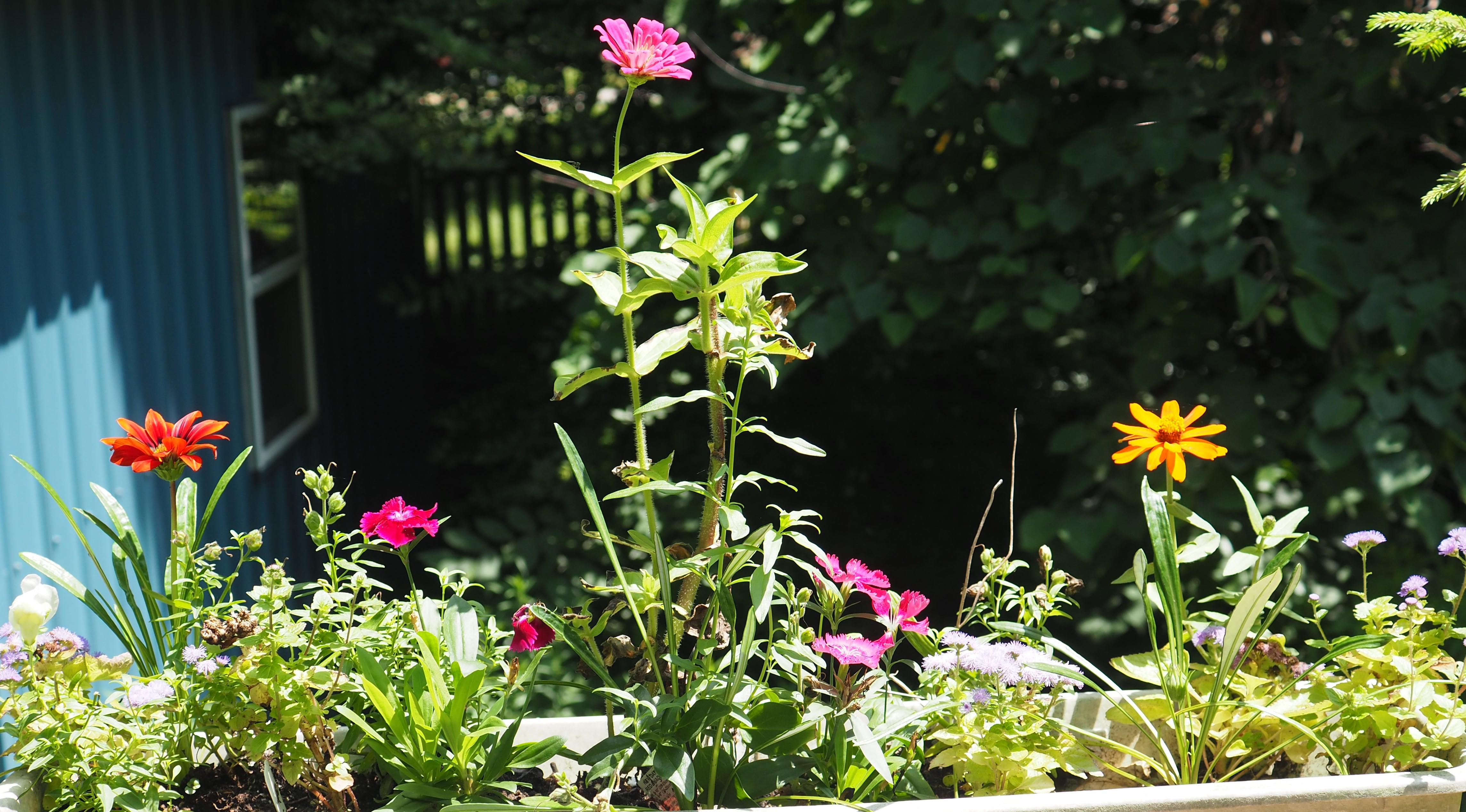
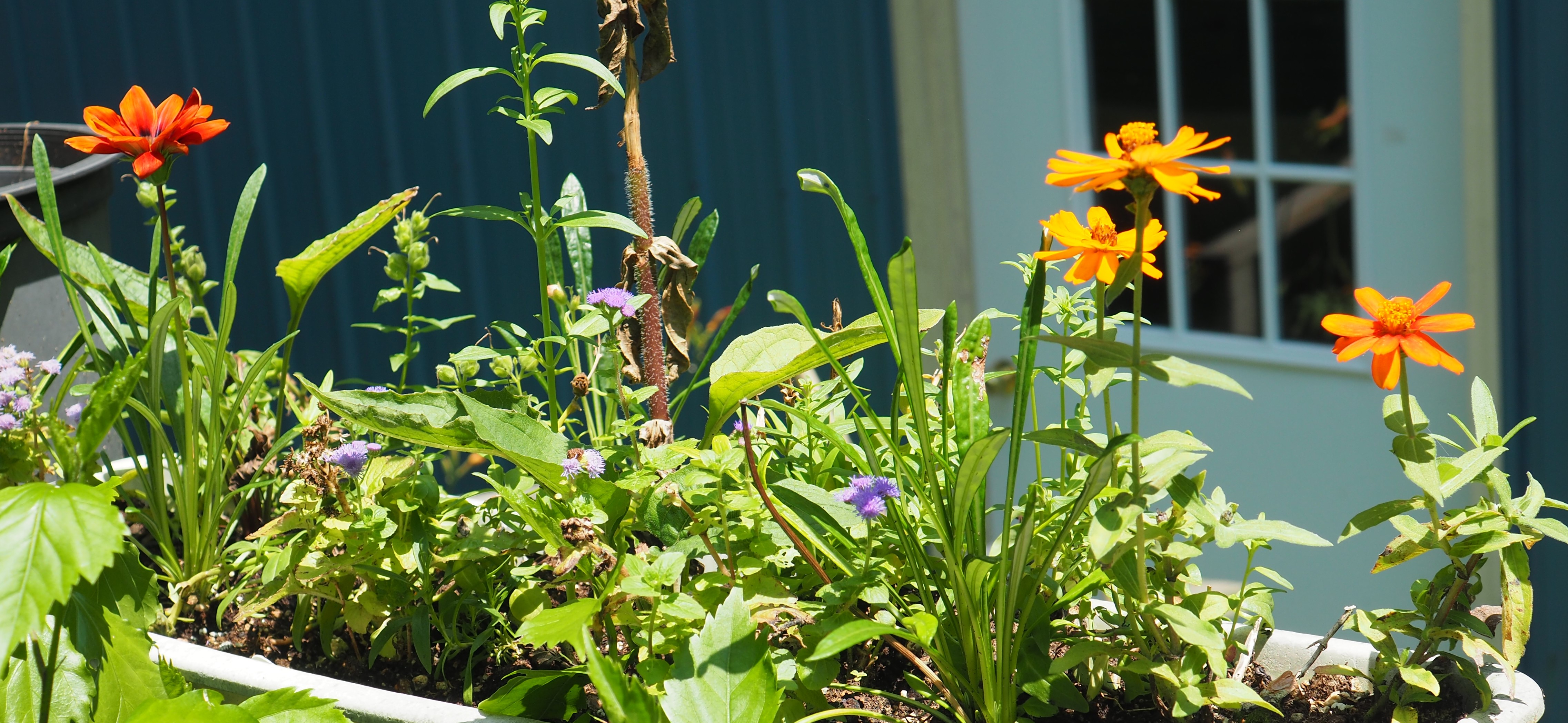
Now that the Trumpetvine is blooming, here's an Ant on a bud, and two color-morphings of that picture.
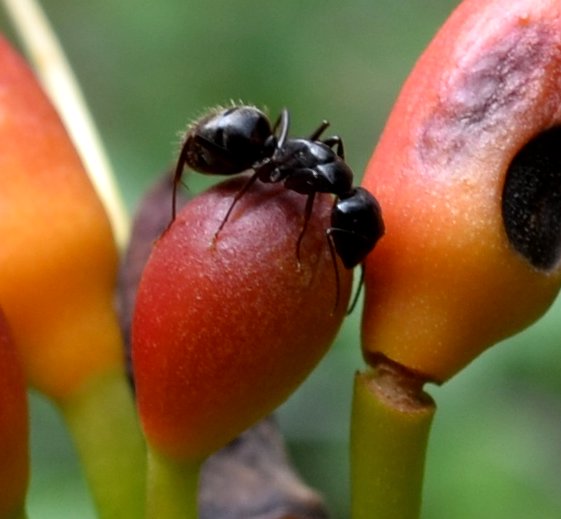
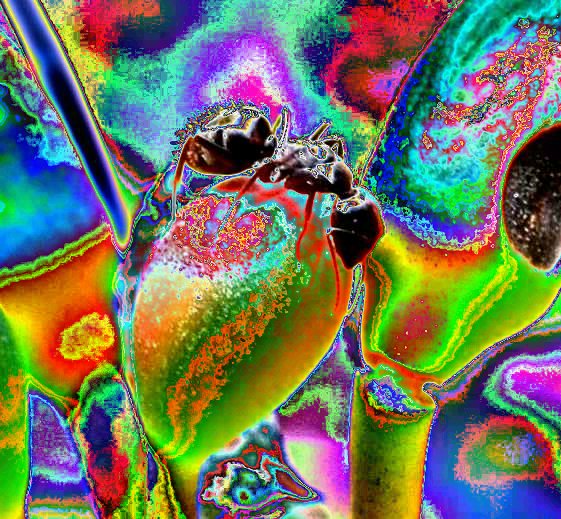
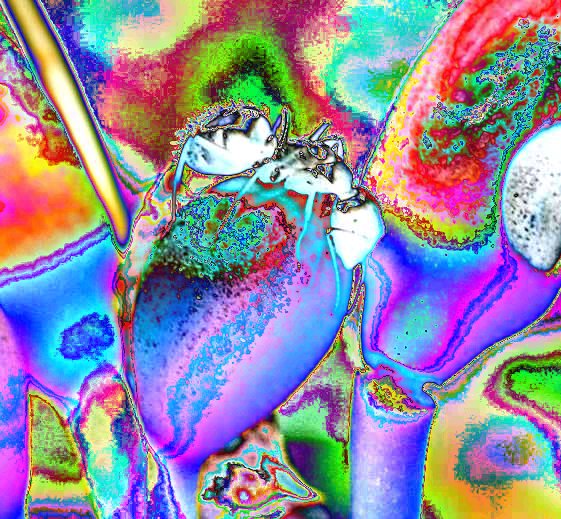
Summer will hit its hot point up here in the Northern Hemisphere about August 2. We can survive - but we have to get the ones in charge to take the global climate destabilization seriously. Keep well!
Love,
Martha
Back to July 7, 2019
Forward to July 21, 2019
Back to main menu
copyright Martha O'Kennon 2019



























































































































